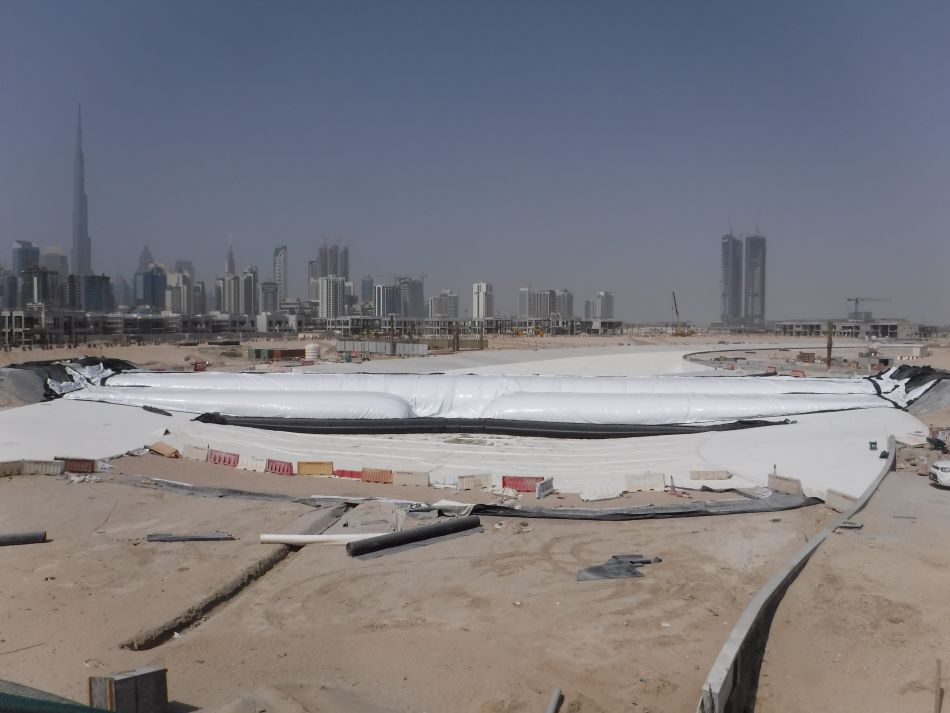
At MBRAM City, District One, in Dubai, UAE, site contractors chose to purchase two (2) sets of AquaDams to provide temporary lagoon channel isolation. This pictorial will focus on the first installation of the "Set A" AquaDams. Each Set consists of one (1) 16ftx300ft long unit, two (2) 12ftx150ft long units, one (1) 4ftx300ft long unit, and 12mil thick polyethylene cover tarps for UV protection and aesthetics.
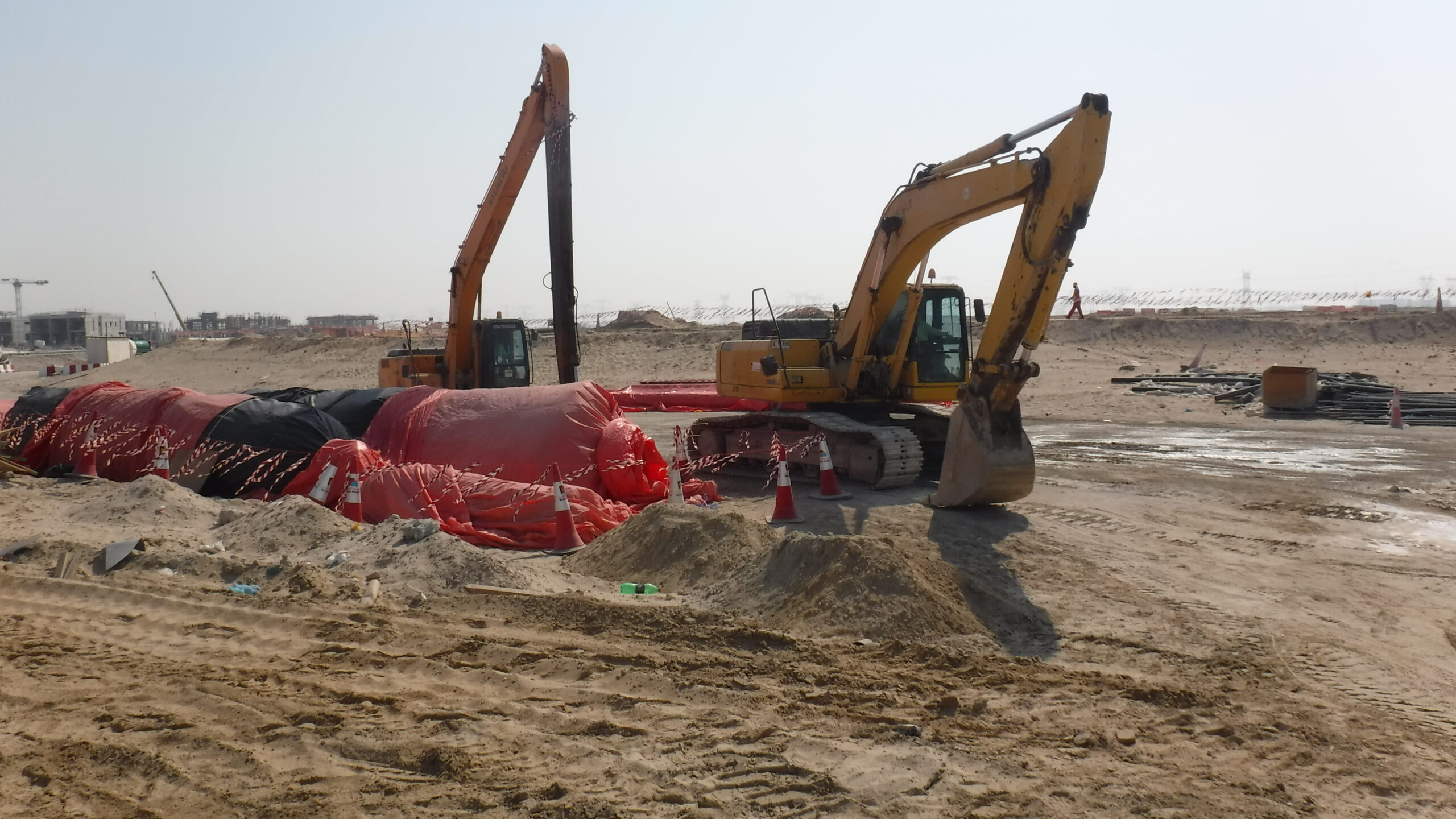
The "Set A" AquaDams were shipped from California to Dubai by ocean freight, inside of 40ft long shipping containers. Once on site, the AquaDams were covered with an orange sheeting to help with UV protection.
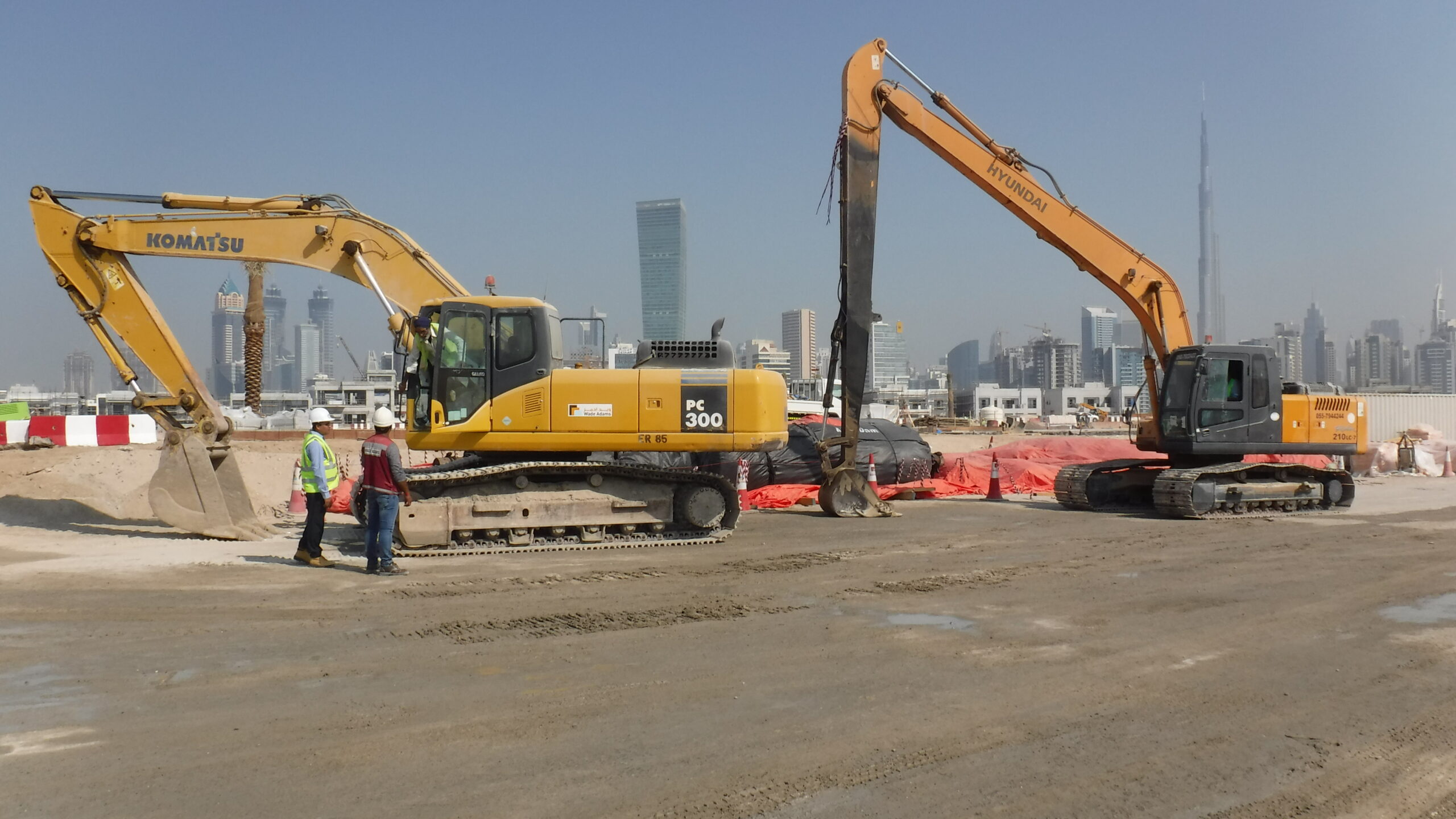
These two (2) excavators together did not have enough power to lift the dry weight of the 16ft tall by 300ft long AquaDam.
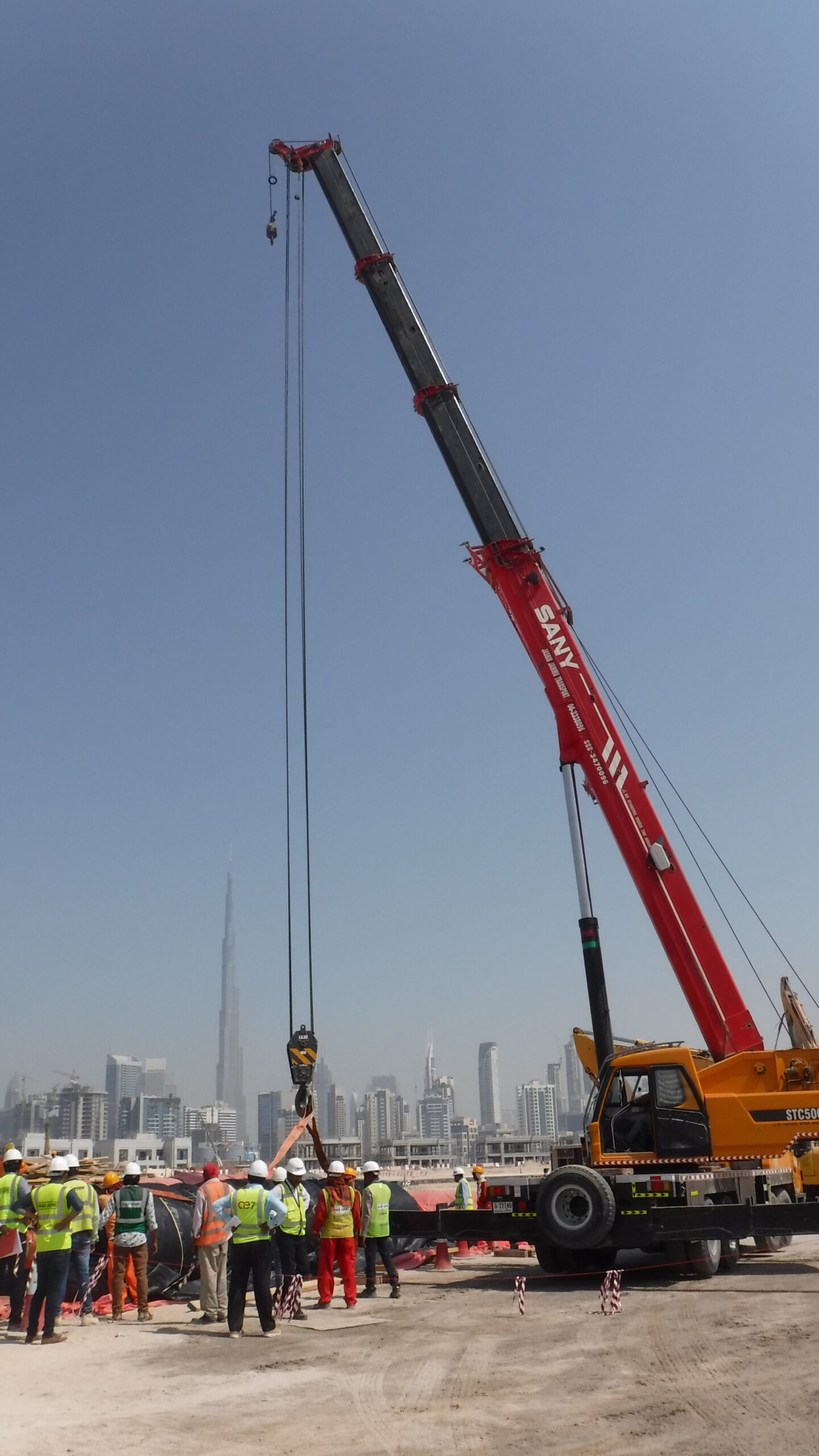
Next one (1) crane was used, but one (1) alone did not have enough power to lift the 16ft tall AquaDam.
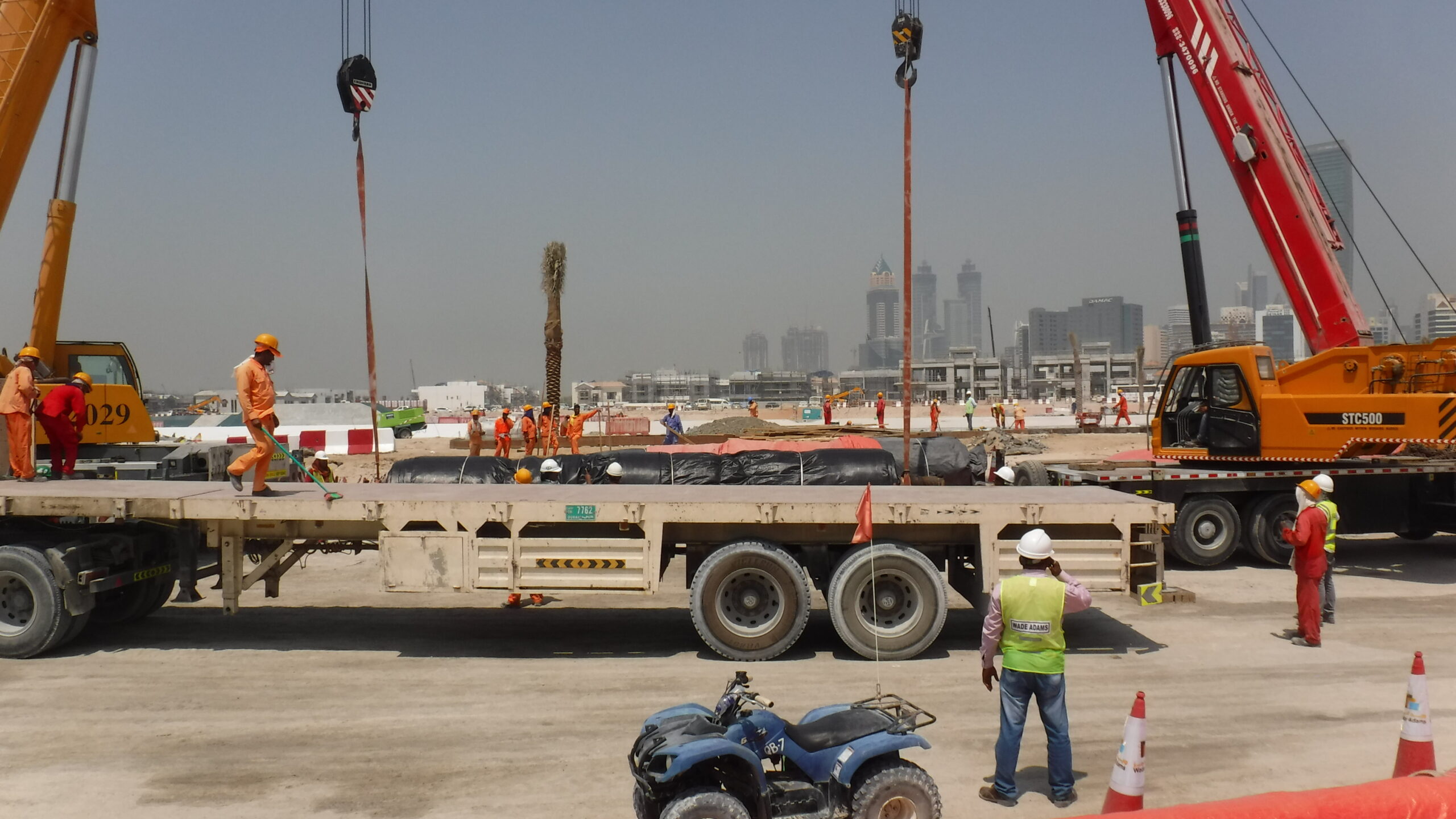
The contractor decided that two (2) cranes would be needed to lift the large AquaDam onto the trailer. The truck and trailer were used to transport the AquaDam to the installation site. Once on site, equipment will need to be used again to move the dam from the trailer to the top of the installation berm (starting bank).
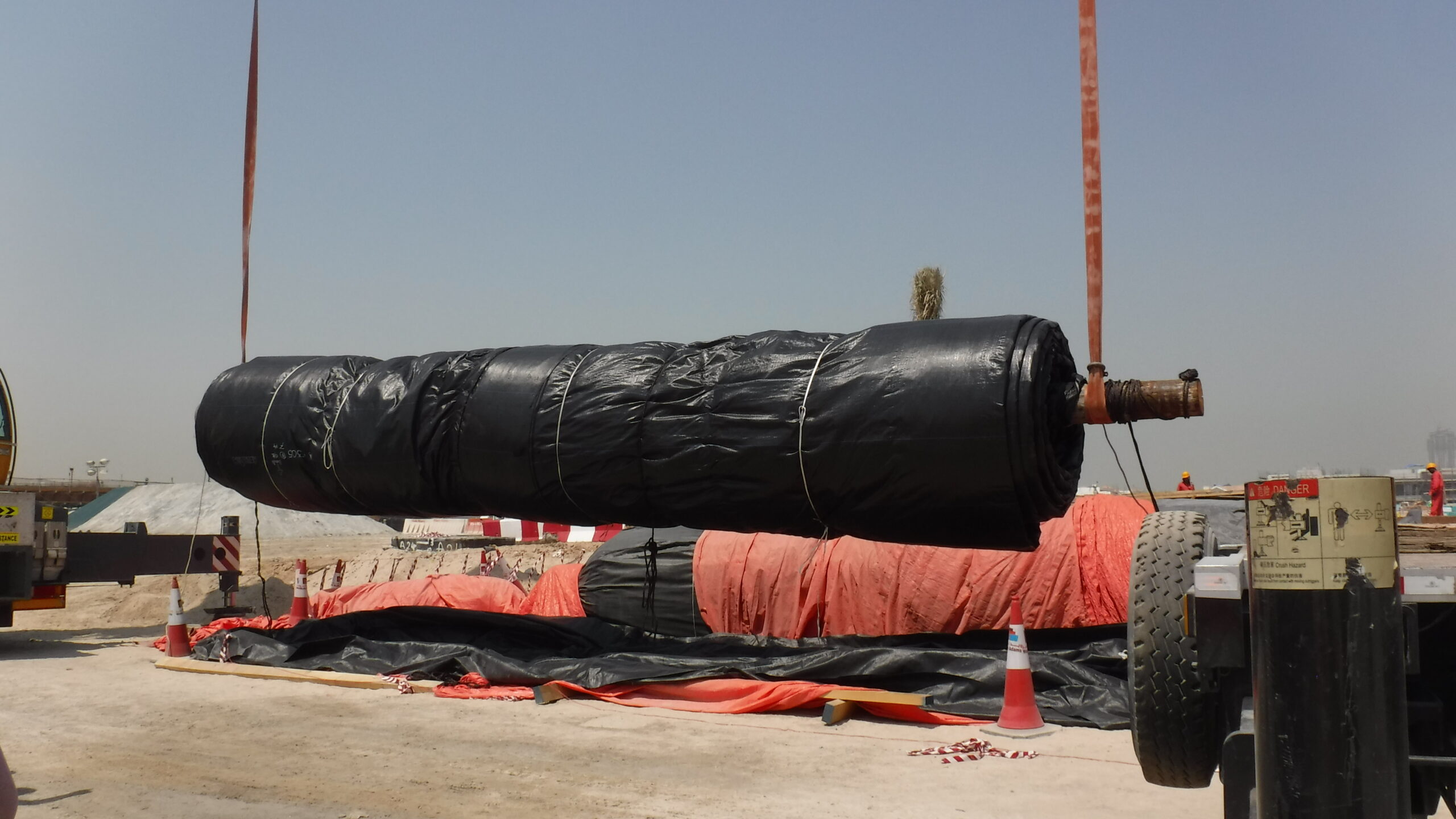
The 16ft tall AquaDam is now on the truck, so it can be secured and then transported to the starting bank at the installation site.
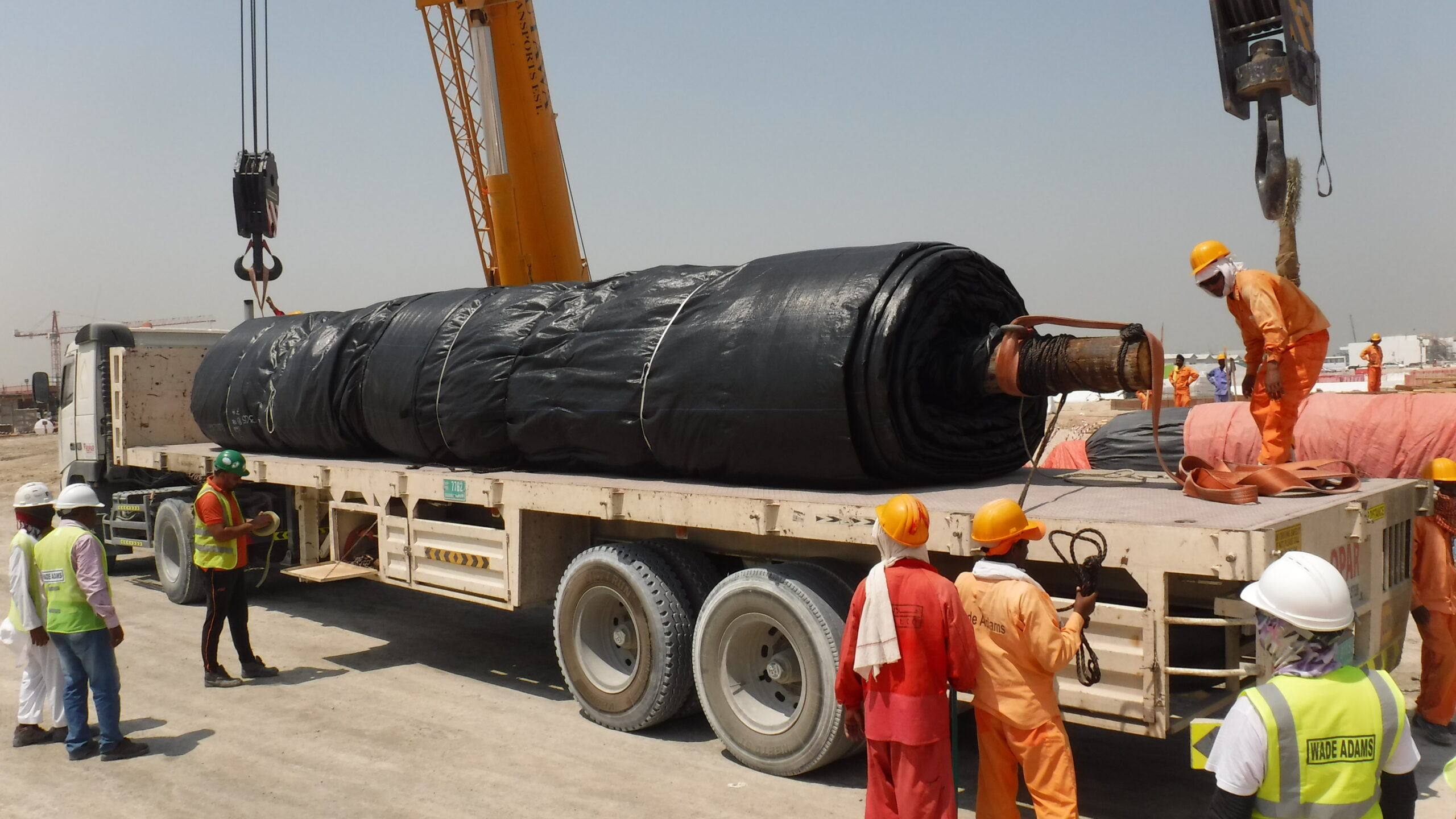
The 16ft tall AquaDam is now on the truck, so it can be secured and then transported to the starting bank at the installation site.
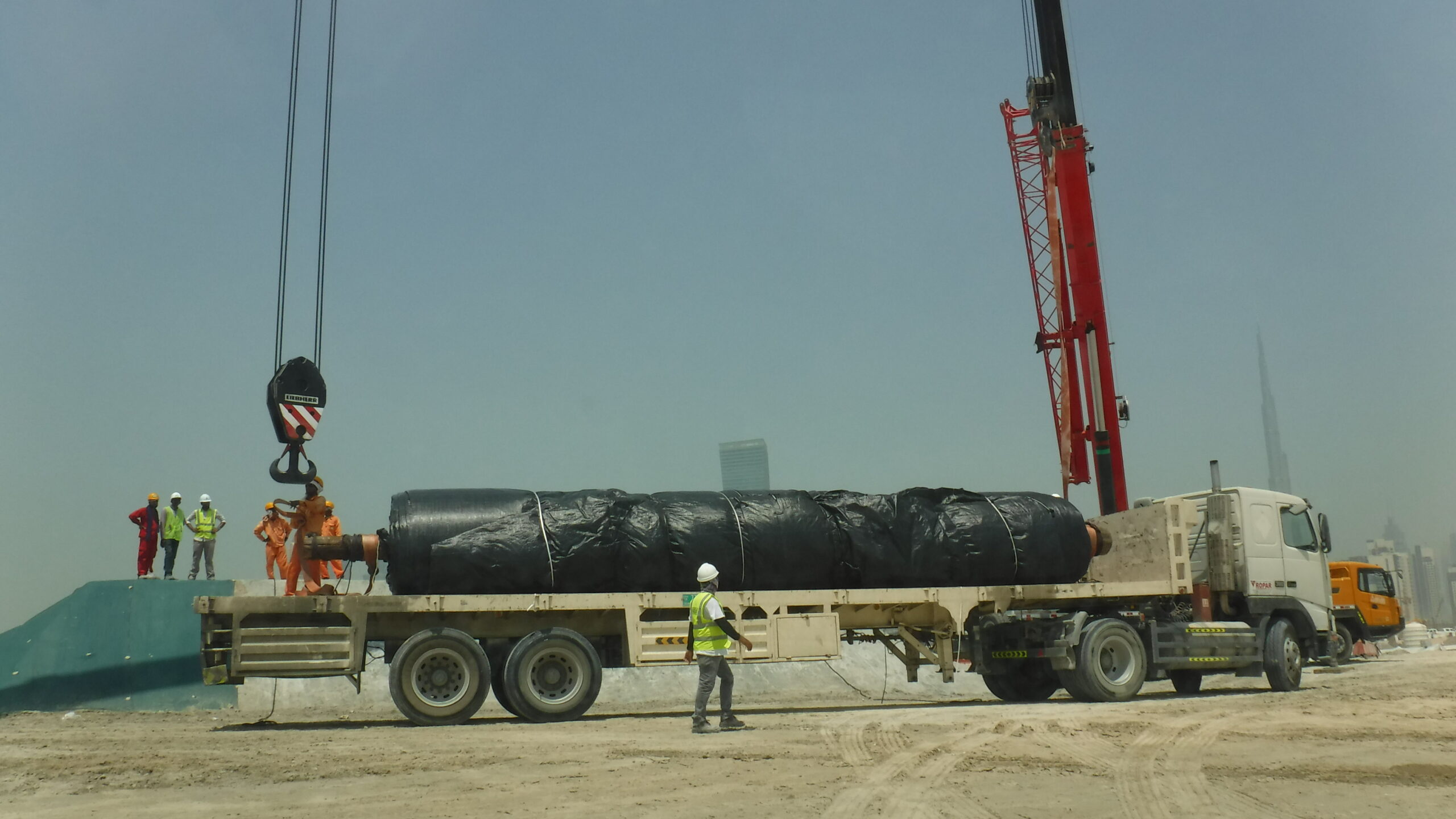
The truck and trailer have arrived at the starting bank of where this 16ft tall AquaDam will be installed.
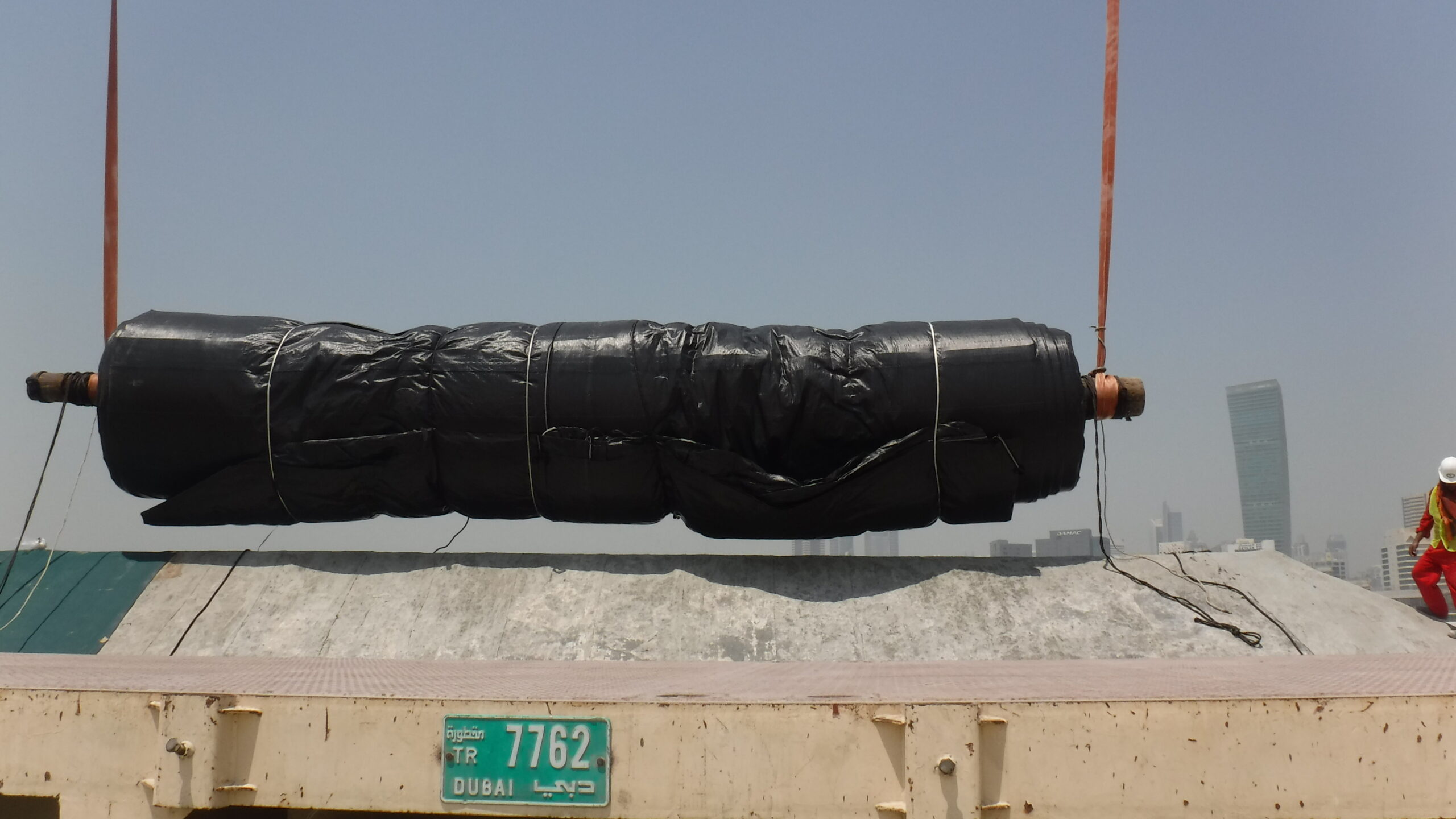
The starting bank for an AquaDam must be higher in elevation than the maximum height of the AquaDam along it's given path. The width of the starting bank must be wide enough to compensate for the width of the AquaDam being used.
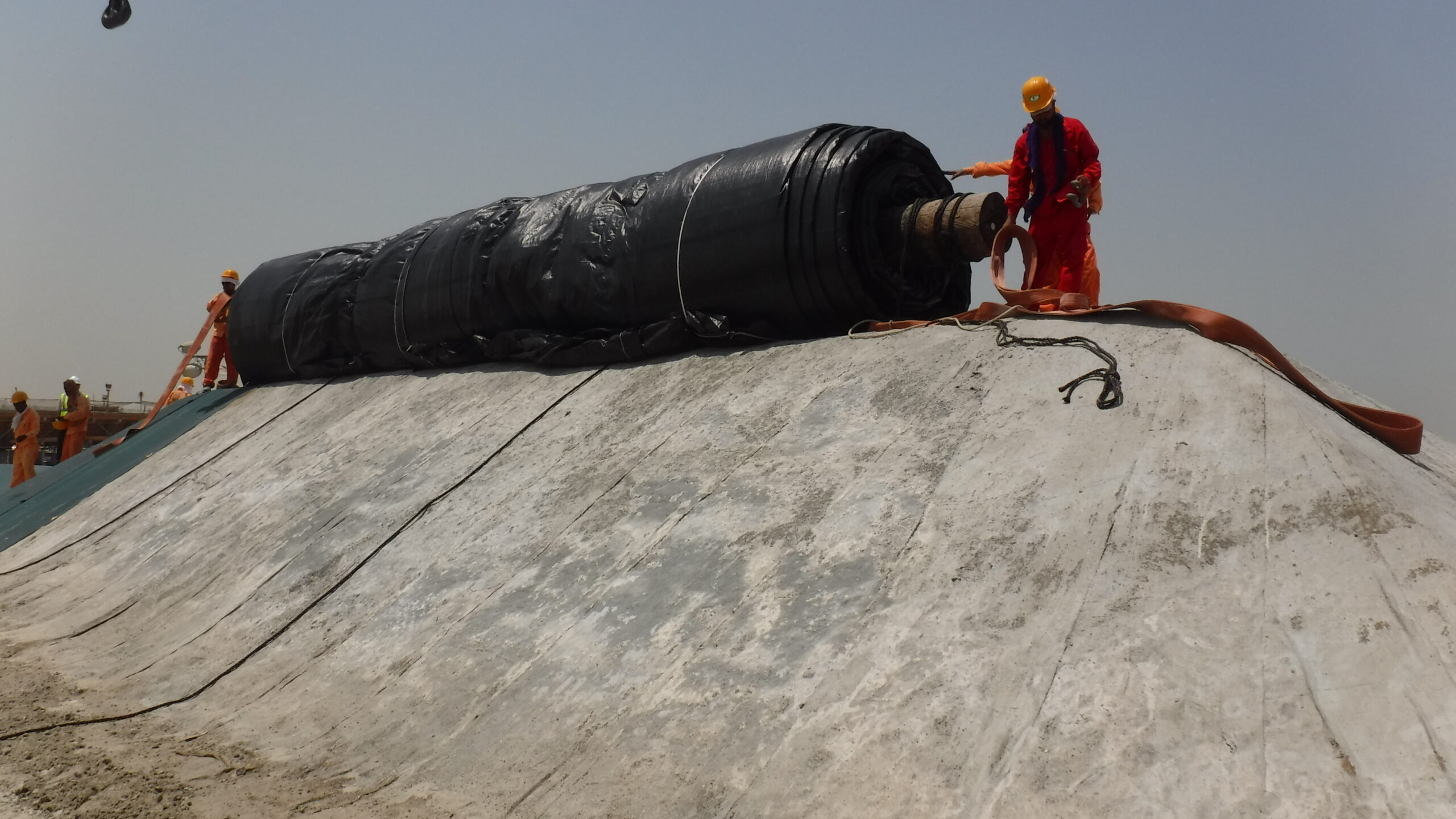
The AquaDam is now situated nicely at the top of the starting bank. It's very important to make sure the AquaDam is facing the right way, so that it unrolls down the bank when you push on it.
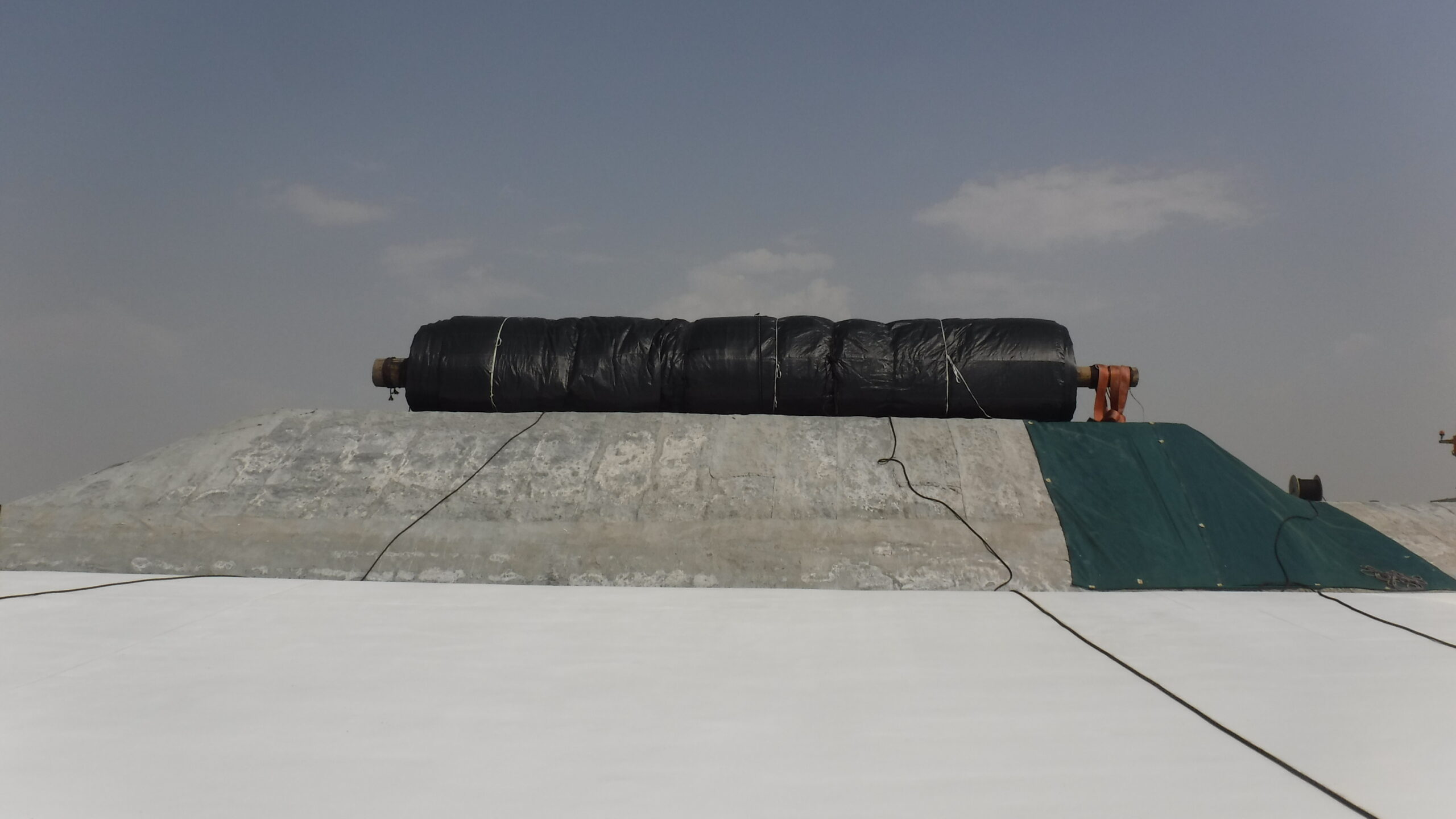
The 16ft AquaDam is centered at the top of the starting bank. The green area marks an area of elevation transition at the top of the berm. This was later rectified to better support the 12ft tall AquaDams that were installed.
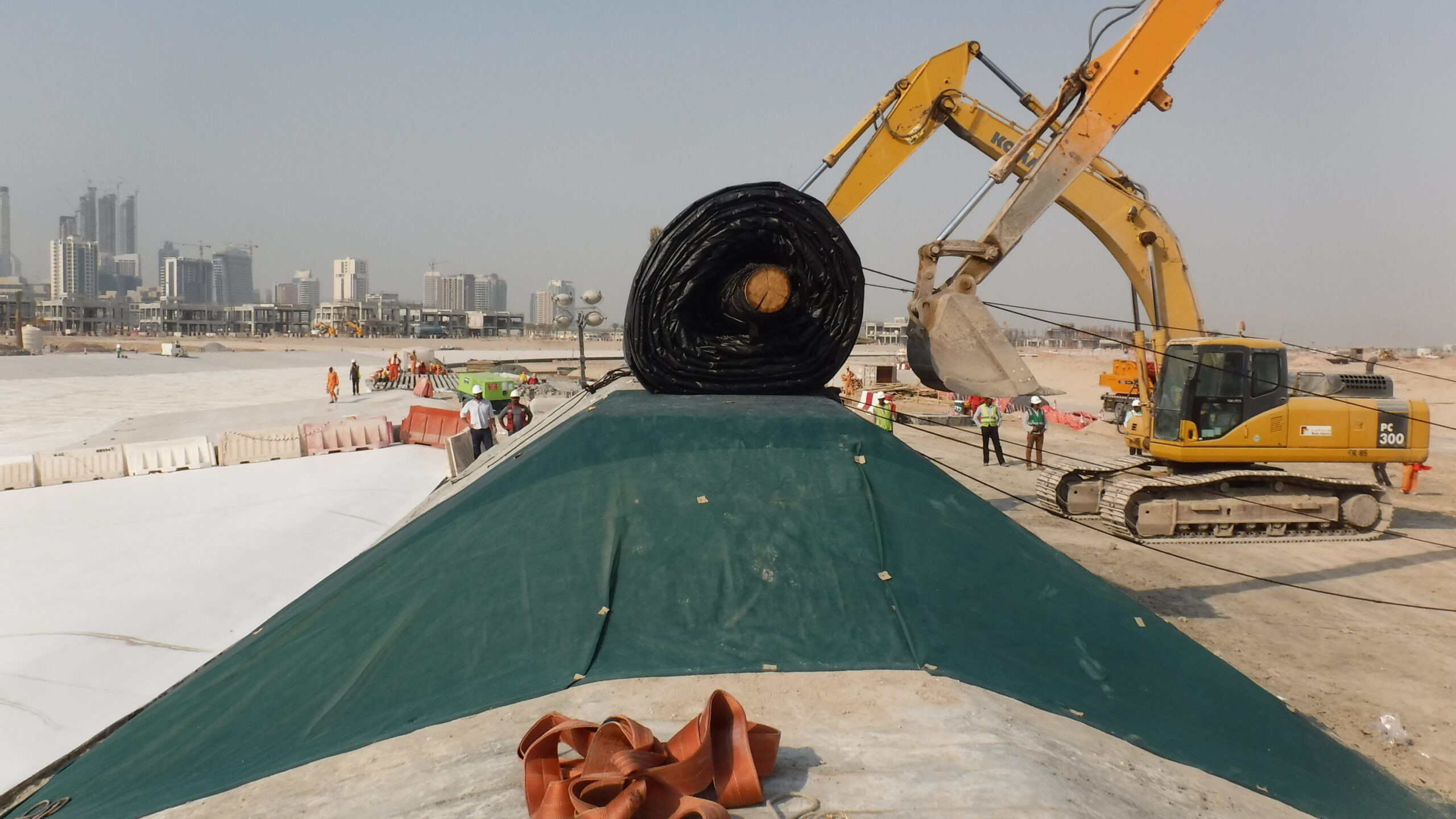
The excavators push on the AquaDam, and ropes are used to restrain the dam as it descends the working face of the starting bank.
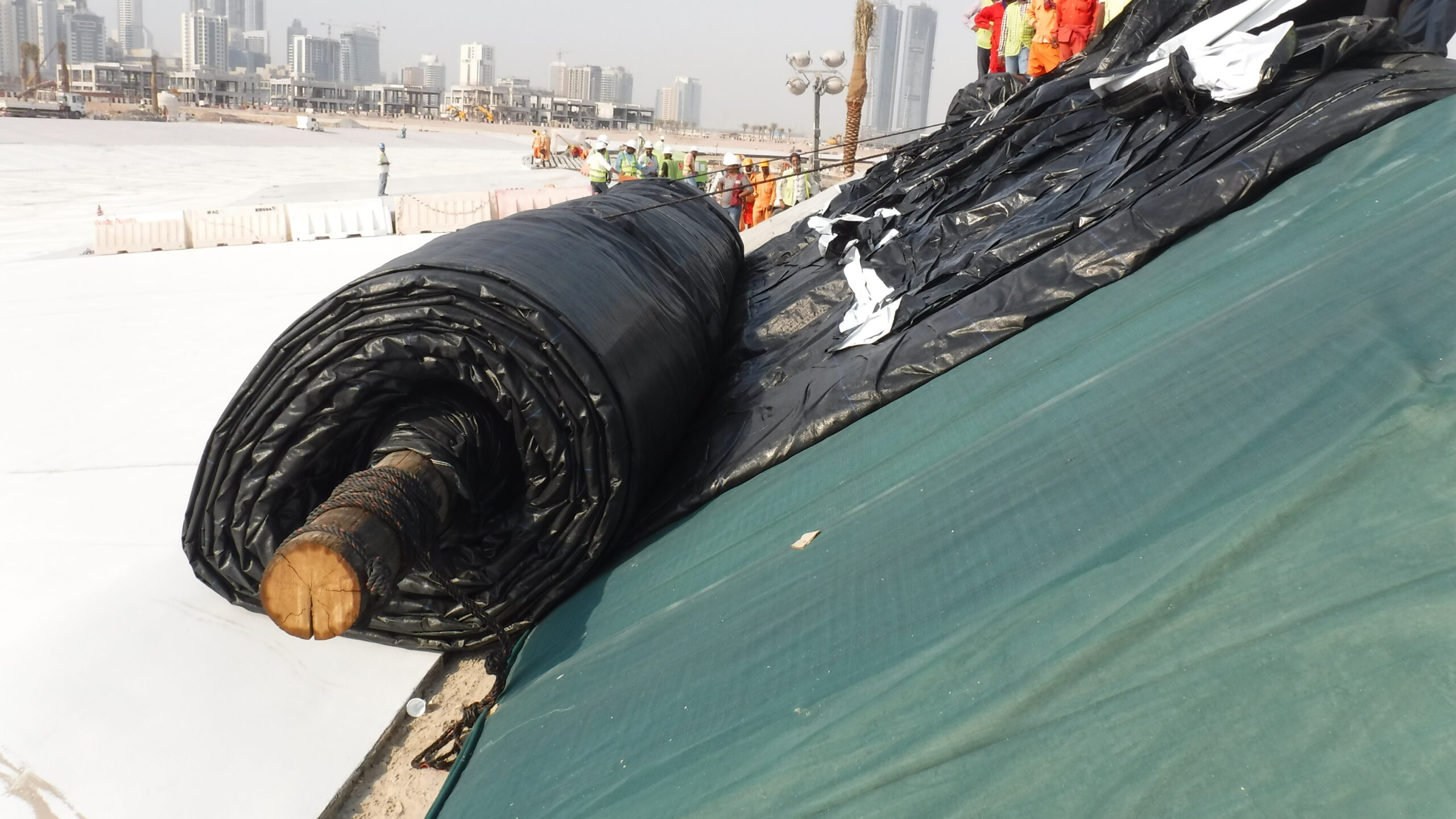
The AquaDam is at the toe of the starting bank now, which is at the top of the artificial lagoon channel. The fill-tubes at the open end of the AquaDam are ready to be unfolded back up and over the starting bank.
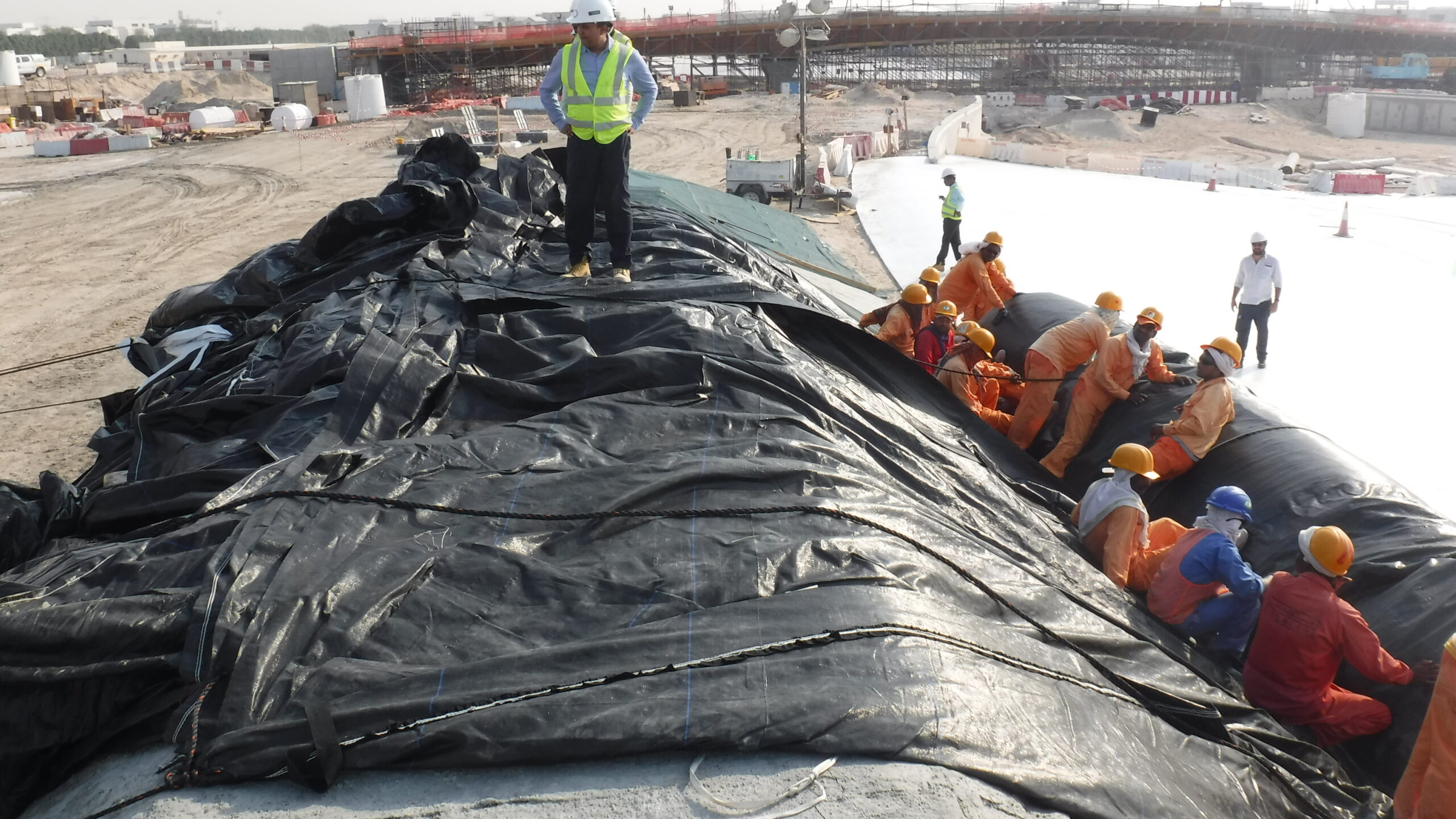
The open end has been unfolded up and over the top of the starting bank. After the open end was exposed, it was tied off to anchor points to stop the material from sliding down the work face of the starting bank.
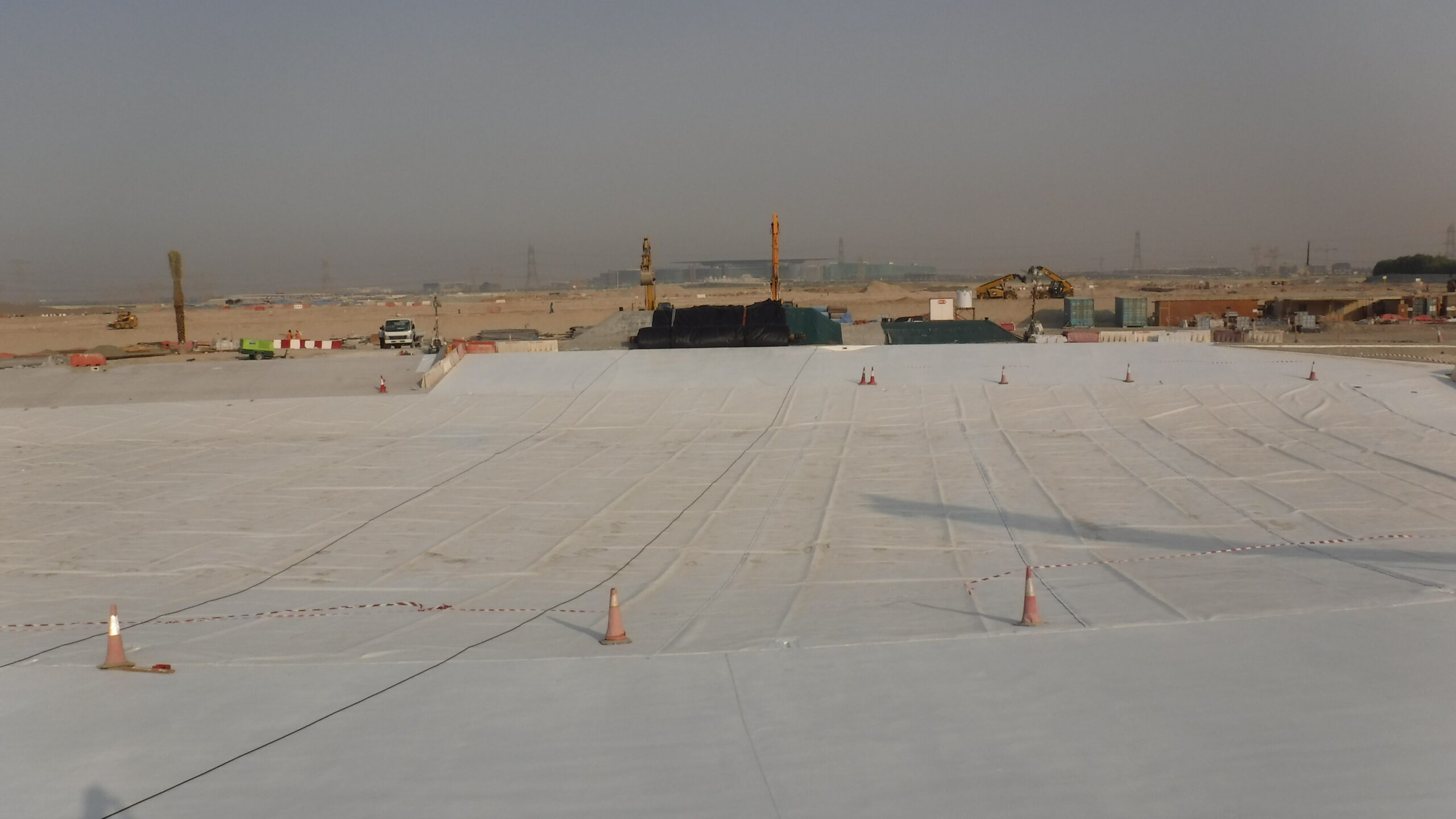
Here is a look down the intended installation path of the AquaDam. There is a rope wrapped around each end of the wooden core that the 16ft tall AquaDam is rolled around. These ropes will be pulled, using heavy equipment, to make the AquaDam unroll.
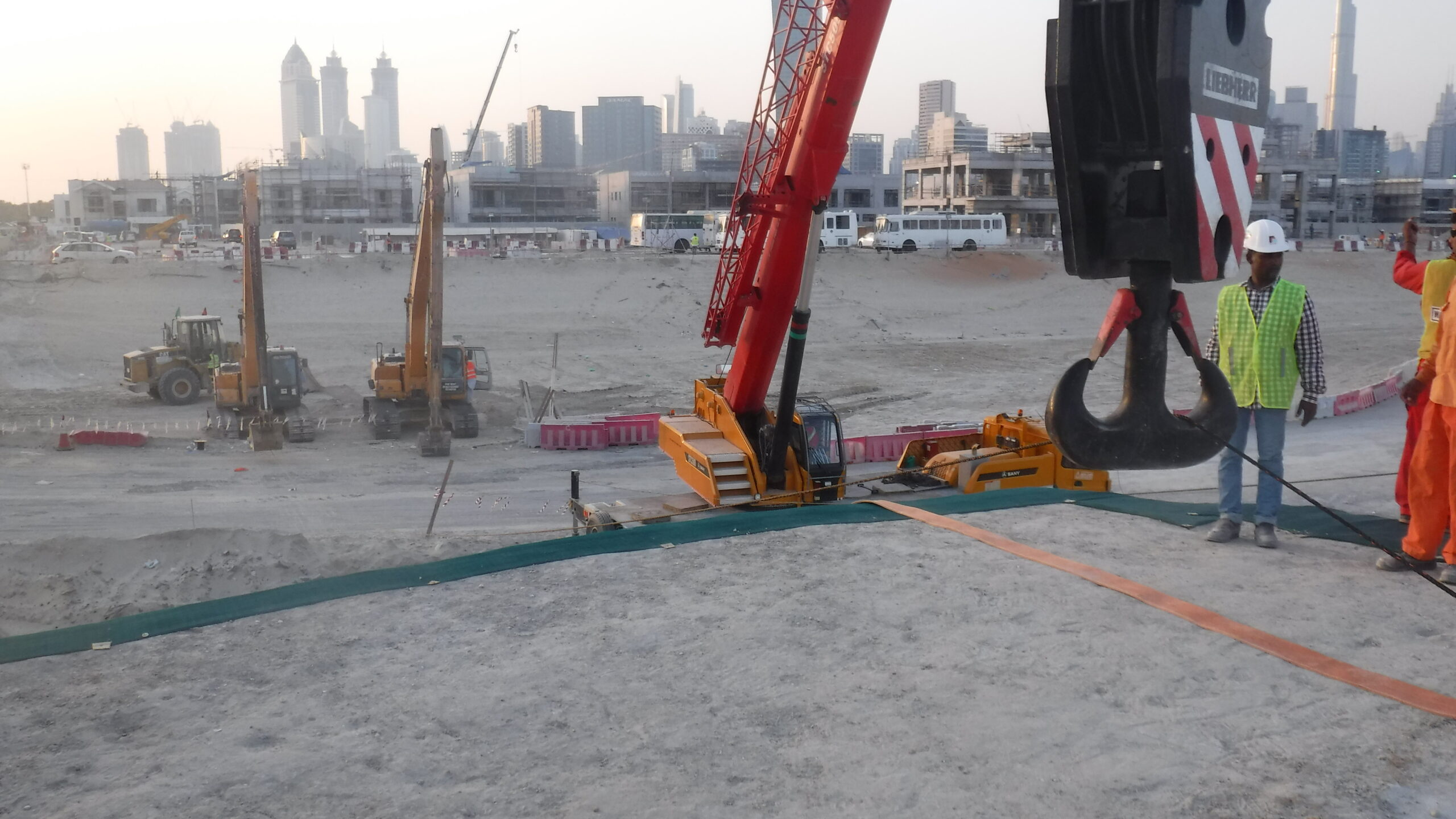
There was insufficient access behind the berm at the far bank (ending bank) to properly pull and unroll the AquaDam. The ending bank was too tall so, the excavators were positioned down in the pit behind the ending bank to pull on a rope that need to be elevated over the ending bank using a crane. Each rope used one (1) excavator and one (1) crane to unroll the 16ft tall AquaDam.
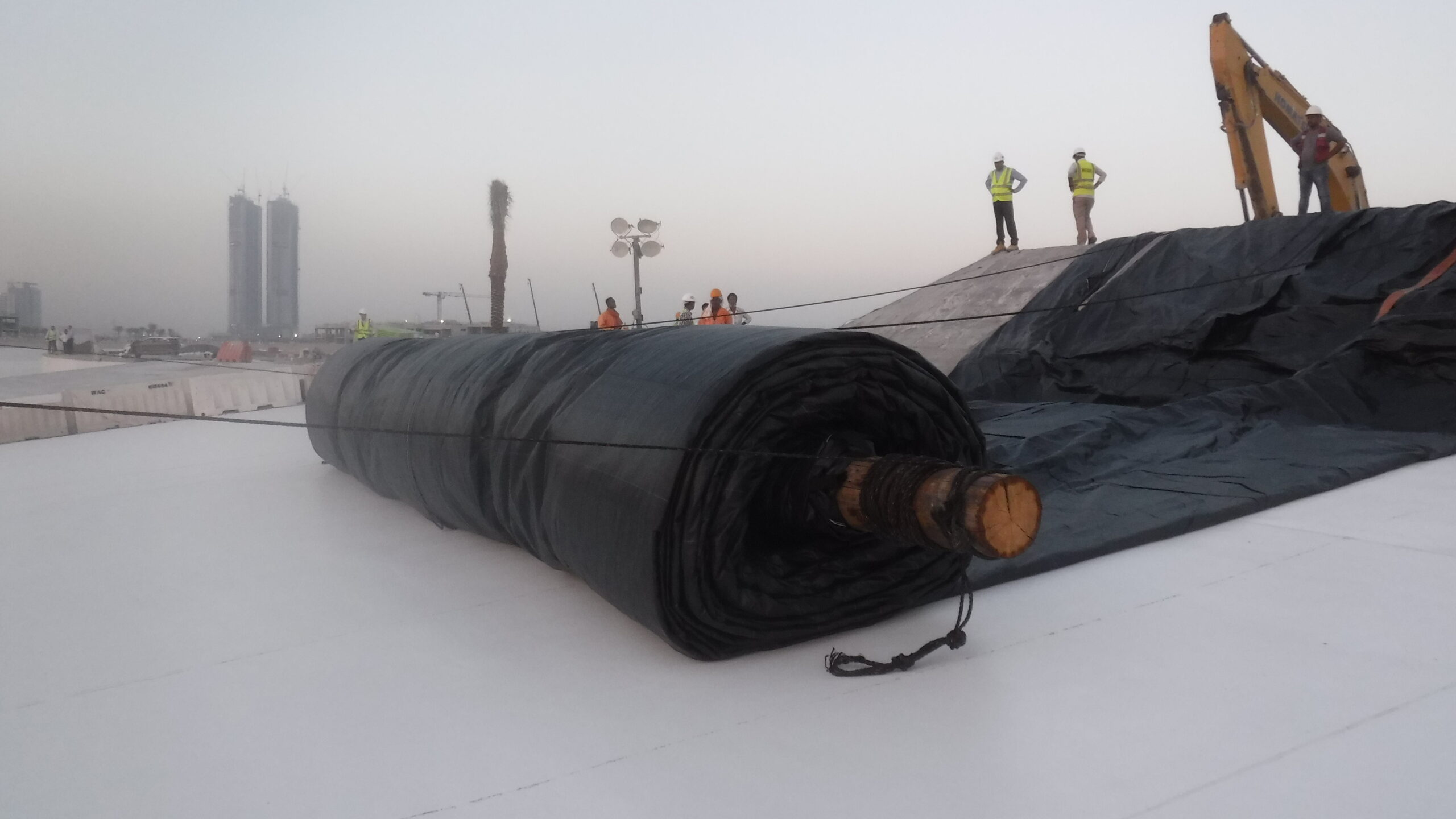
Back at the starting bank, we can see the AquaDam in position where there are two (2) ropes pulling on the log (at the center of the AquaDam) and two (2) ropes restraining the AquaDam during the unrolling. This was done to maintain constant control of the AquaDam during deployment.
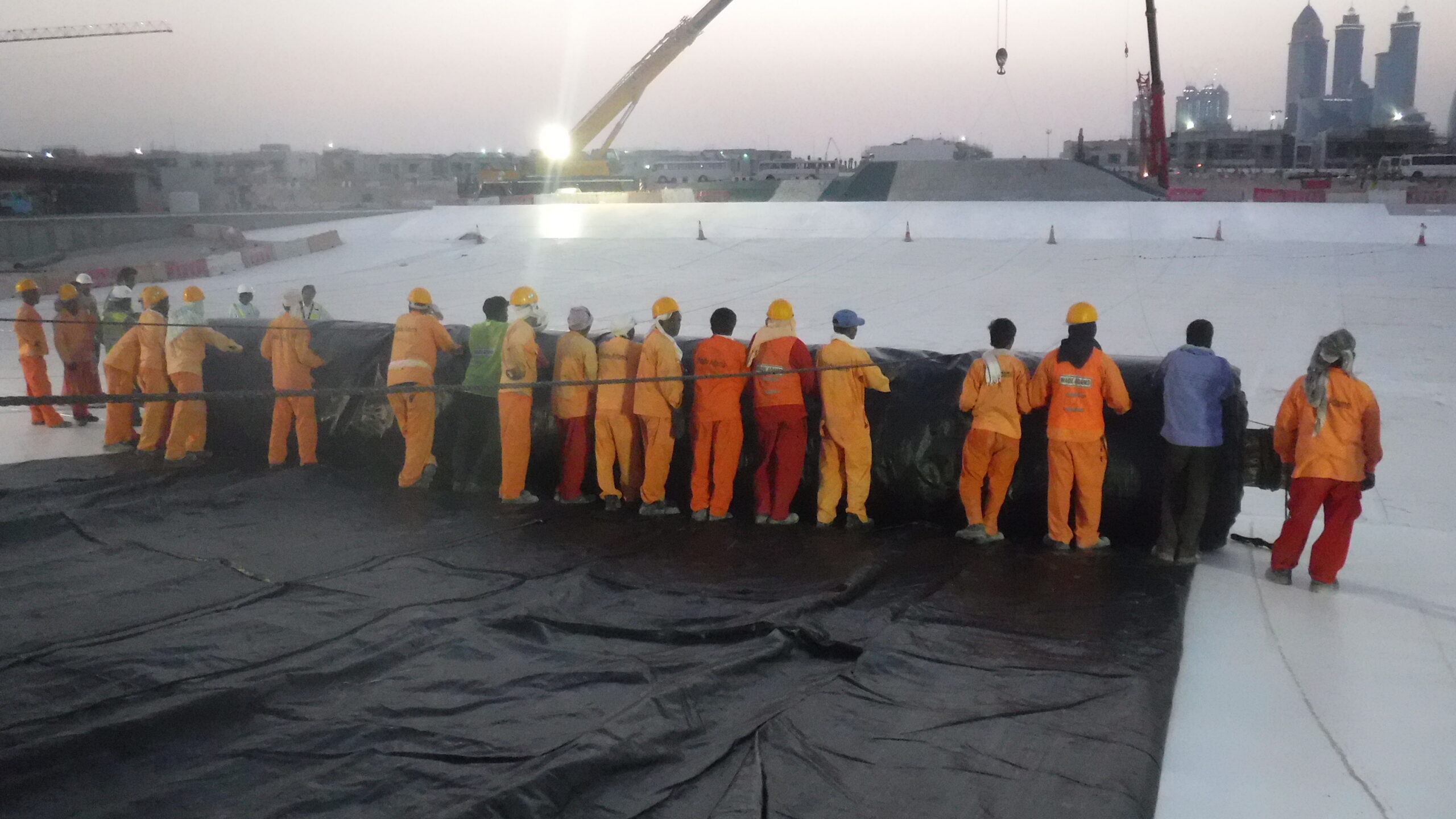
Although not necessary, a large crew of workers helped unroll the AquaDam by pushing on the unit.
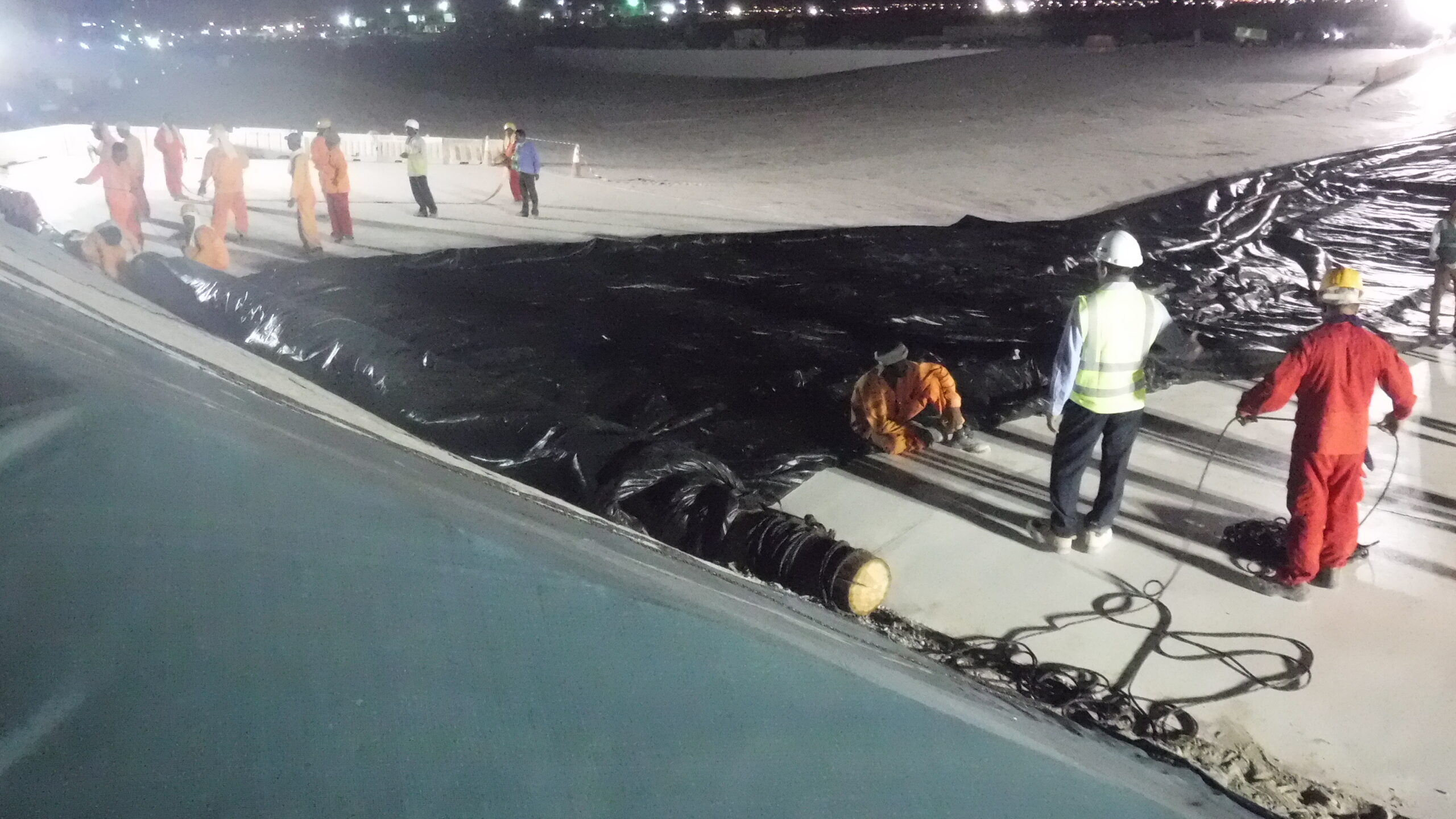
The AquaDam has now unrolled across the channel and rolled into the toe of the ending bank.
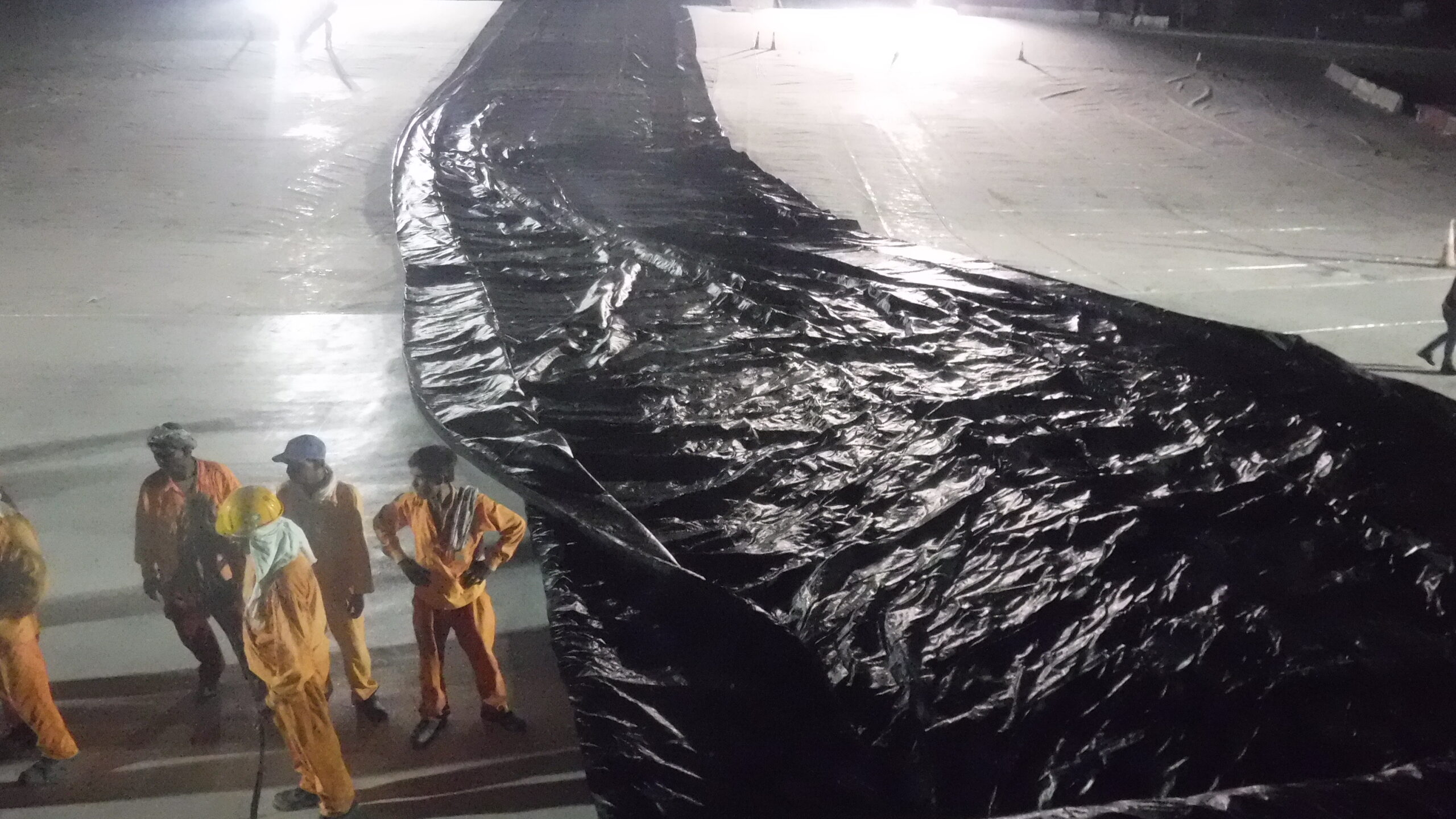
Here is a picture looking down the length of the dam.
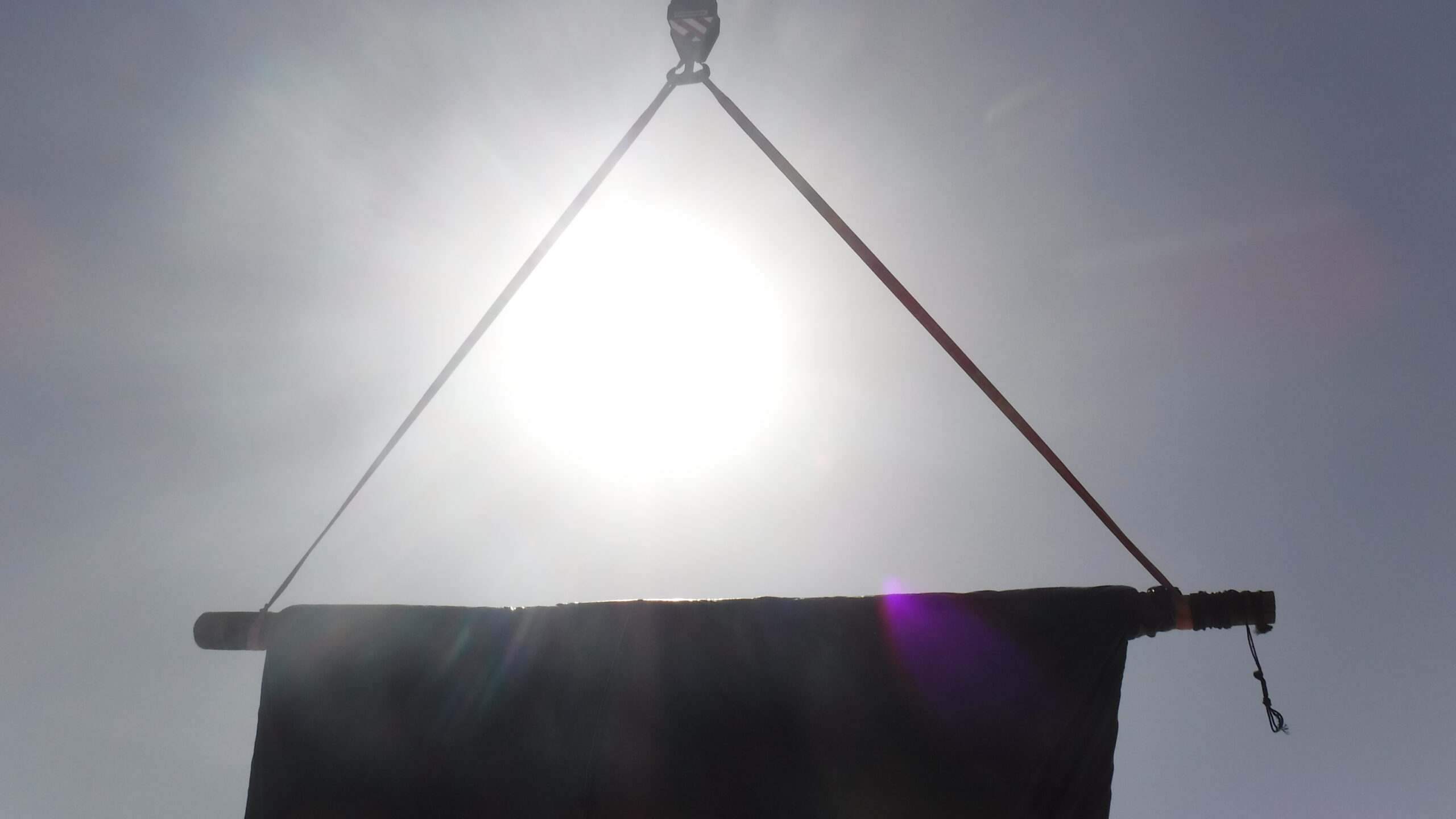
The positioning at the ending bank of the AquaDam was not quite right, so the end was lifted with a crane to adjust.
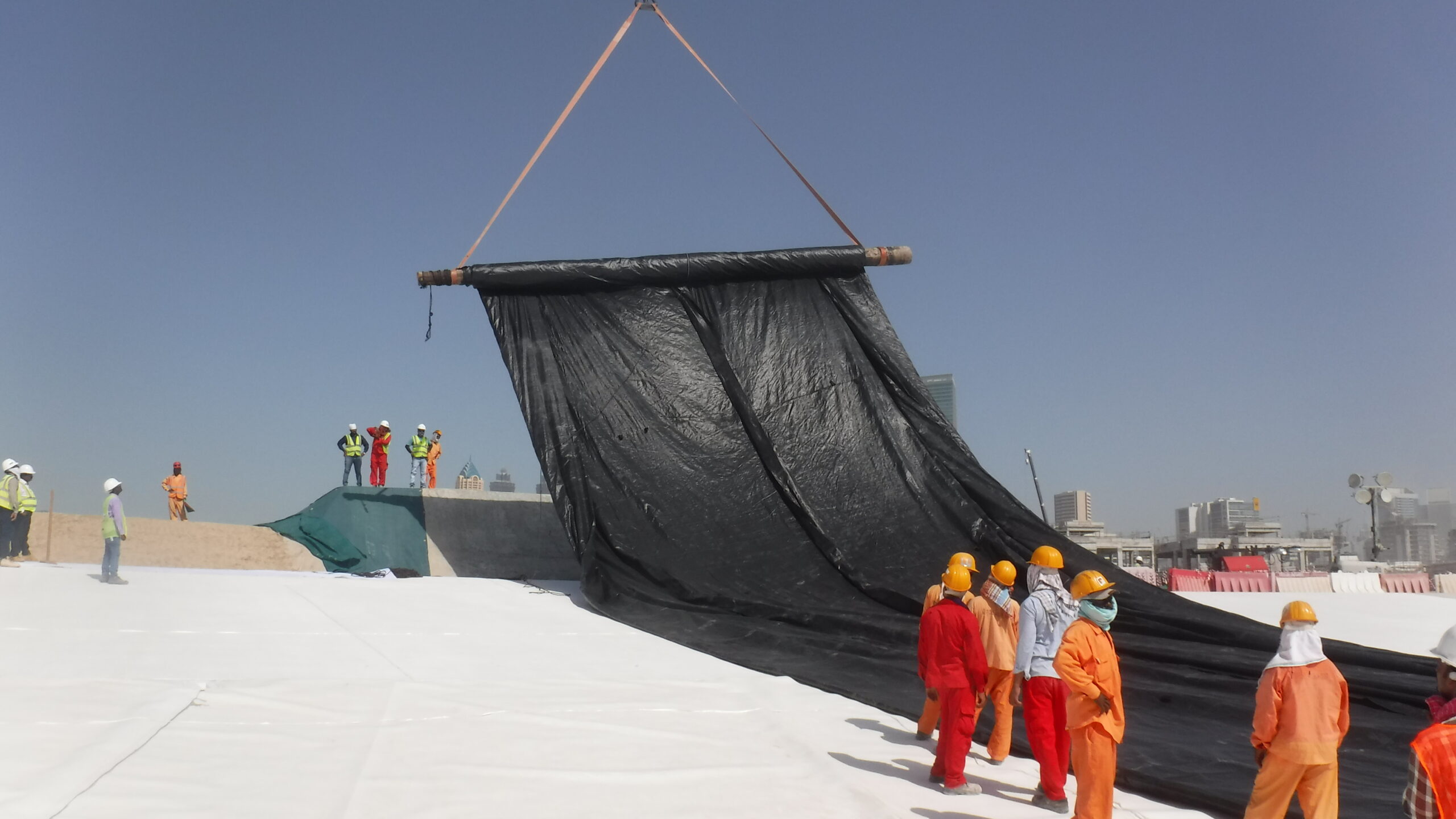
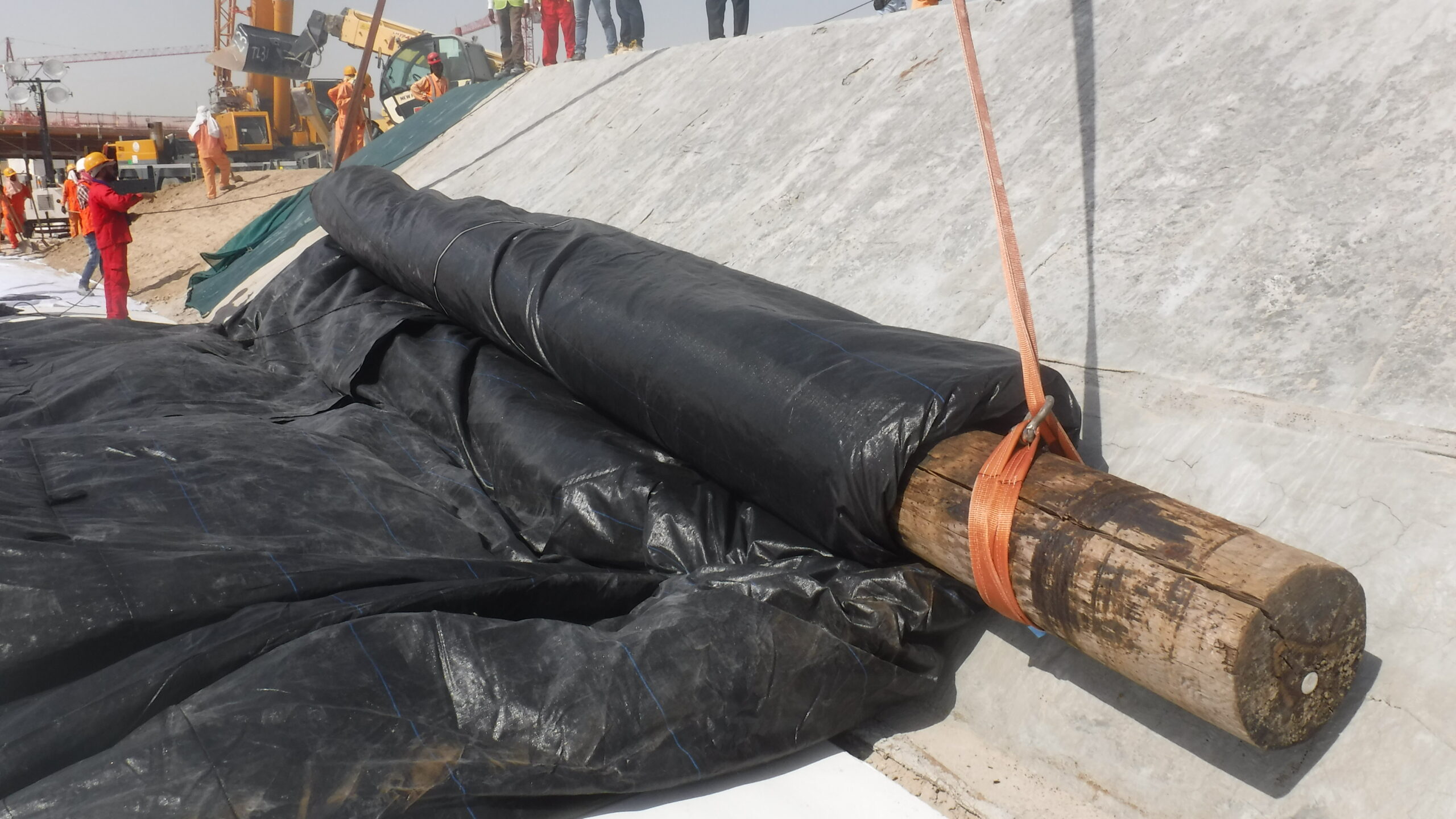
Now the end of the AquaDam has been matched up better to the ending bank and the unit can finish being unrolled.
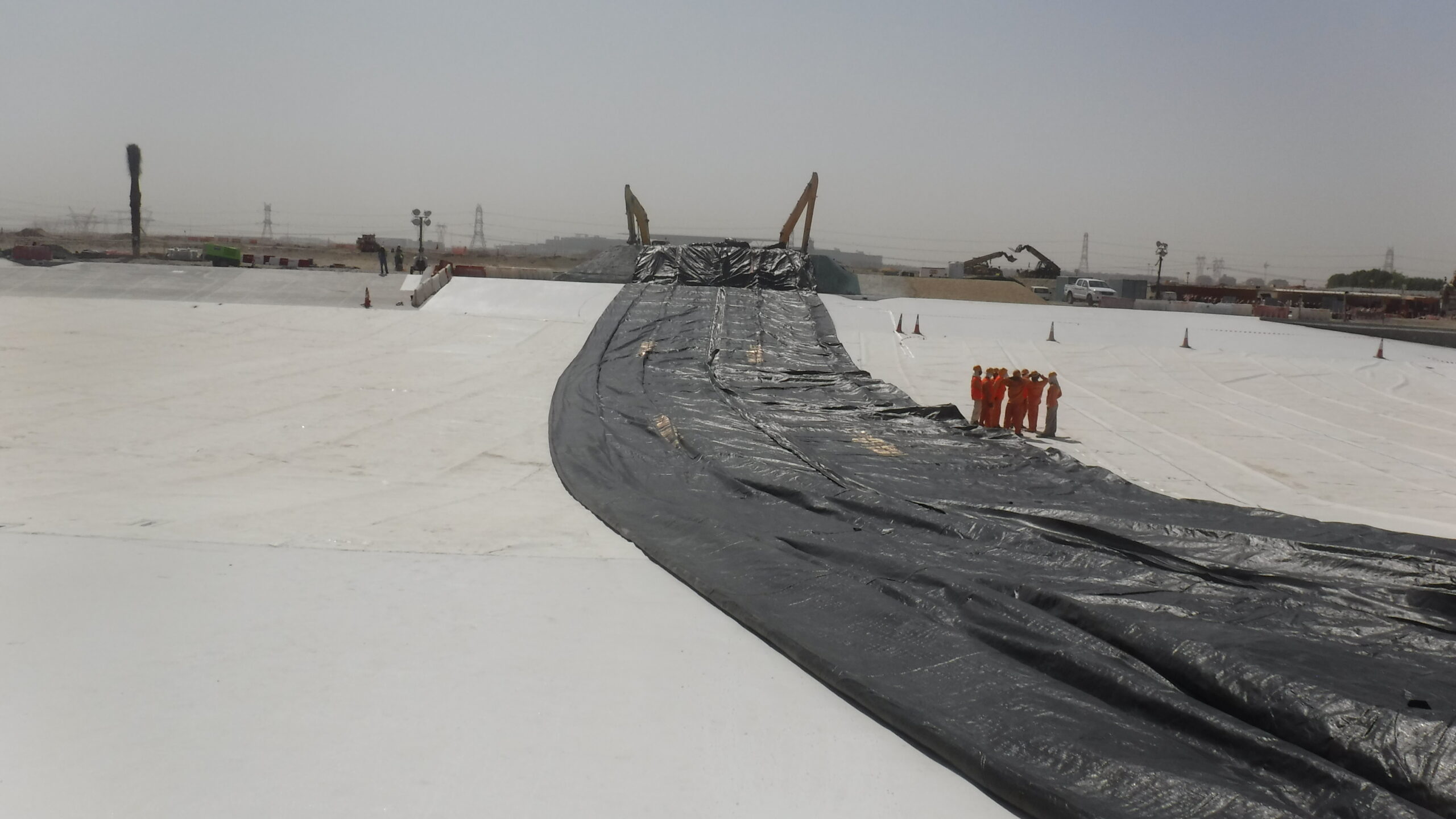
Now the turn needed (in the AquaDam) to keep both ends of the AquaDam perpendicular to their bank is apparent. We can see the starting bank here in this picture.
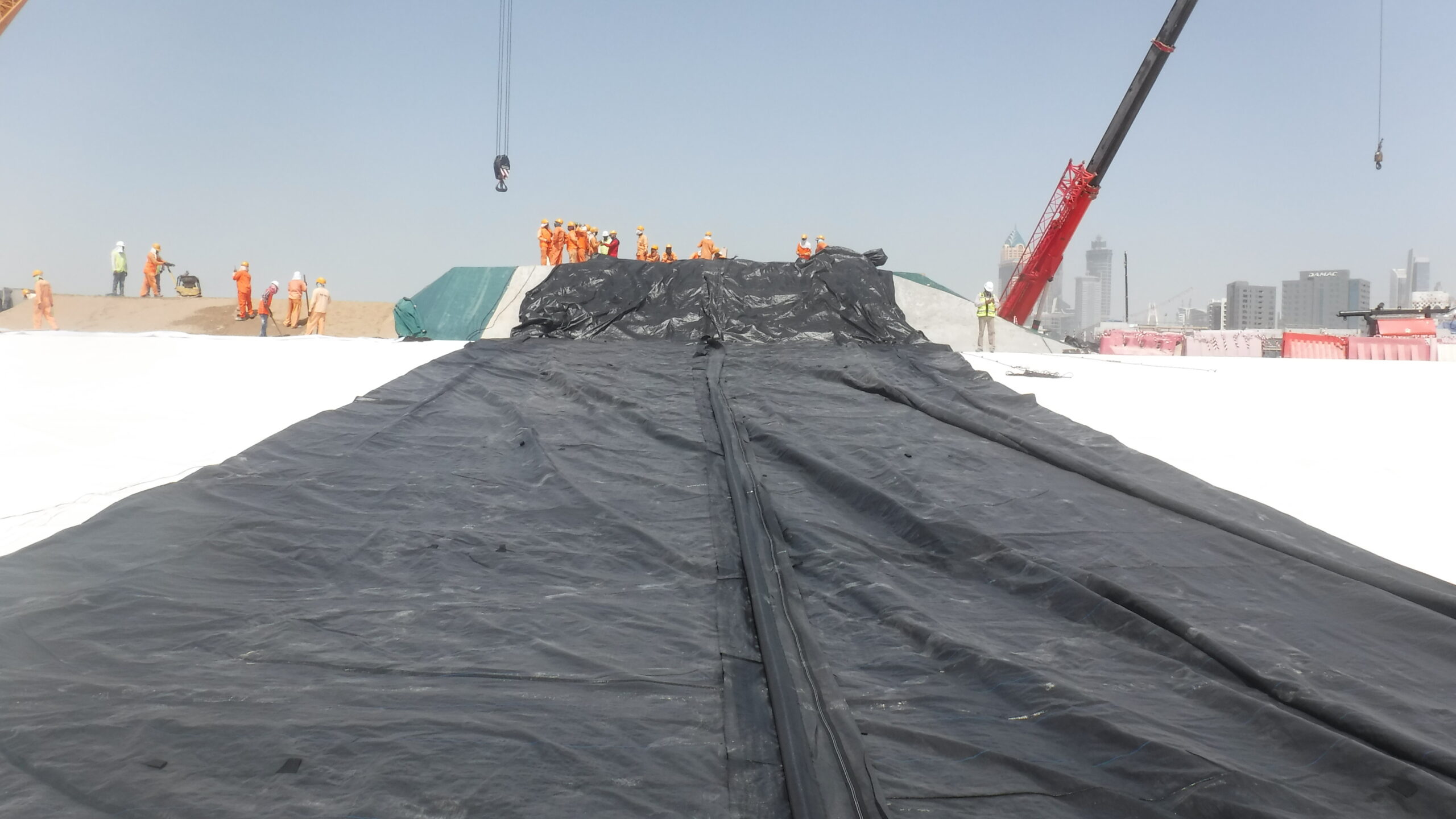
This photo shows the ending bank.
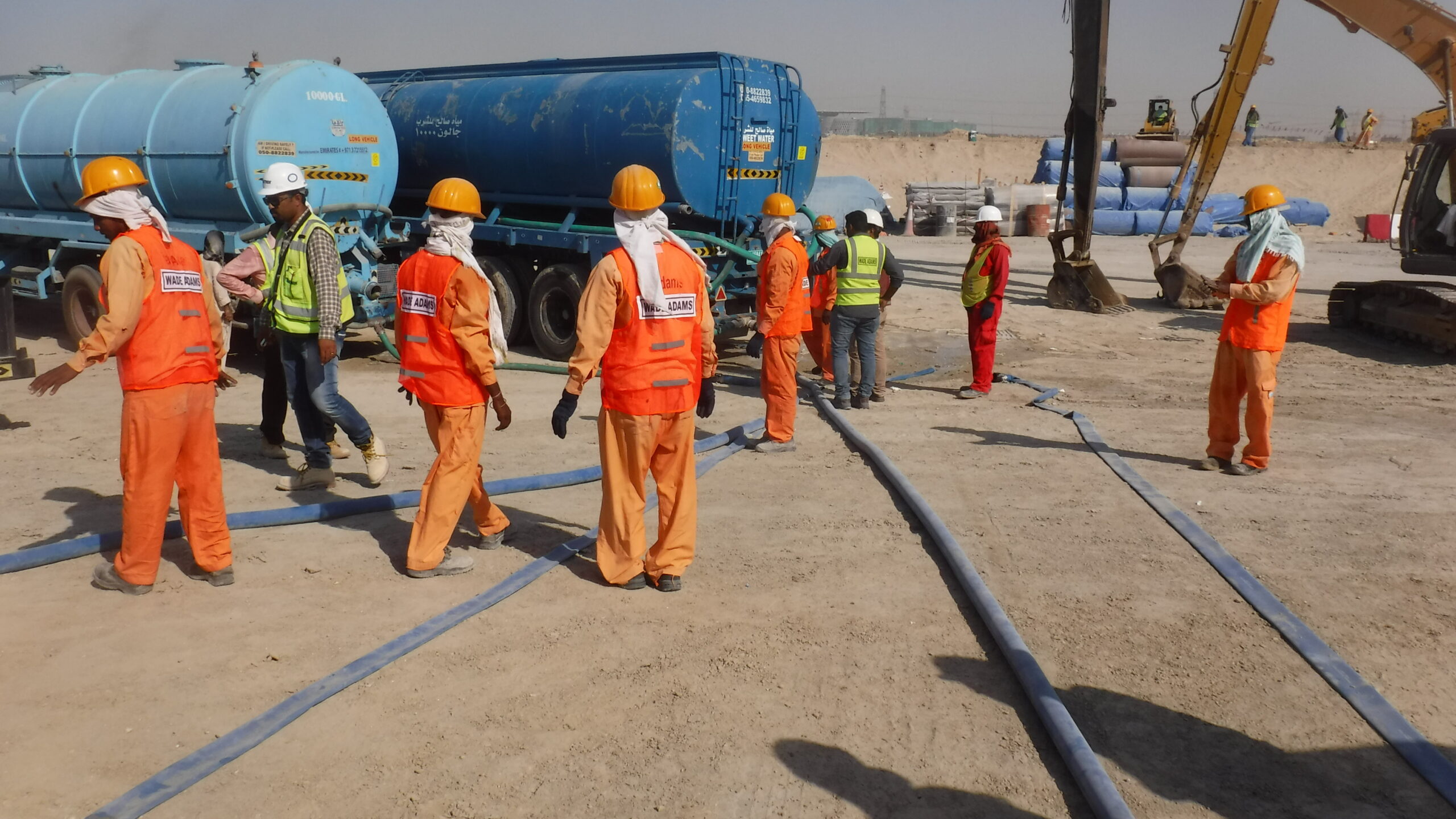
All the water for this project was trucked in using 6,000gal to 10,000gal water trucks. This type of filling process can be very slow.
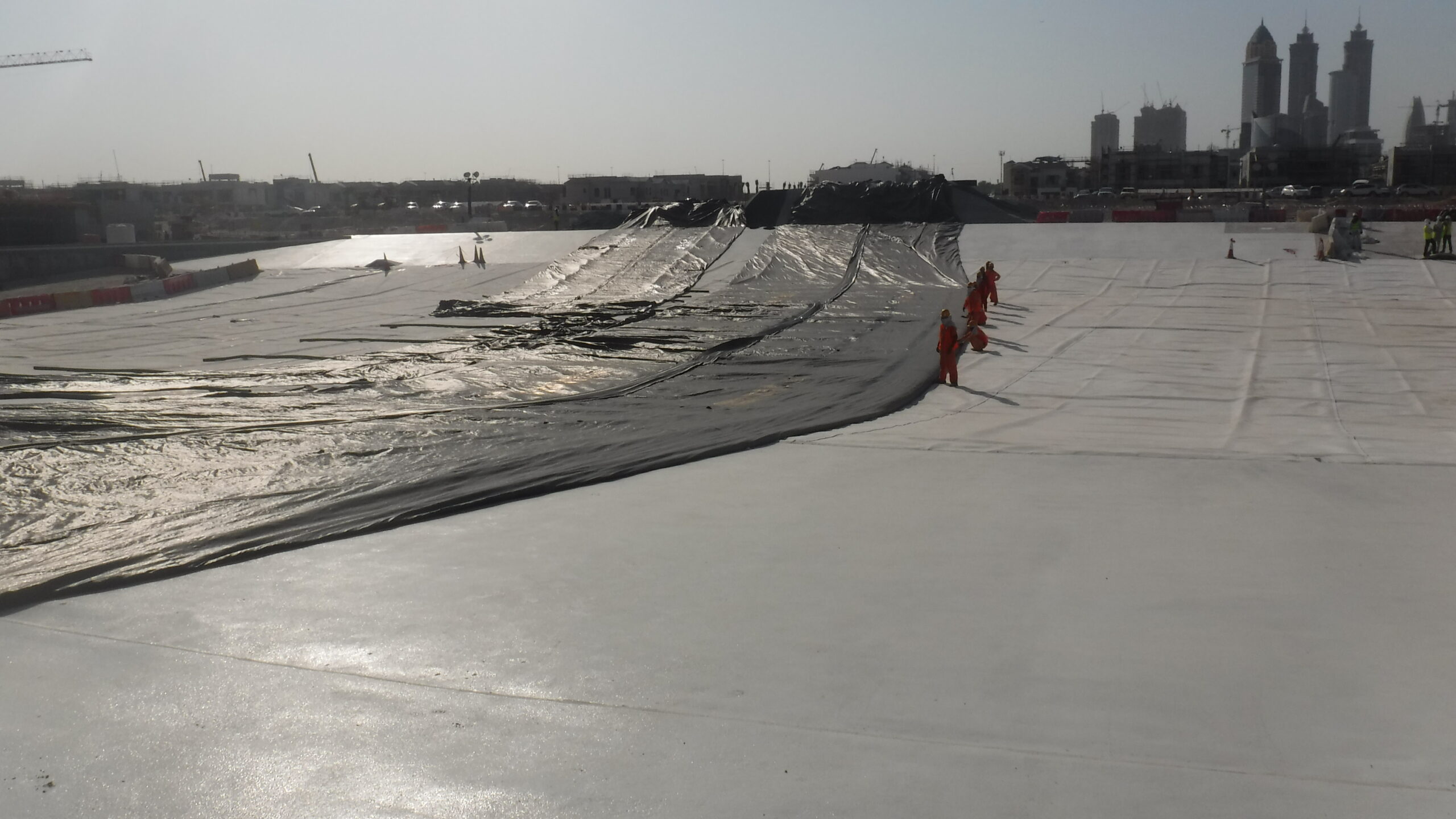
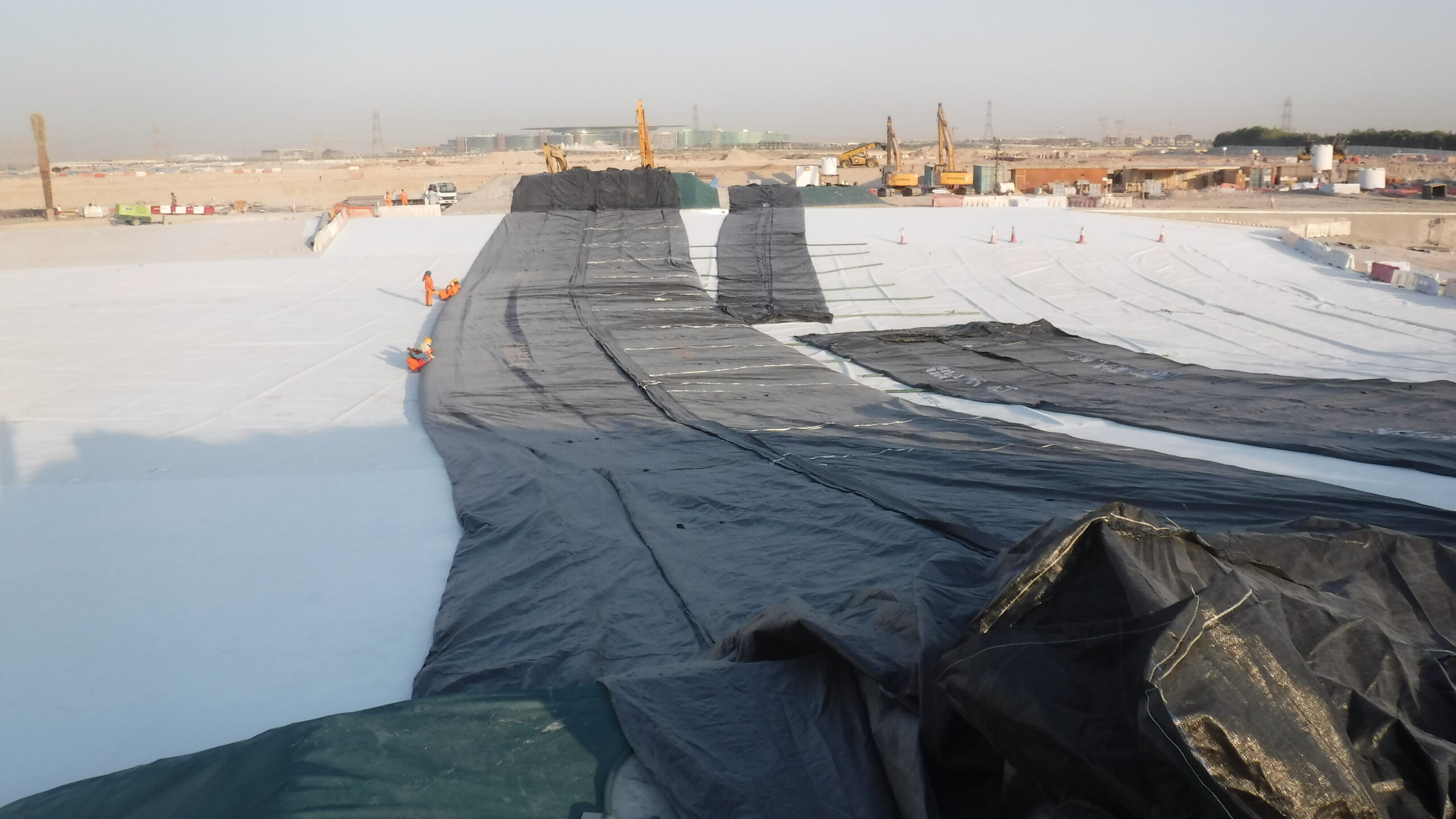
Filling will continue over the course of the next 7 days. The primary AquaDam (16ft tall unit) needs about 600,000gal to bring it to it's design height.
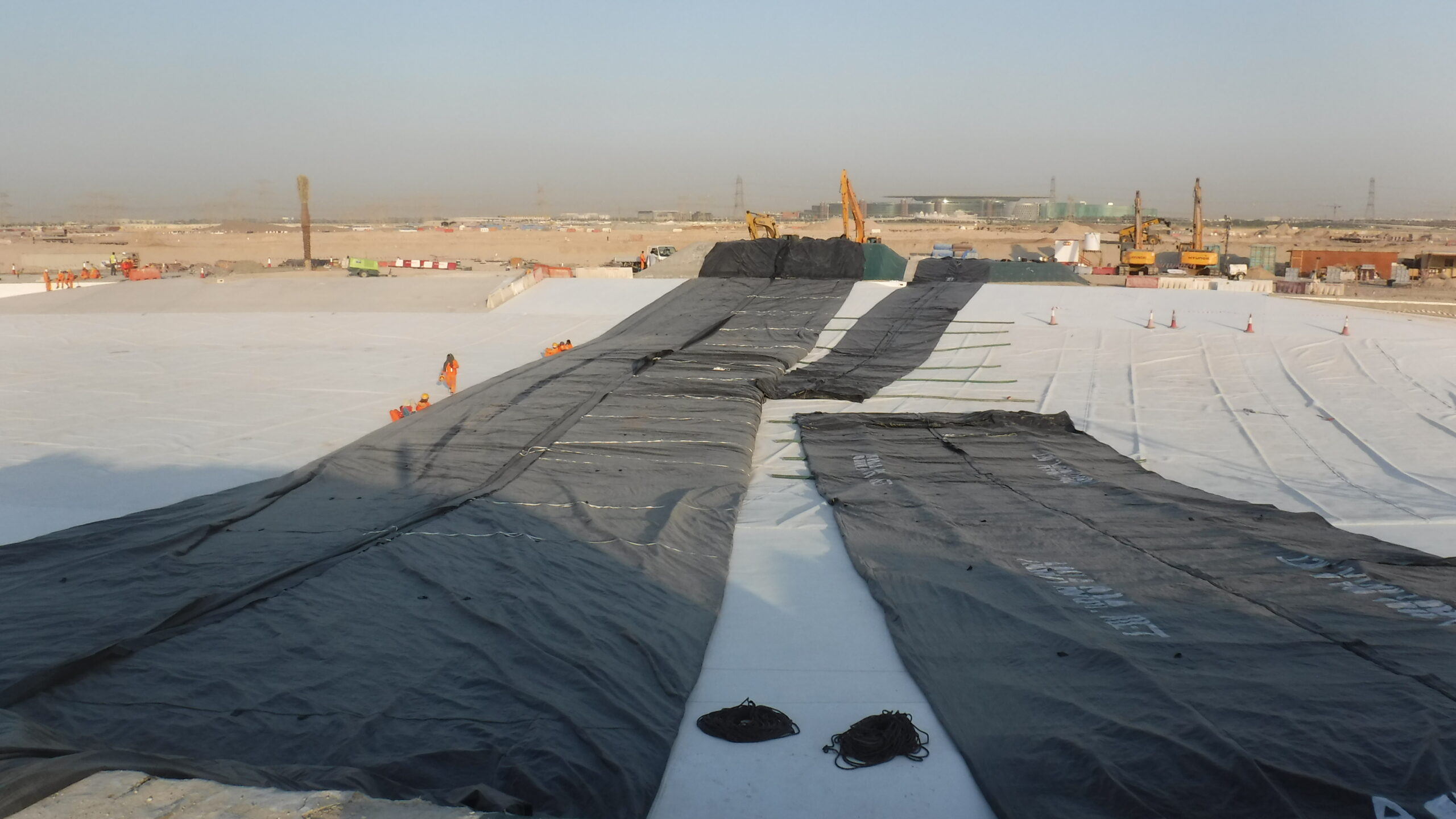
The 12ft tall support AquaDams will be rolled back up, have their starting banks re-constructed, and then unrolled again closer to the side of the 16ft tall AquaDam that is filling.
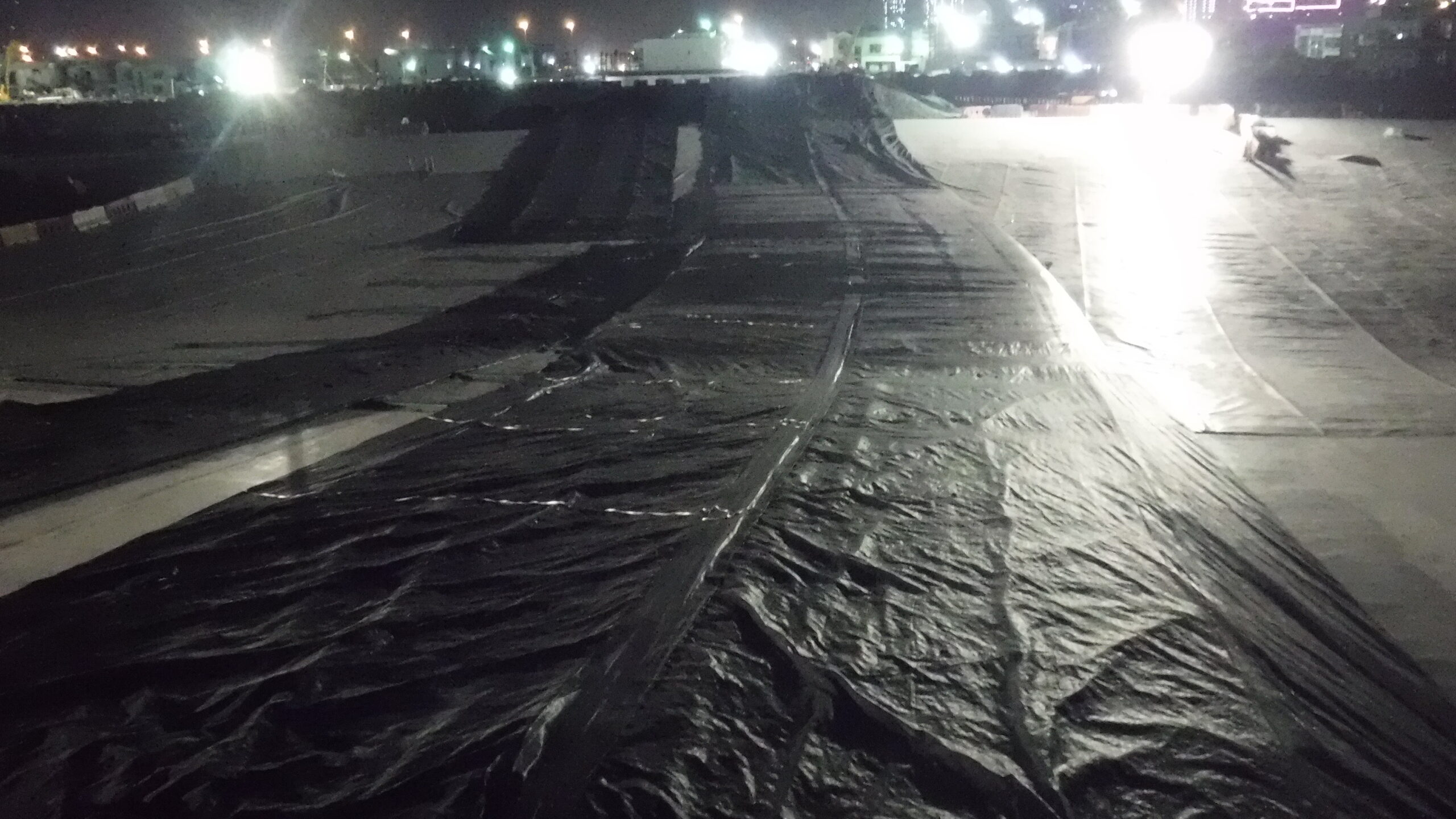
Even overnight the 16ft tall AquaDam continues to fill.
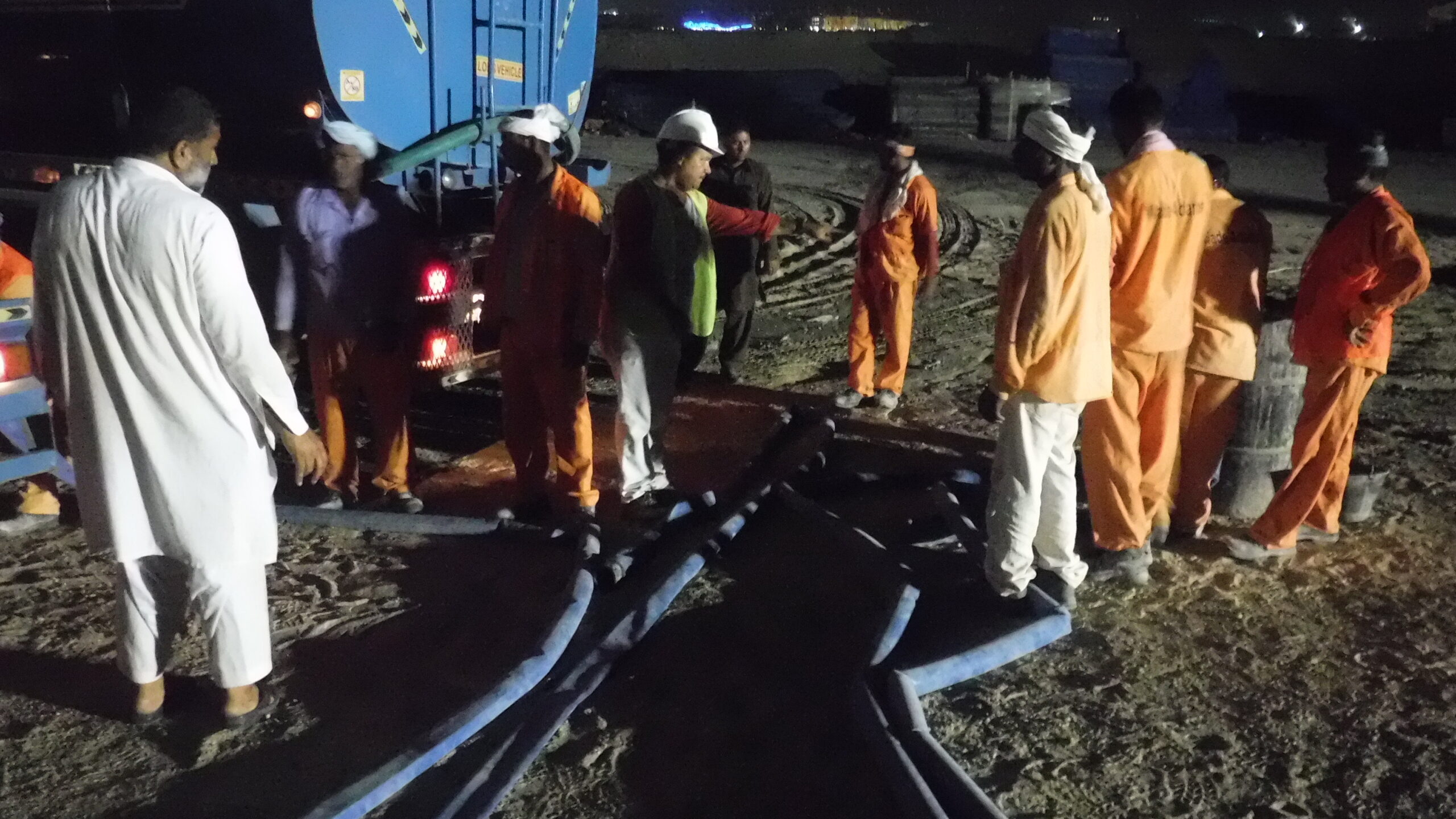
Each of the two (2) fill-tubes of the 16ft tall AquaDam were supplied with three (3) 3in discharge hoses pre-inserted. This allowed up to six (6) water trucks to discharge water into the AquaDam simultaneously.
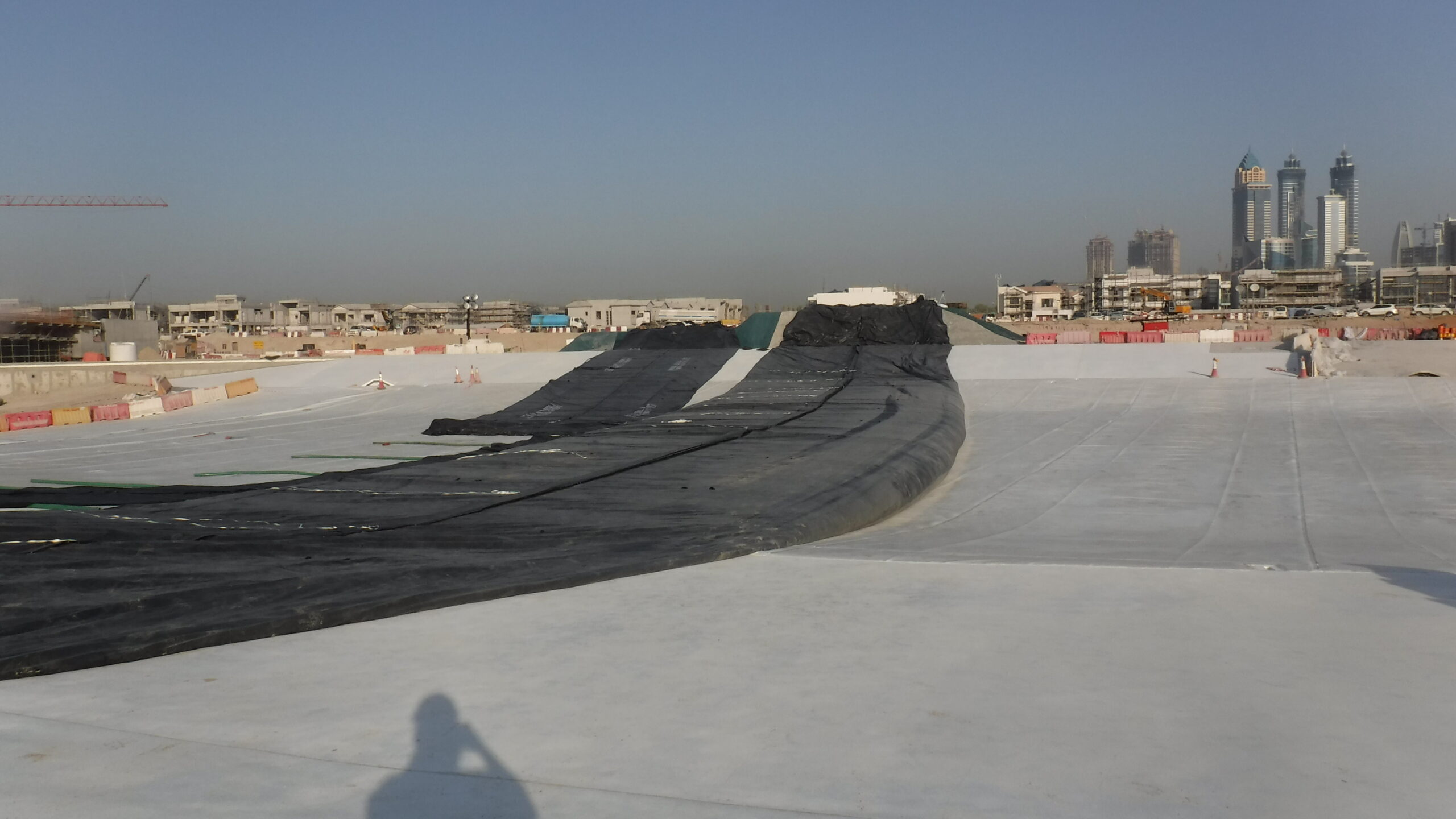
The primary 16ft tall AquaDam is now about 4ft tall at the lowest elevation along it's path.
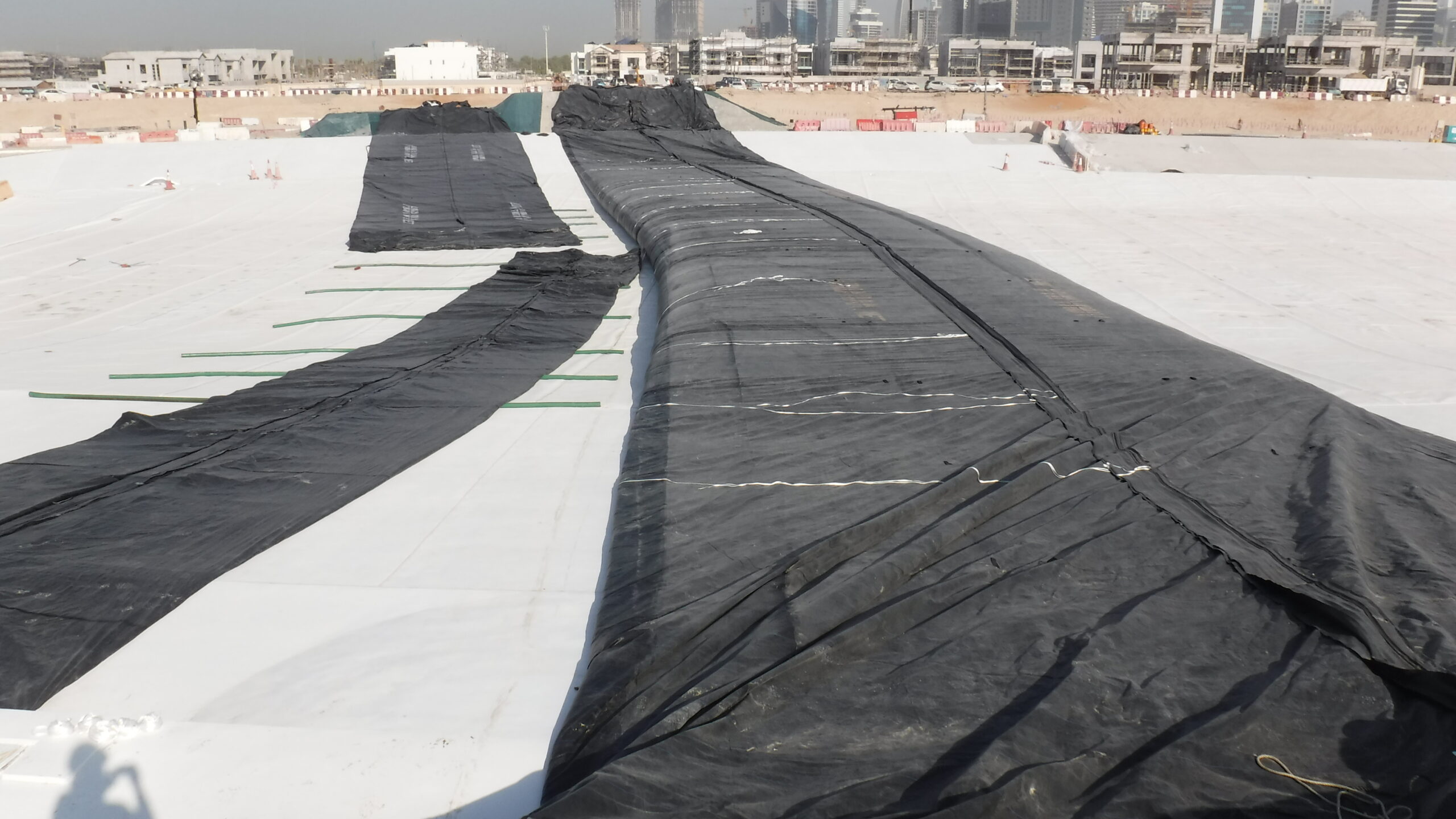
Wrinkles in the outer sleeve of the AquaDam indicate shifting of the unit while filling. This was a result of the angle at which the AquaDam married up to the starting and ending banks.
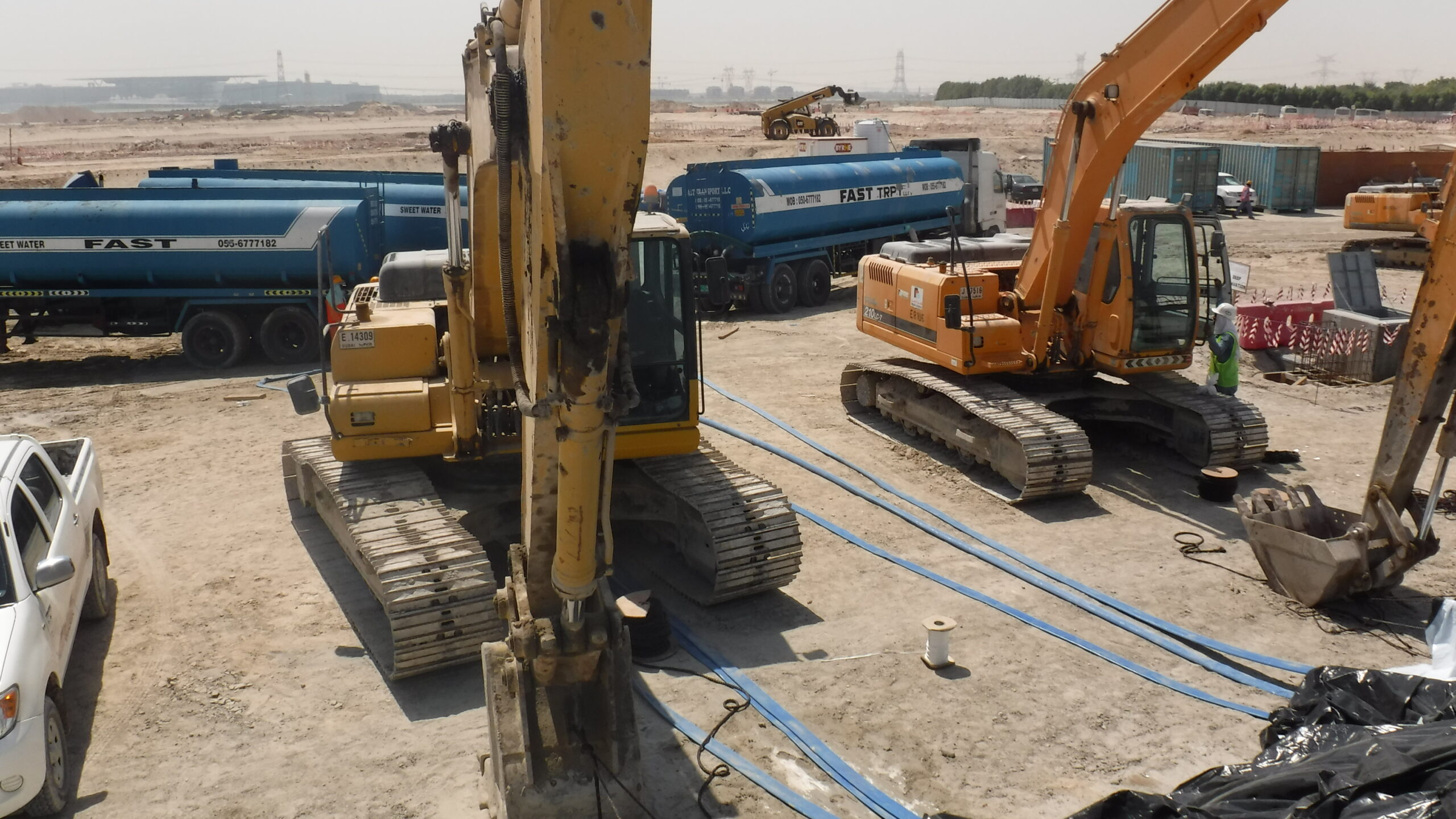
Filling continues from the water trucks in the background. The two (2) excavators were parked there for the duration, as anchor points for the open end of the AquaDam. The excavators were eventually replaced with 1m cubed concrete blocks to reduce costs.
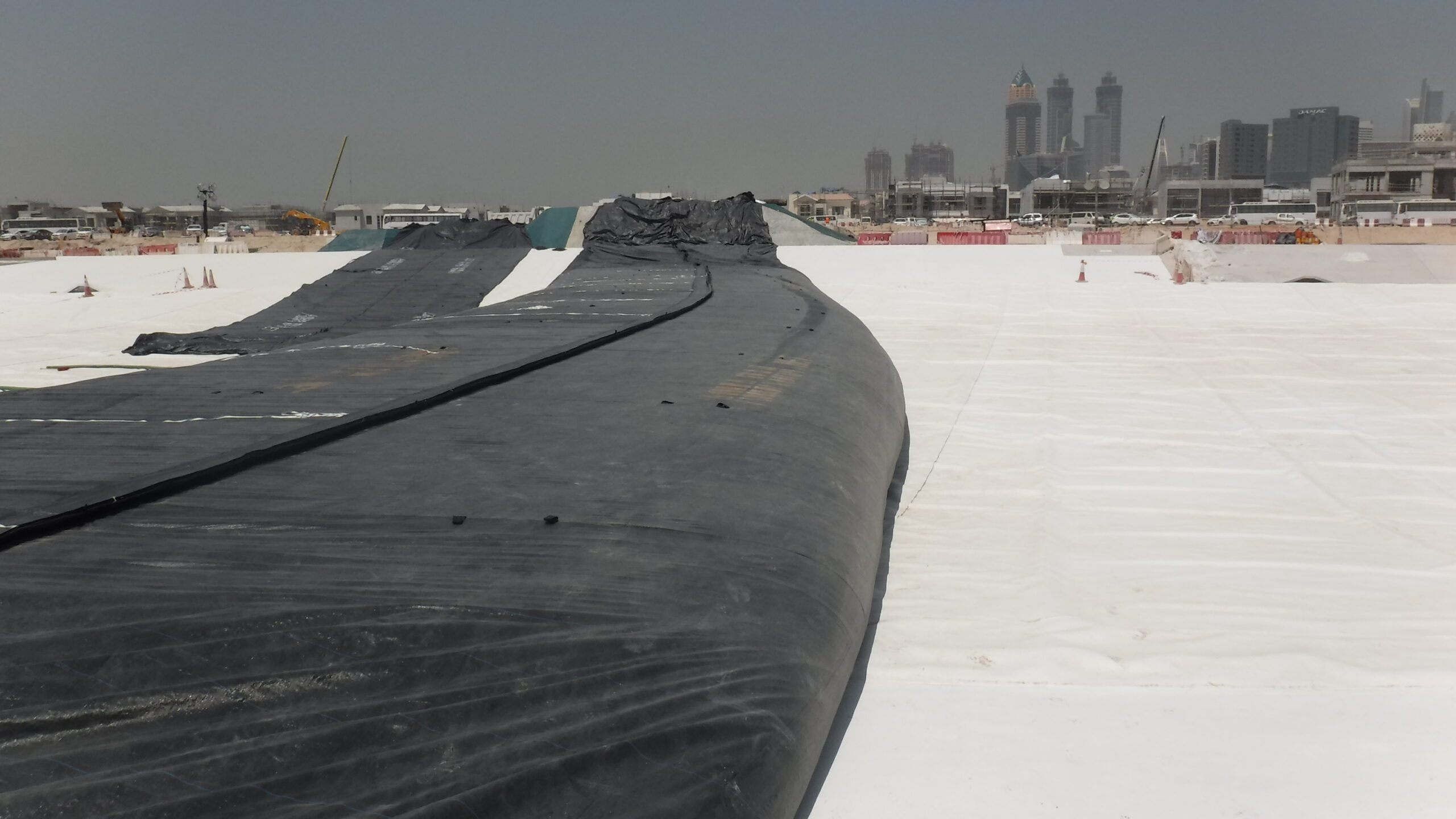
The primary 16ft tall AquaDam has now filled to about 6ft tall in height at the lowest elevation along it's path.
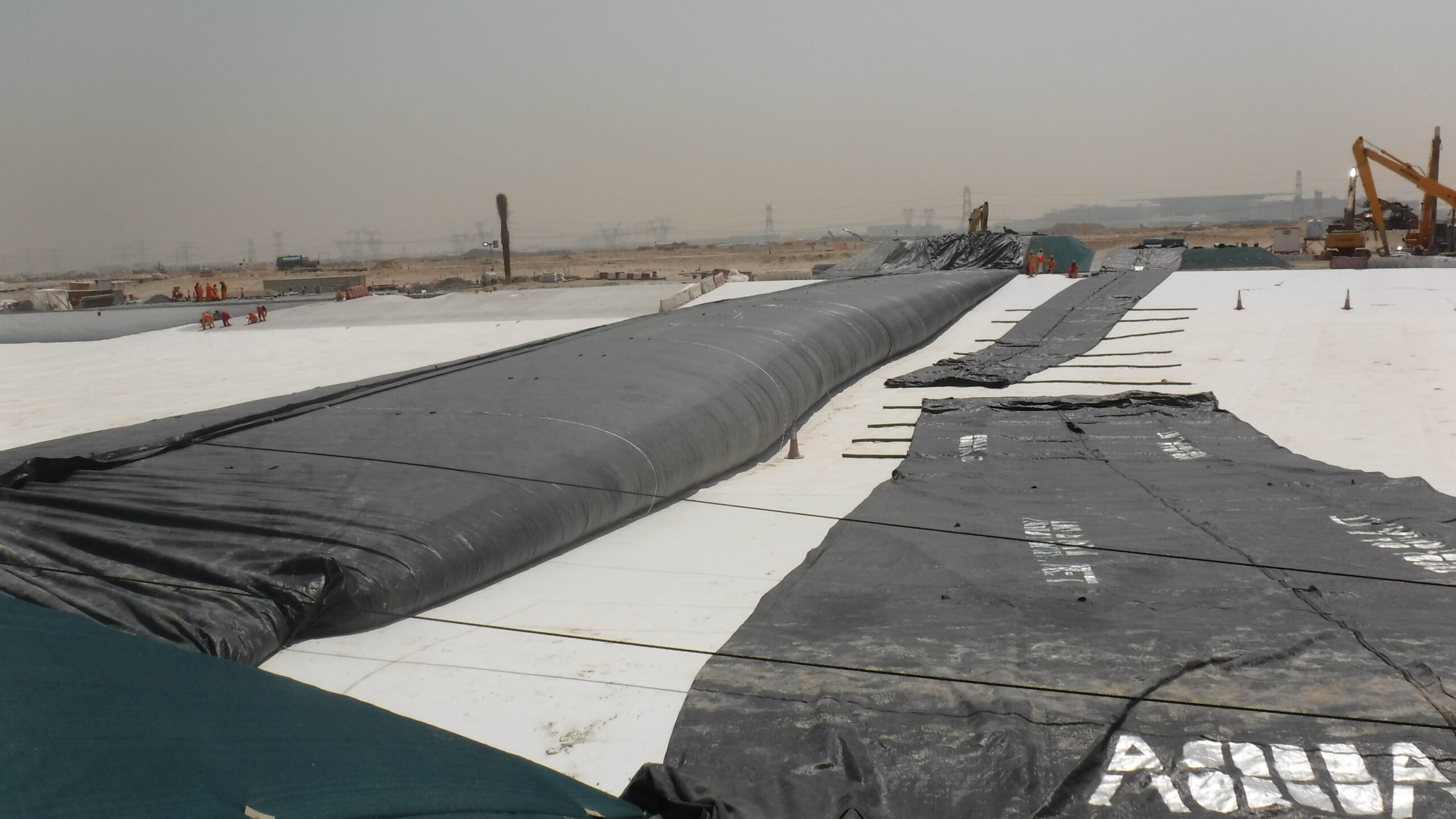
Another night of filling has gone by bringing the 16ft tall AquaDam to about 9ft in height at the lowest elevation along it's path. A road cone has been placed a distance away from the AquaDam to monitor the amount of leaning.
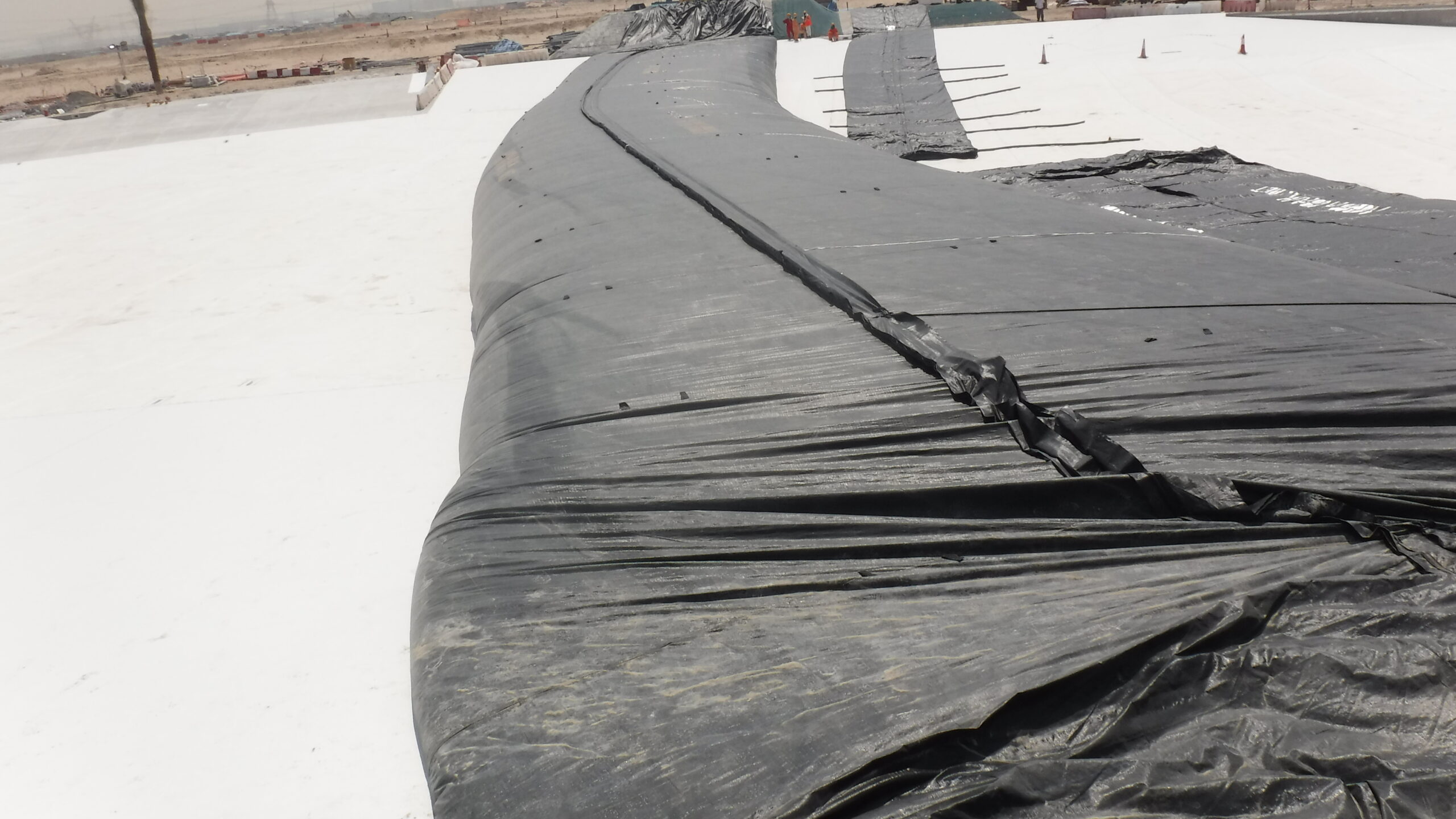
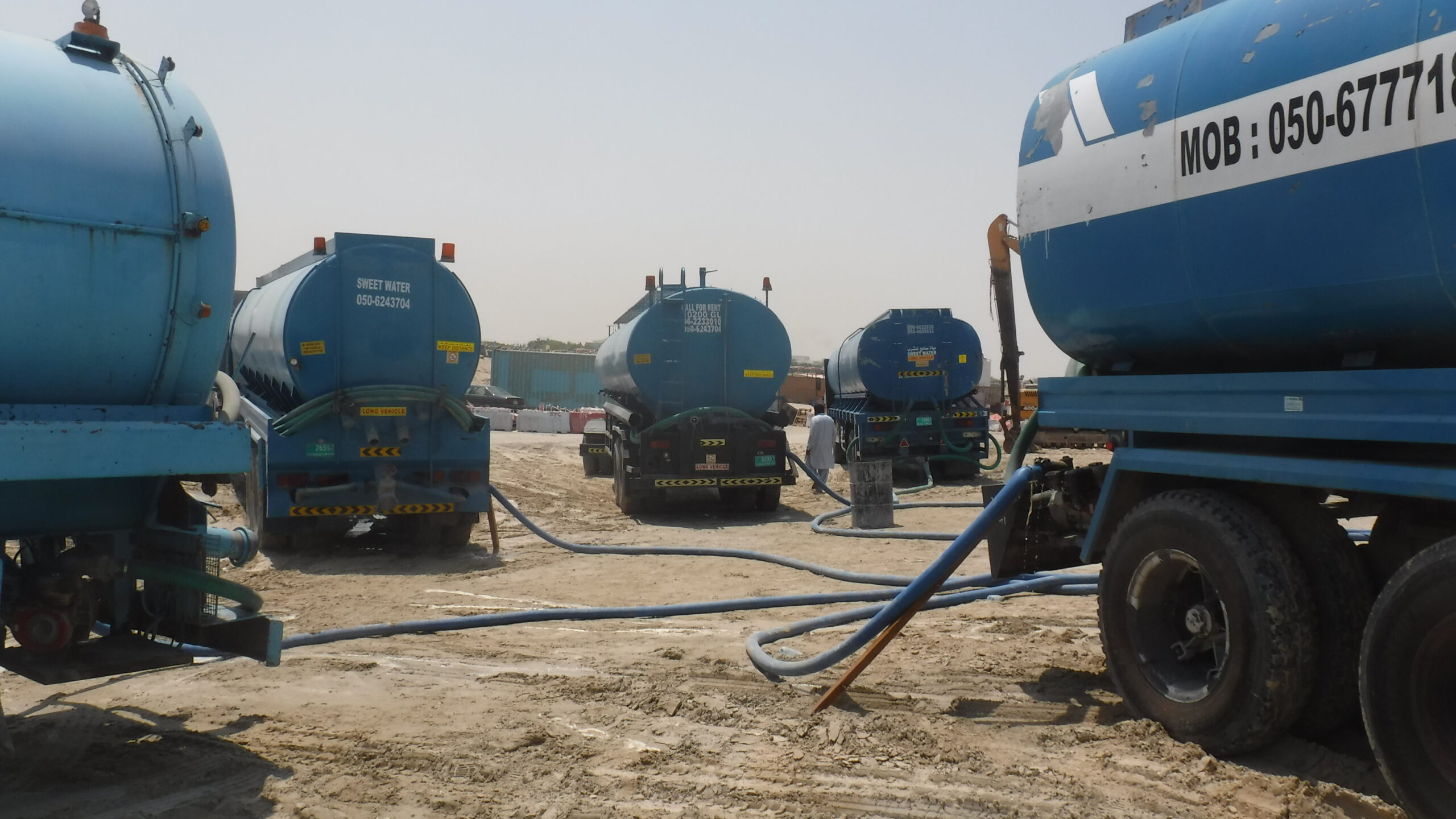
Here we can see five (5) water trucks filling the 16ft tall AquaDam at once.
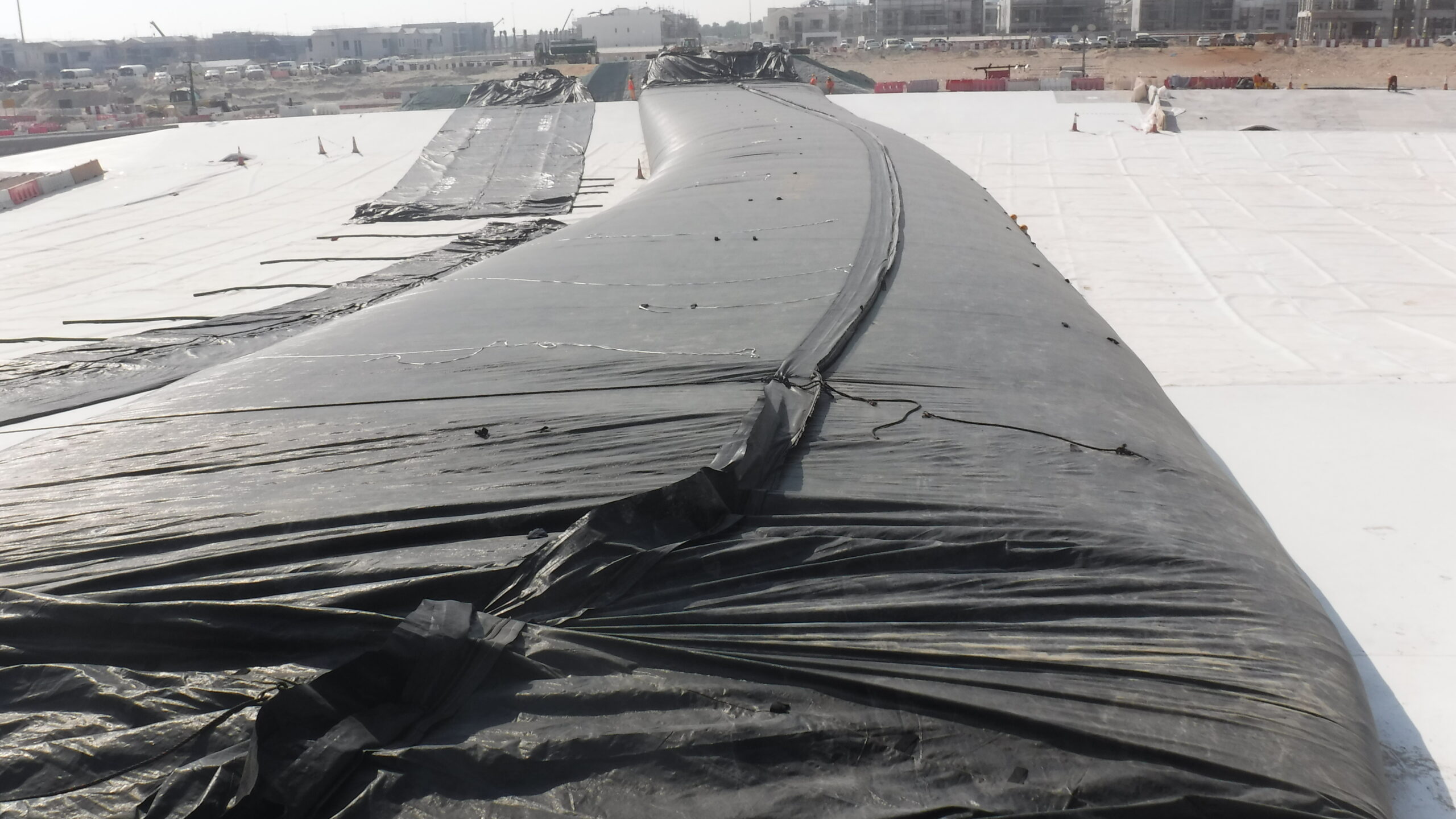
The primary 16ft tall AquaDam continues to fill.
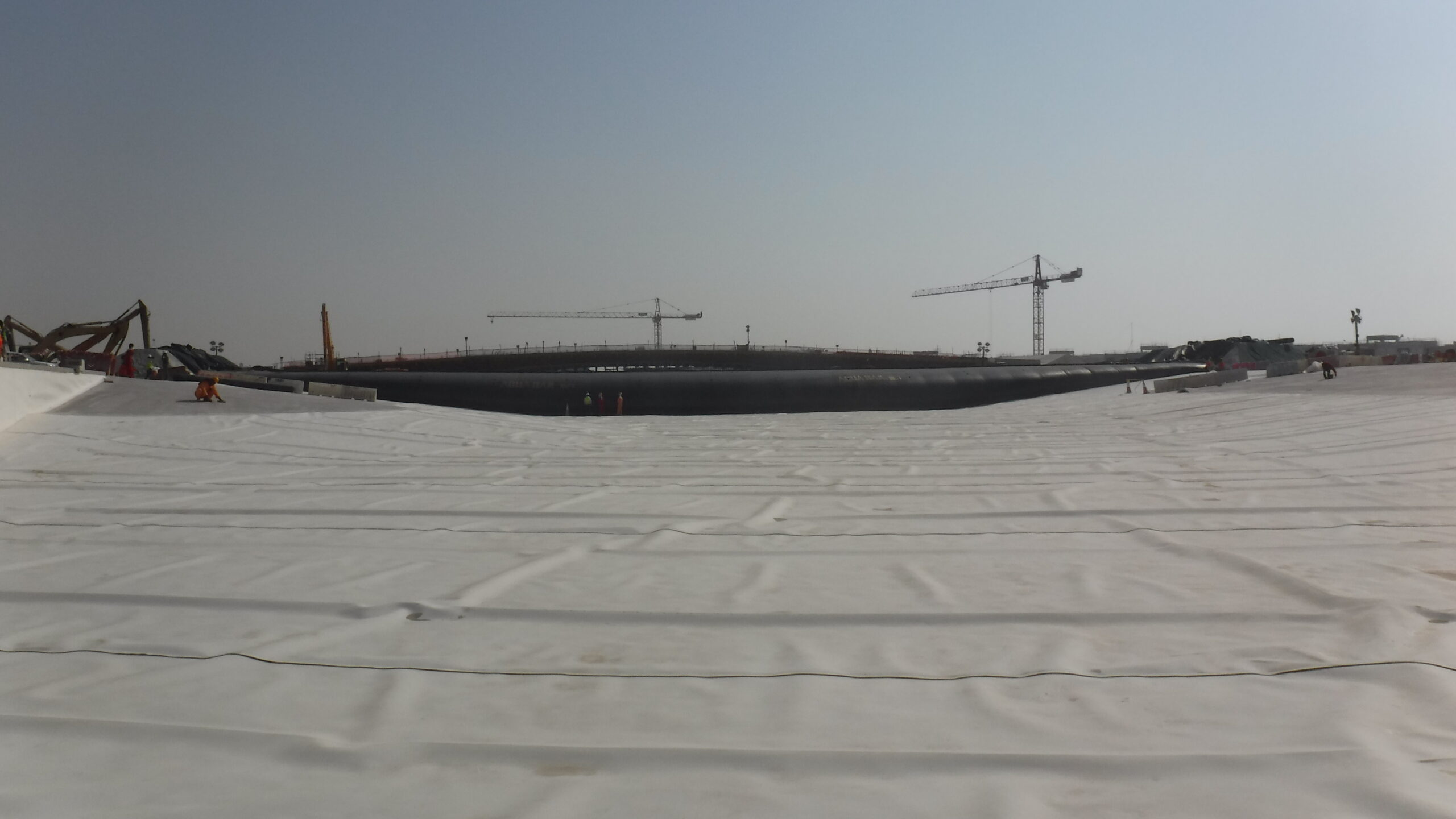
An out view of the primary 16ft tall AquaDam.
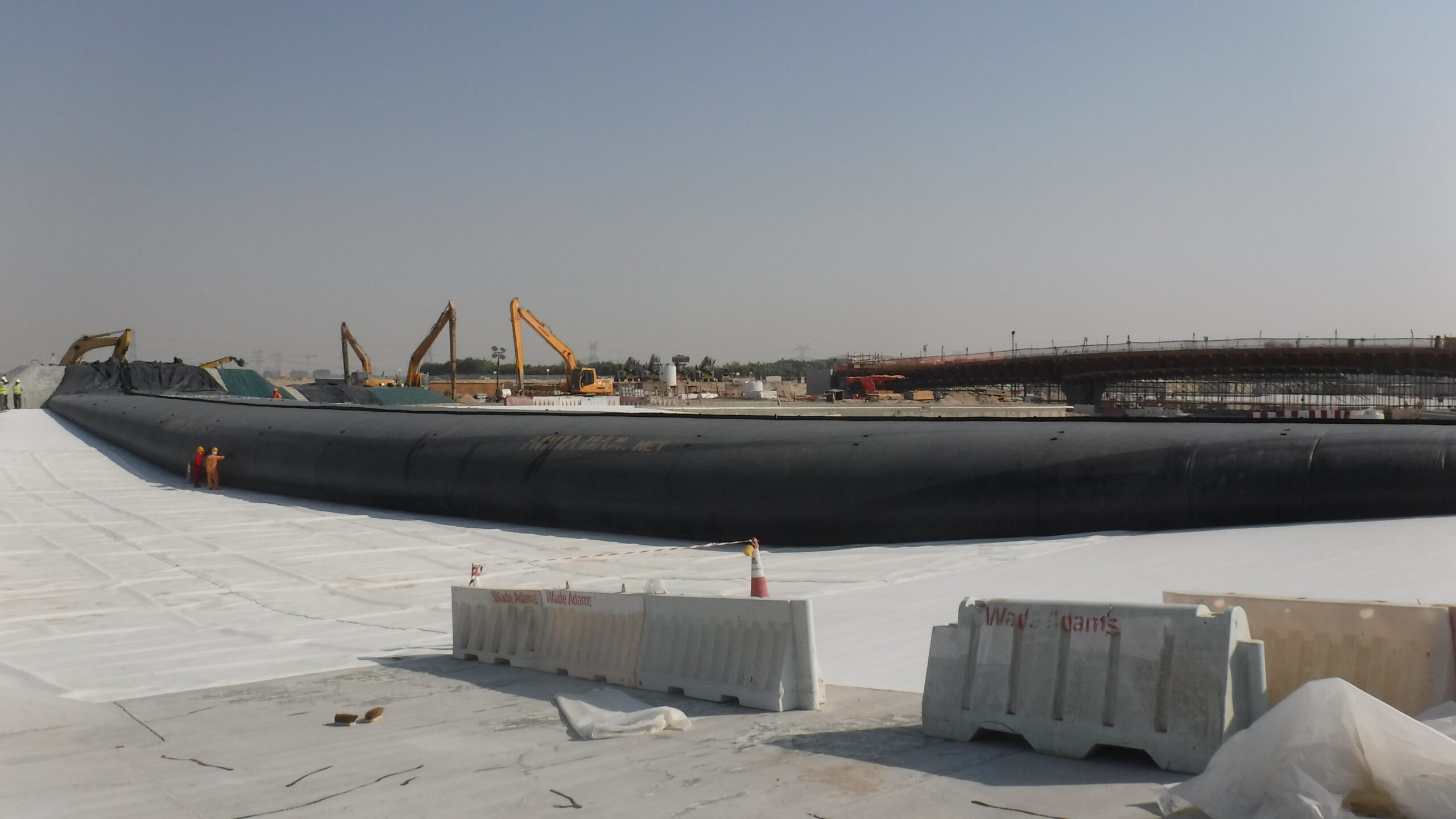
The primary 16ft tall AquaDam in this photo is about 11ft tall at the lowest elevation along it's path.
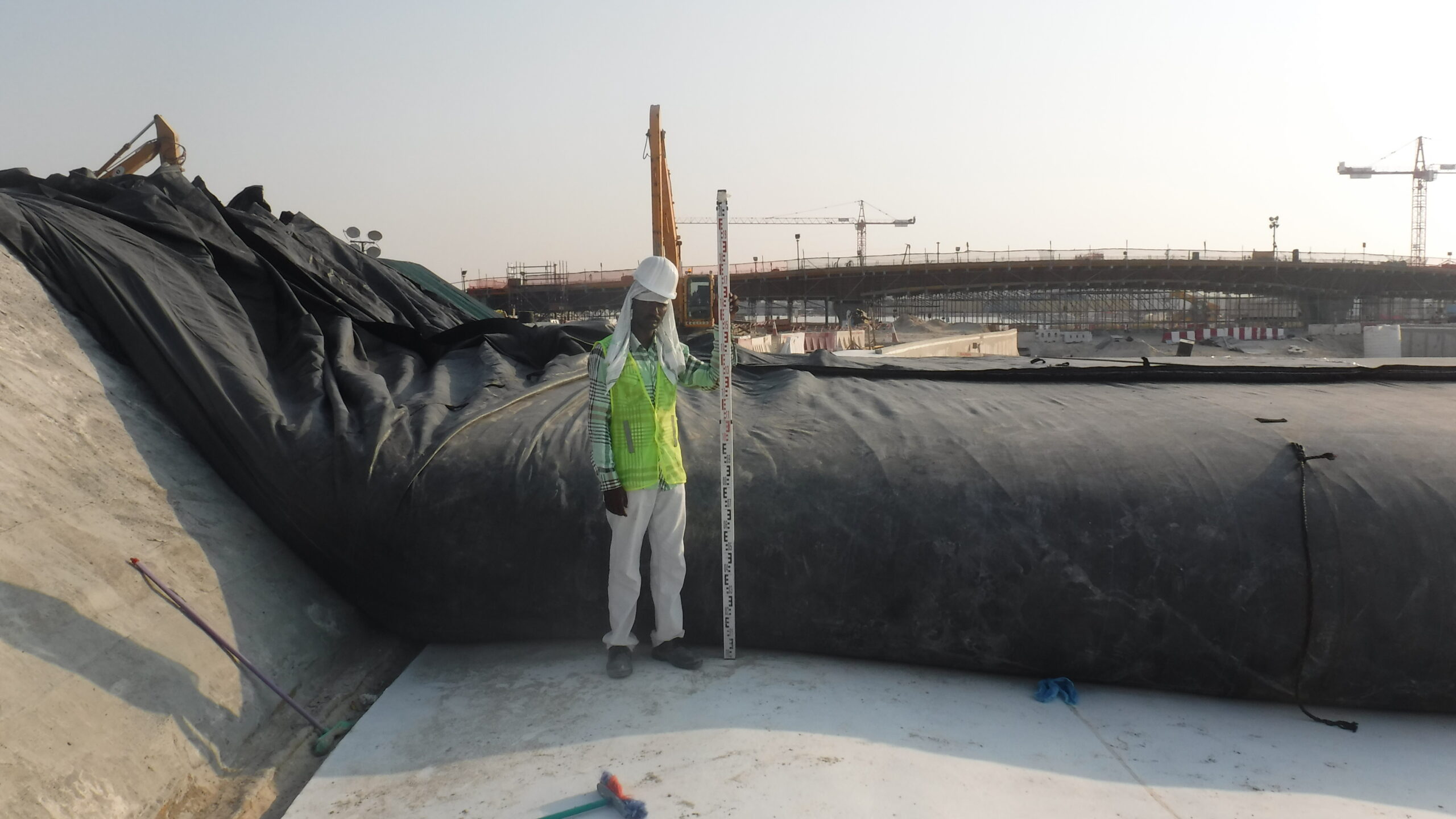
The AquaDam is about 4ft taller than the top of the lagoon bank, which is where the worker is standing. The bank to the left of the worker was constructed to allow the AquaDam to reach it's maximum height at the lowest elevation where it was laid.
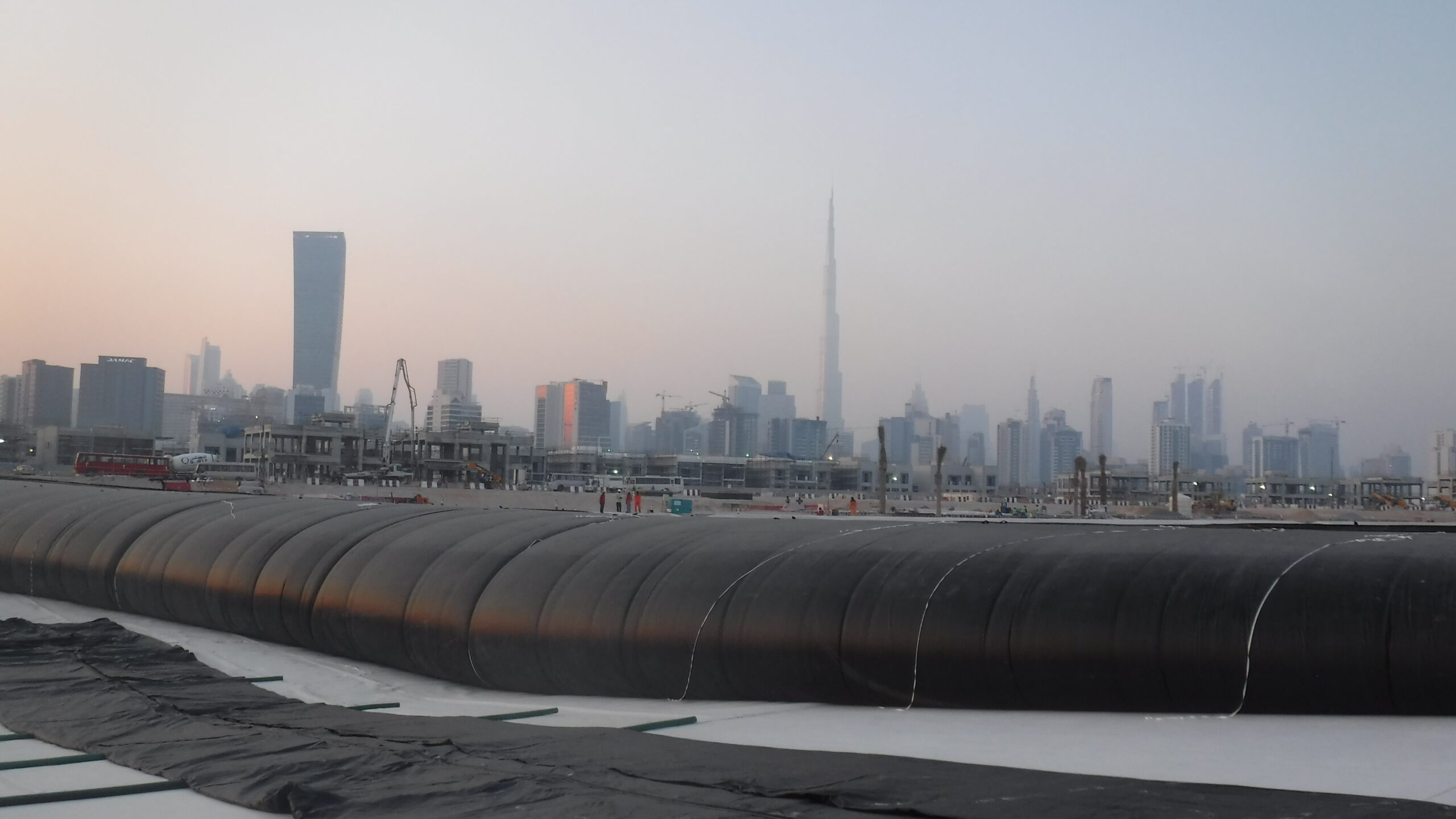
A beautiful sunset on city skyline of the Dubai landmark, Burj Khalifa.
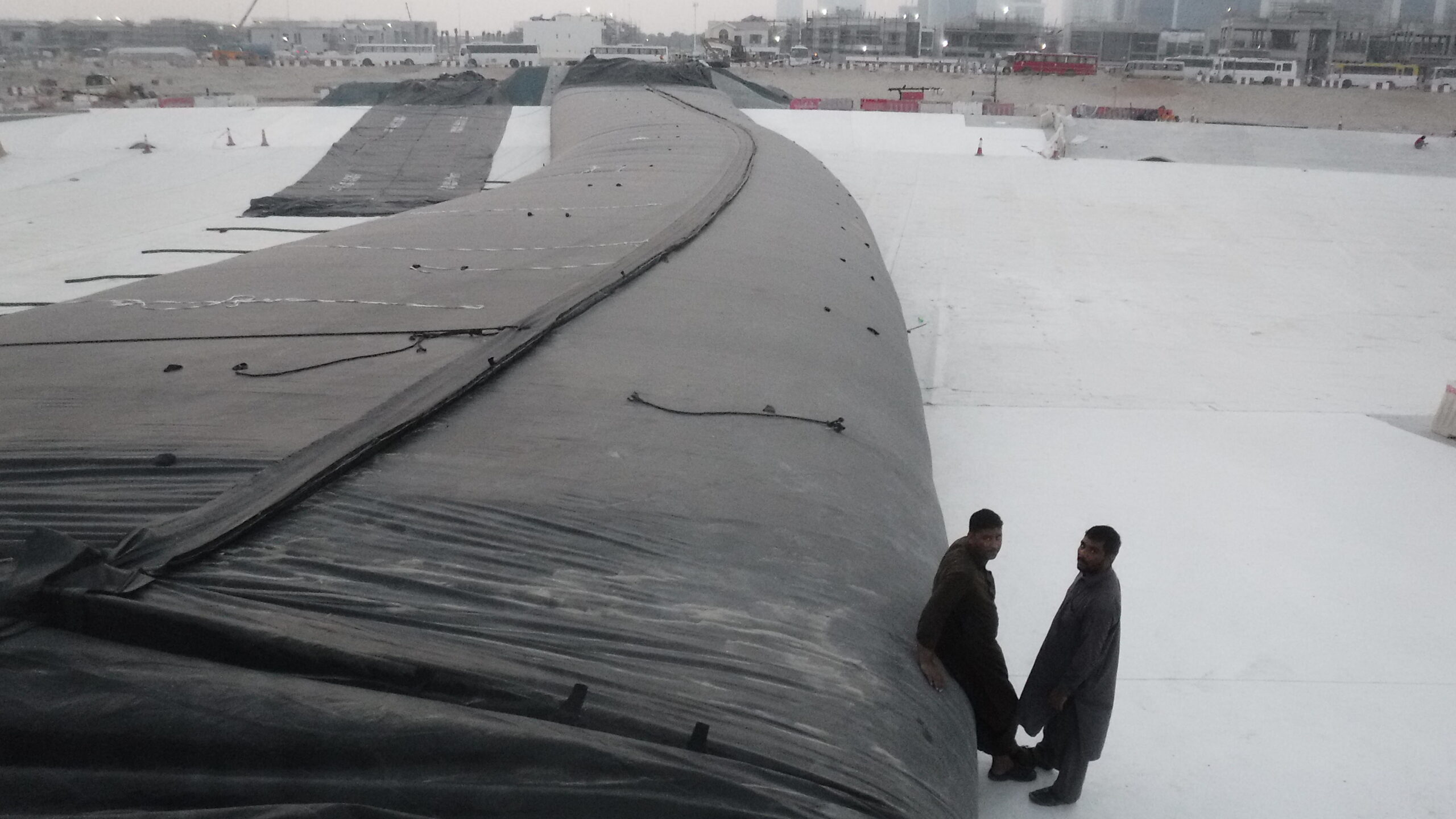
The 16ft tall AquaDam is almost full in this photo.
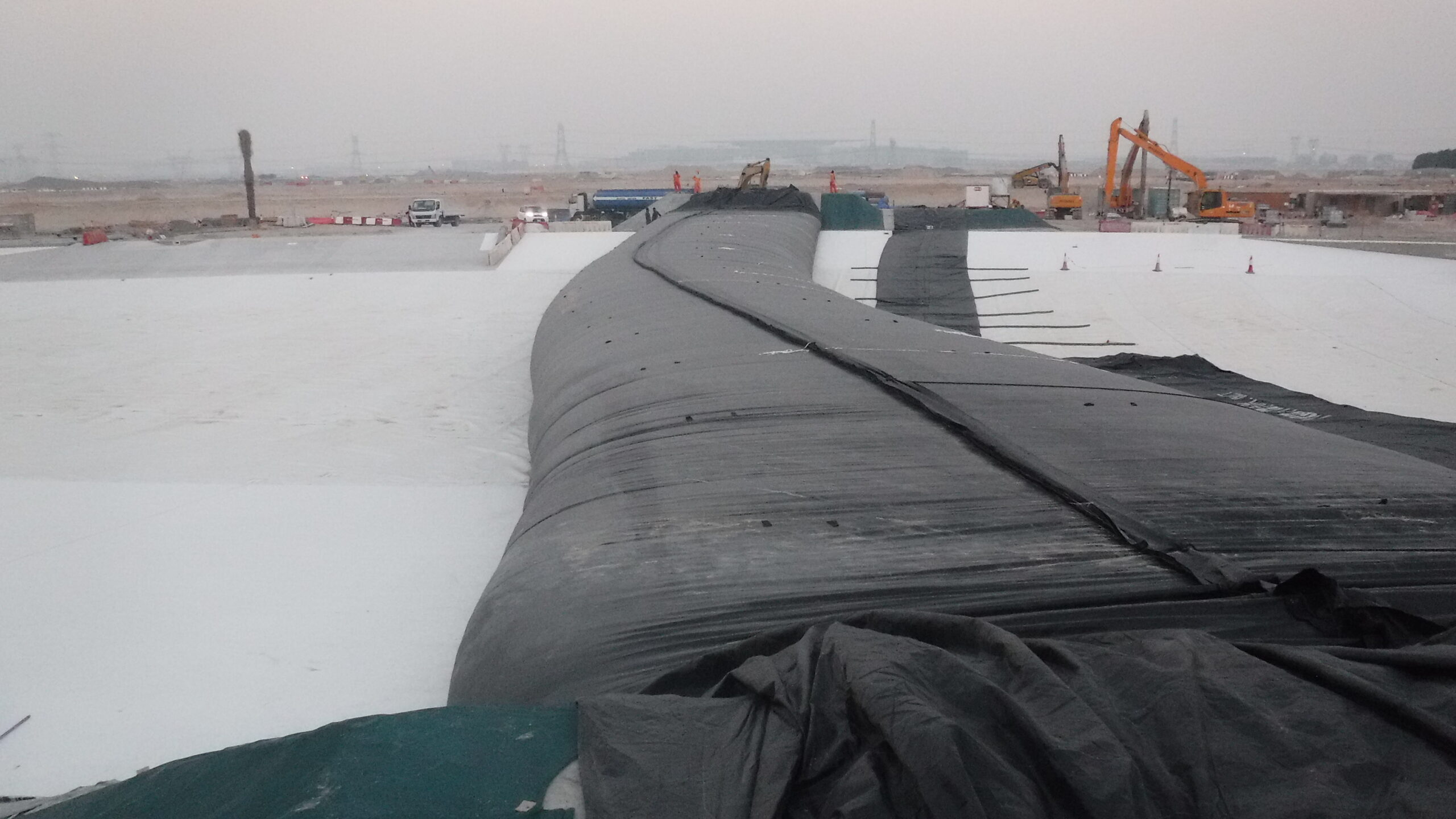
The primary 16ft tall AquaDam is full enough for the contractor, which was around 15ft in height at the lowest elevation where the AquaDam was laid.
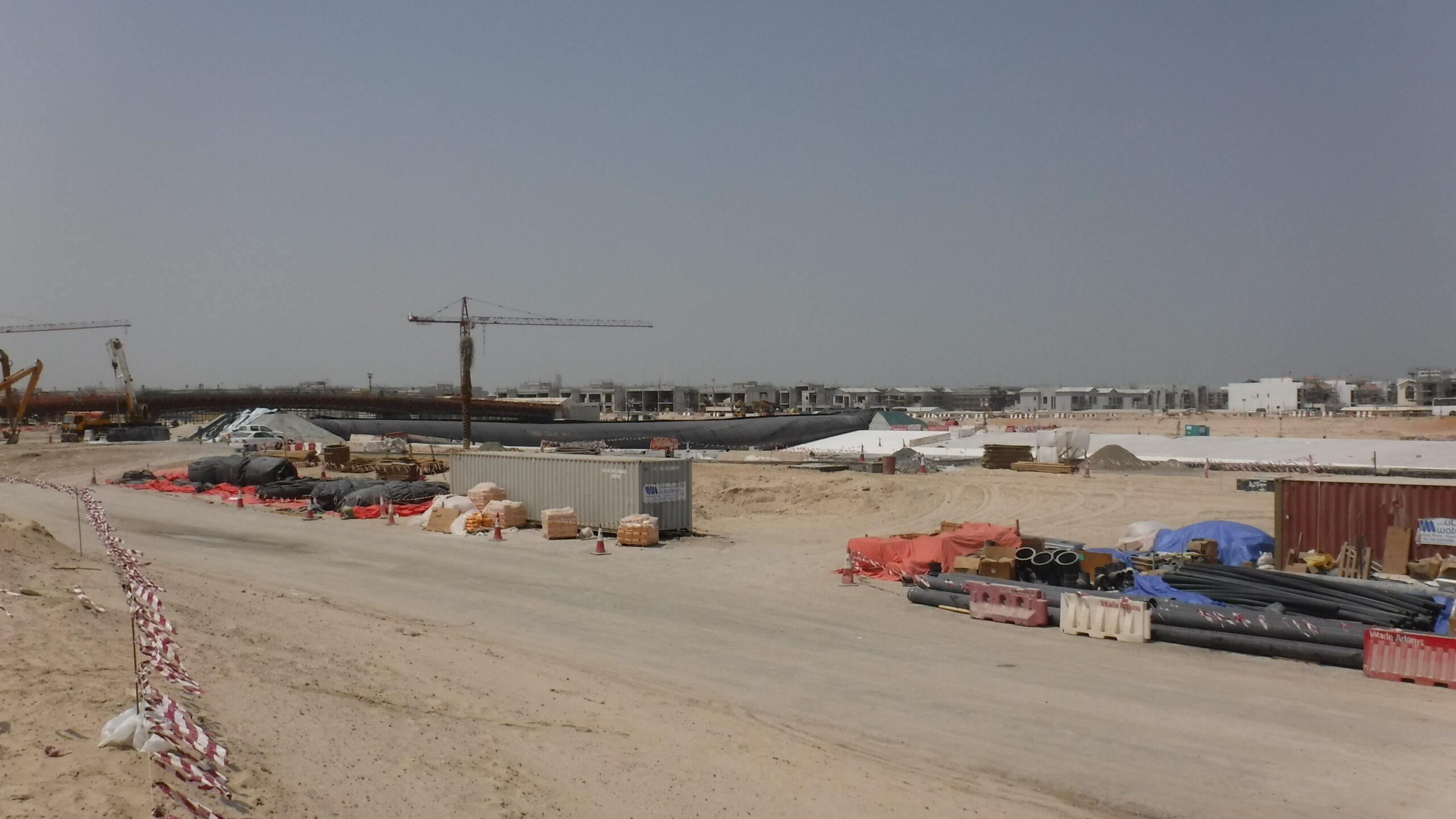
A view of the AquaDam cofferdam system several hundred yards across the site from an access road.
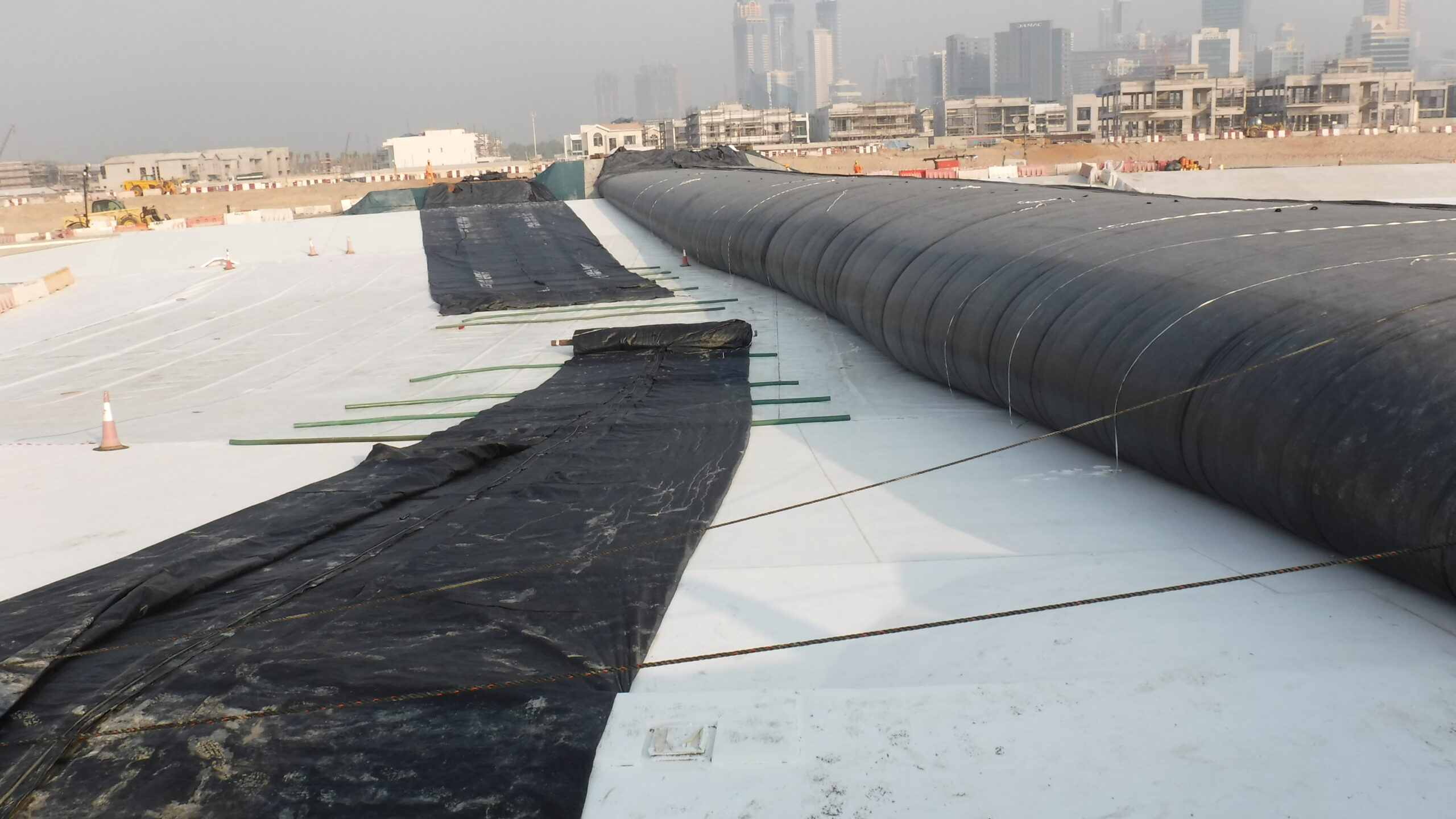
These two (2) 12ft tall support AquaDams will now need to be rolled up and recovered, prior their starting bank improvements.
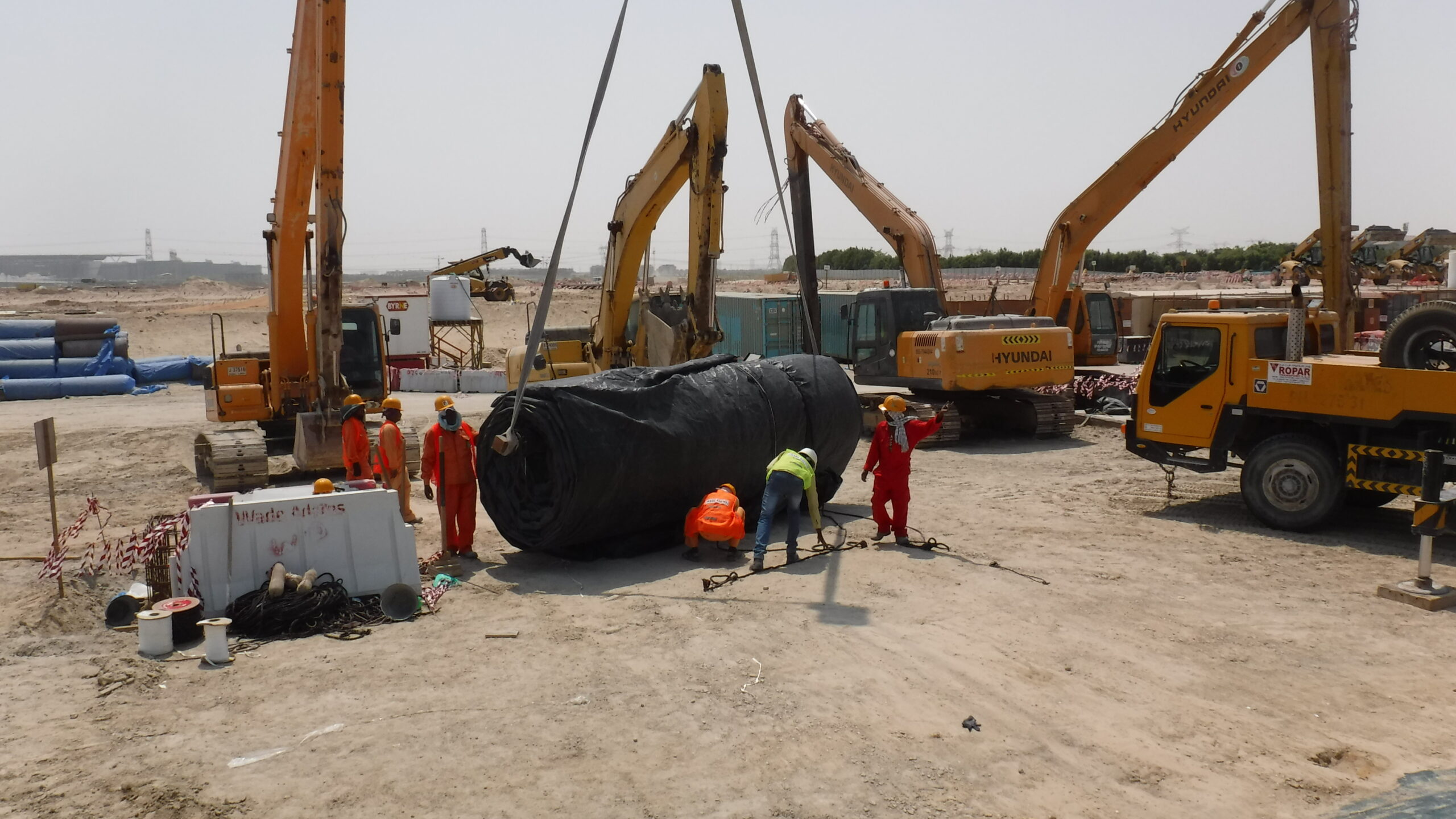
The first 12ft tall AquaDam was rolled up and recovered with no problems.
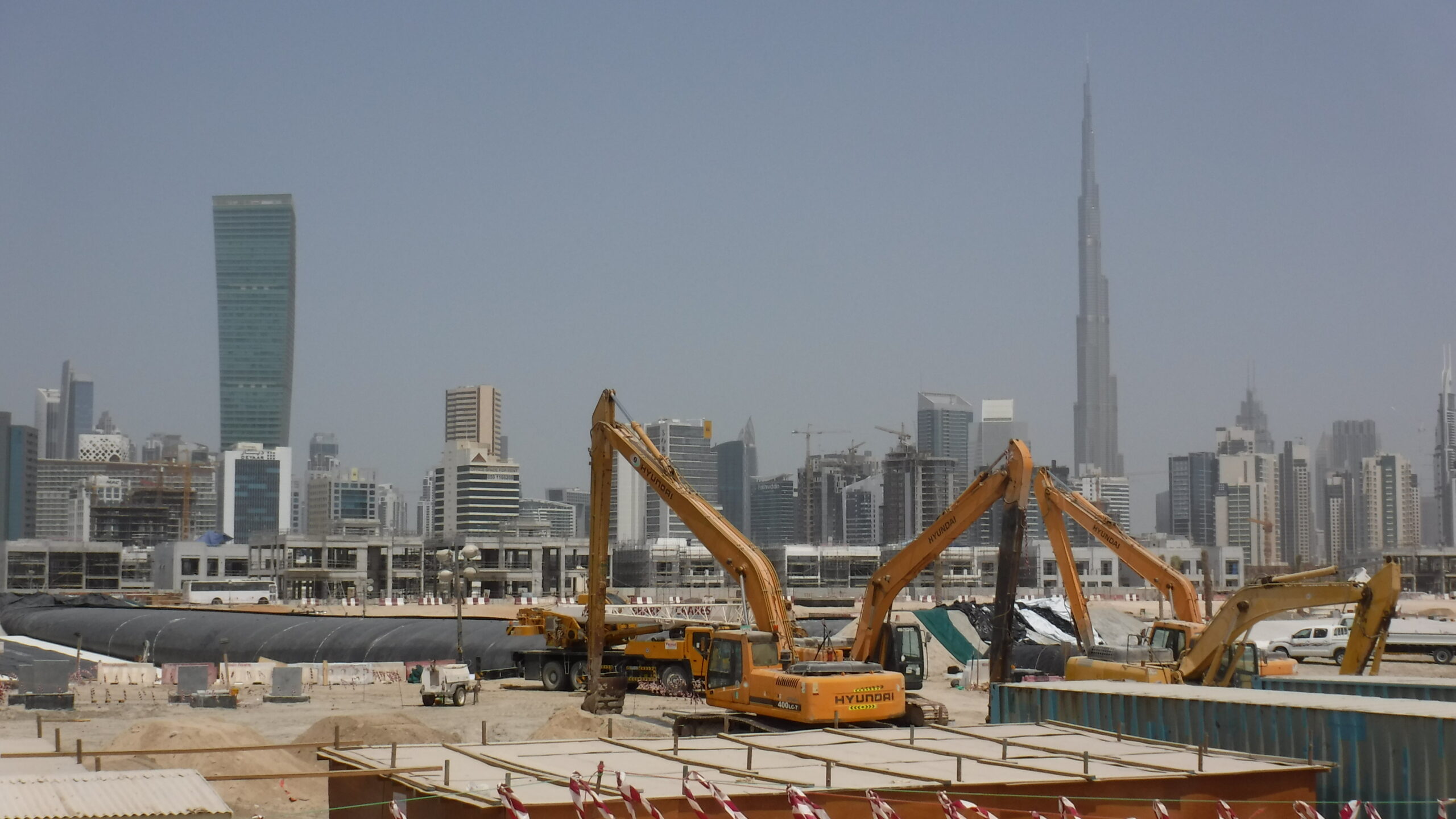
Here is a great photo of the AquaDam cofferdam system as it is being installed, some of the equipment use to install it, and the World's largest building all in the same shot.
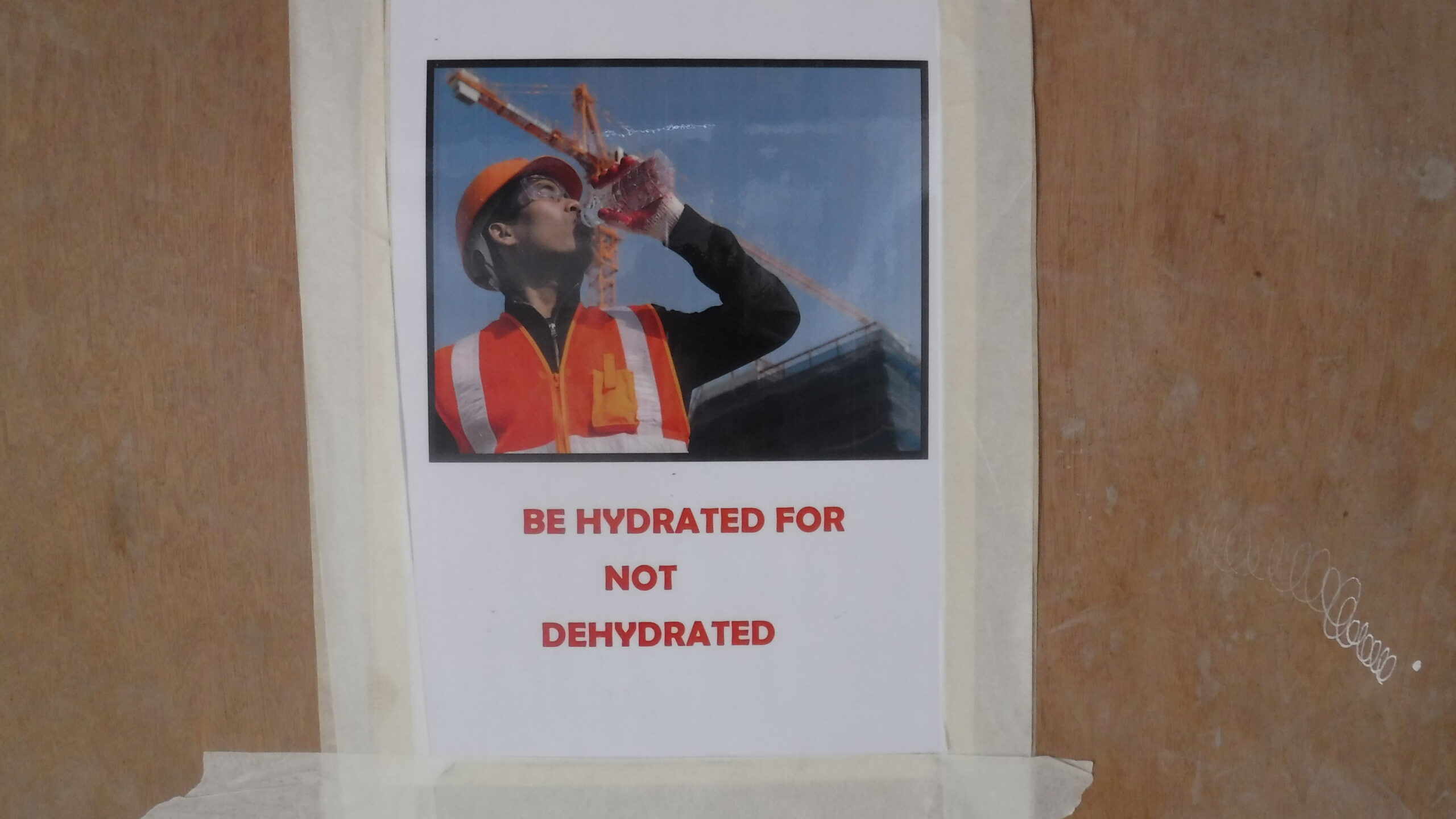
Some things may get lost in translation, but hydration should never be one of those things.
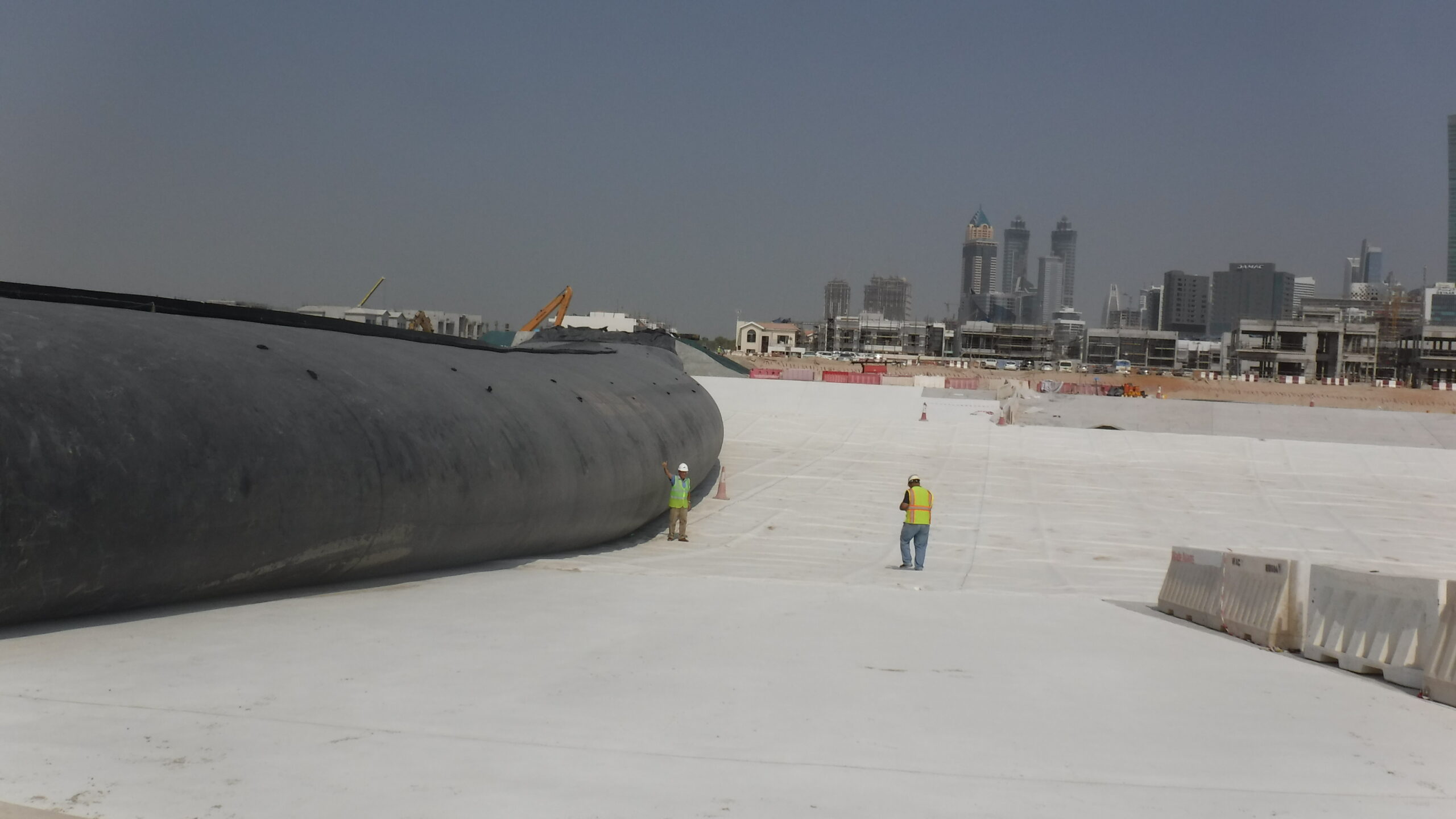
Here we can see a 5ft tall engineer standing next to a roughly 15ft tall AquaDam at its lowest point.
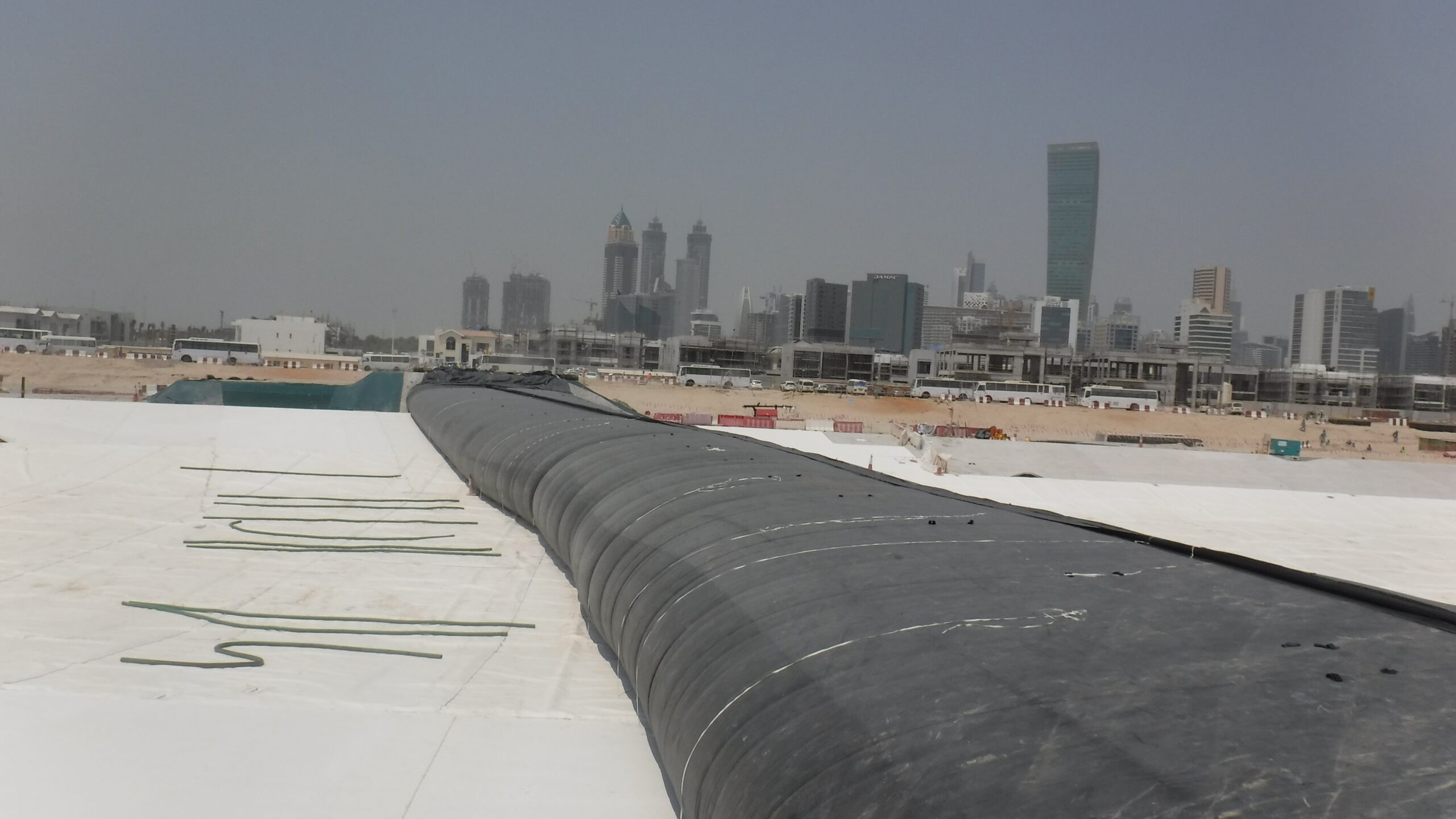
The second 12ft tall AquaDam has been rolled up and recovered. The starting bank for each one can now be improved and then the units will be deployed again.
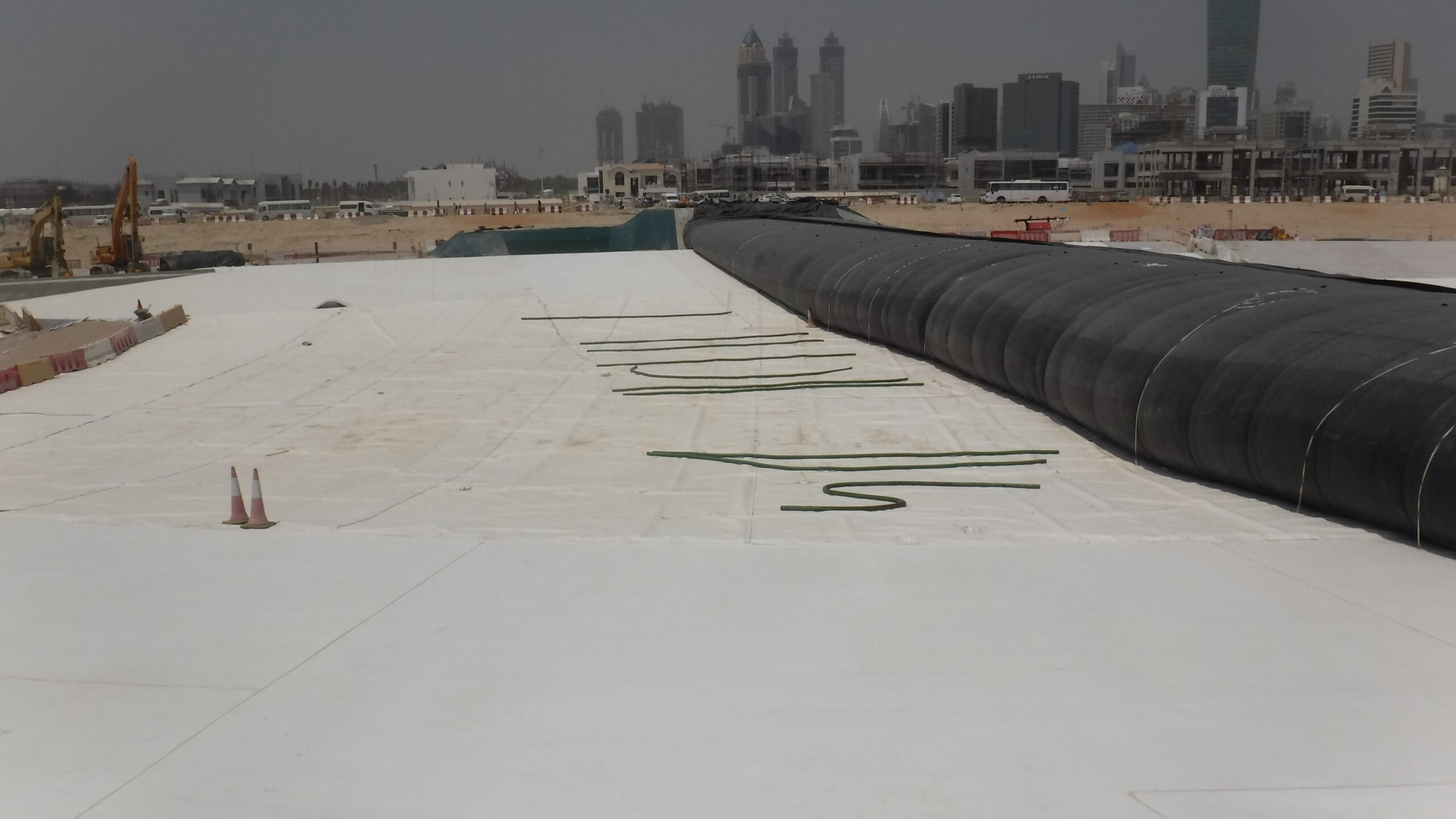
The green suction hoses have been laid down to help relief any water that may seep under the primary 16ft tall AquaDam. The suction hoses will allow the water to exit the space between the primary and support AquaDams.
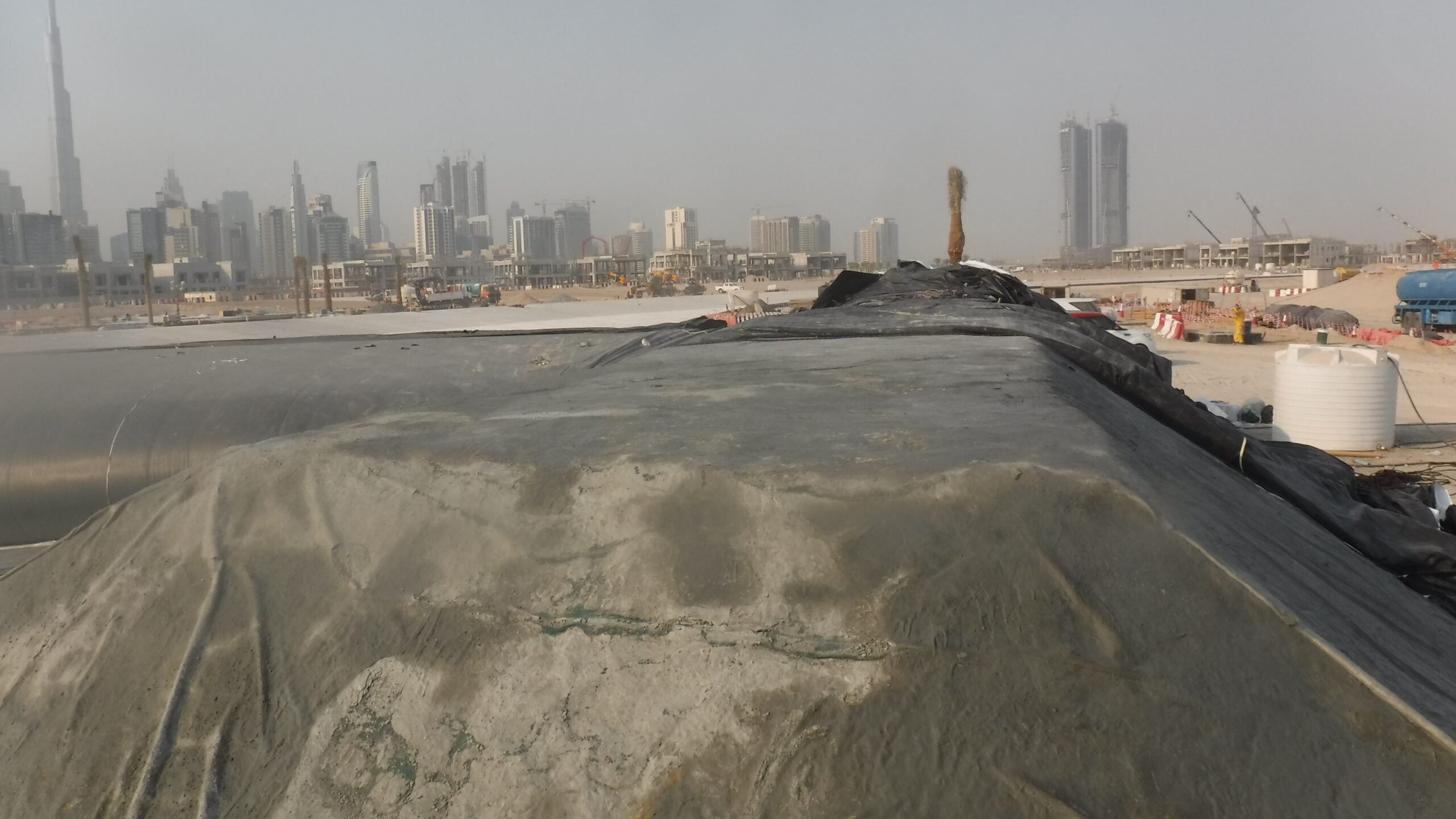
The starting bank improvement has been completed, on one side. Now the 12ft tall support AquaDam can be laid outside by side next to the 16ft tall primary AquaDam.
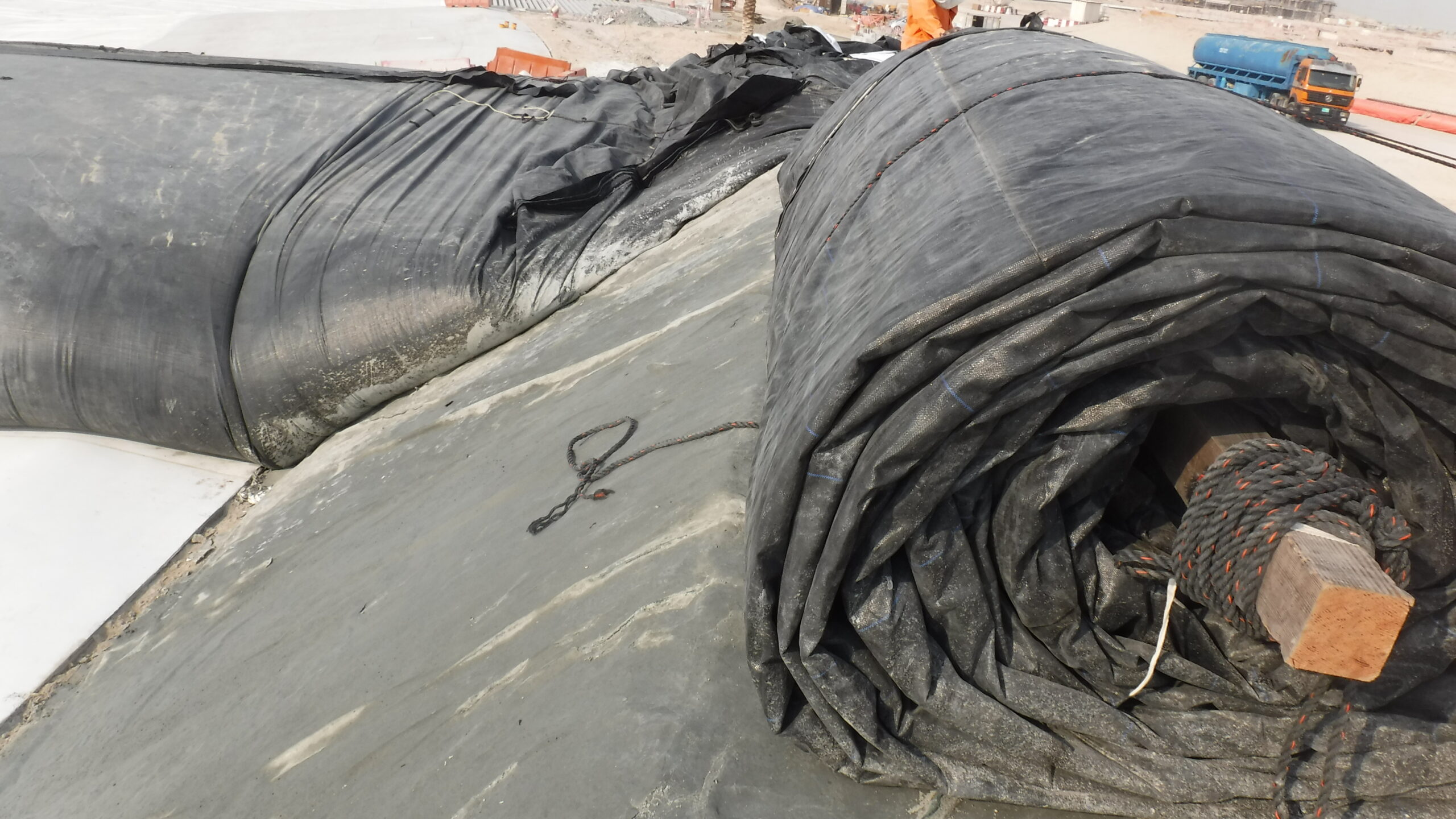
The 12ft tall support AquaDam has been place on the improved starting bank and is now ready to be unrolled and filled.
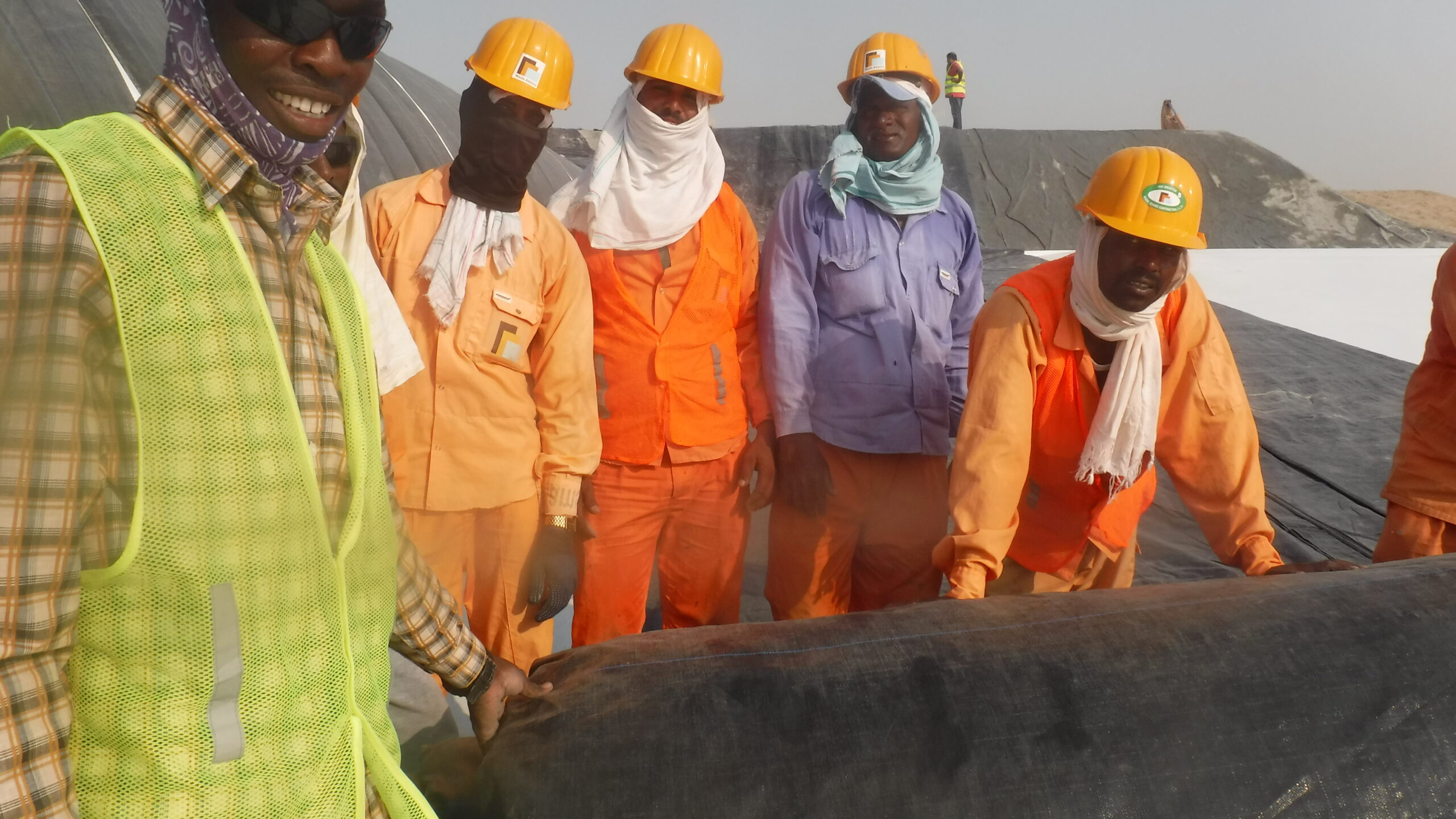
Workers helping to unroll the AquaDam into the desired position.
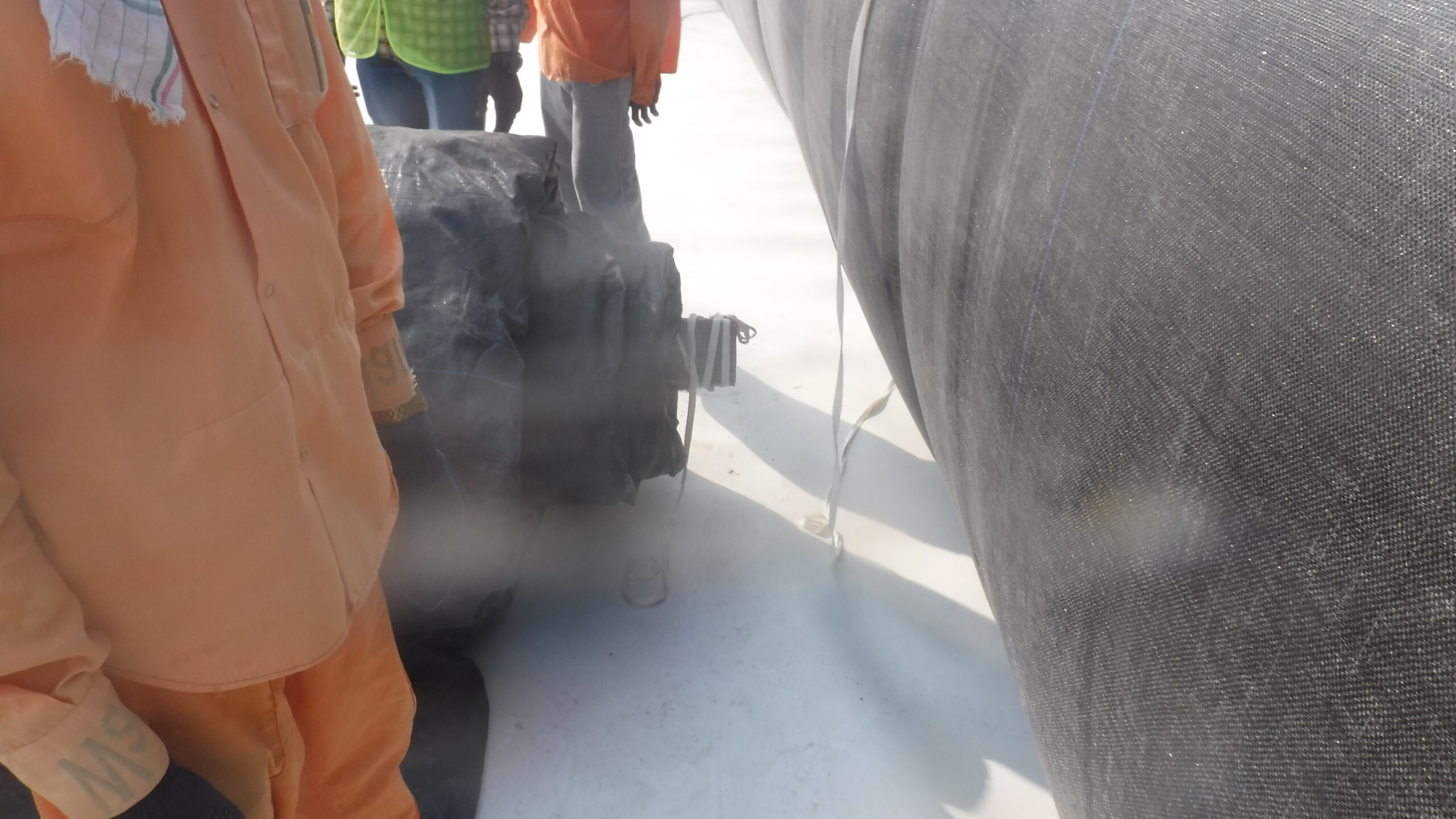
The 12ft tall support AquaDam is now aligned very closely with the side of the 16ft tall primary AquaDam.
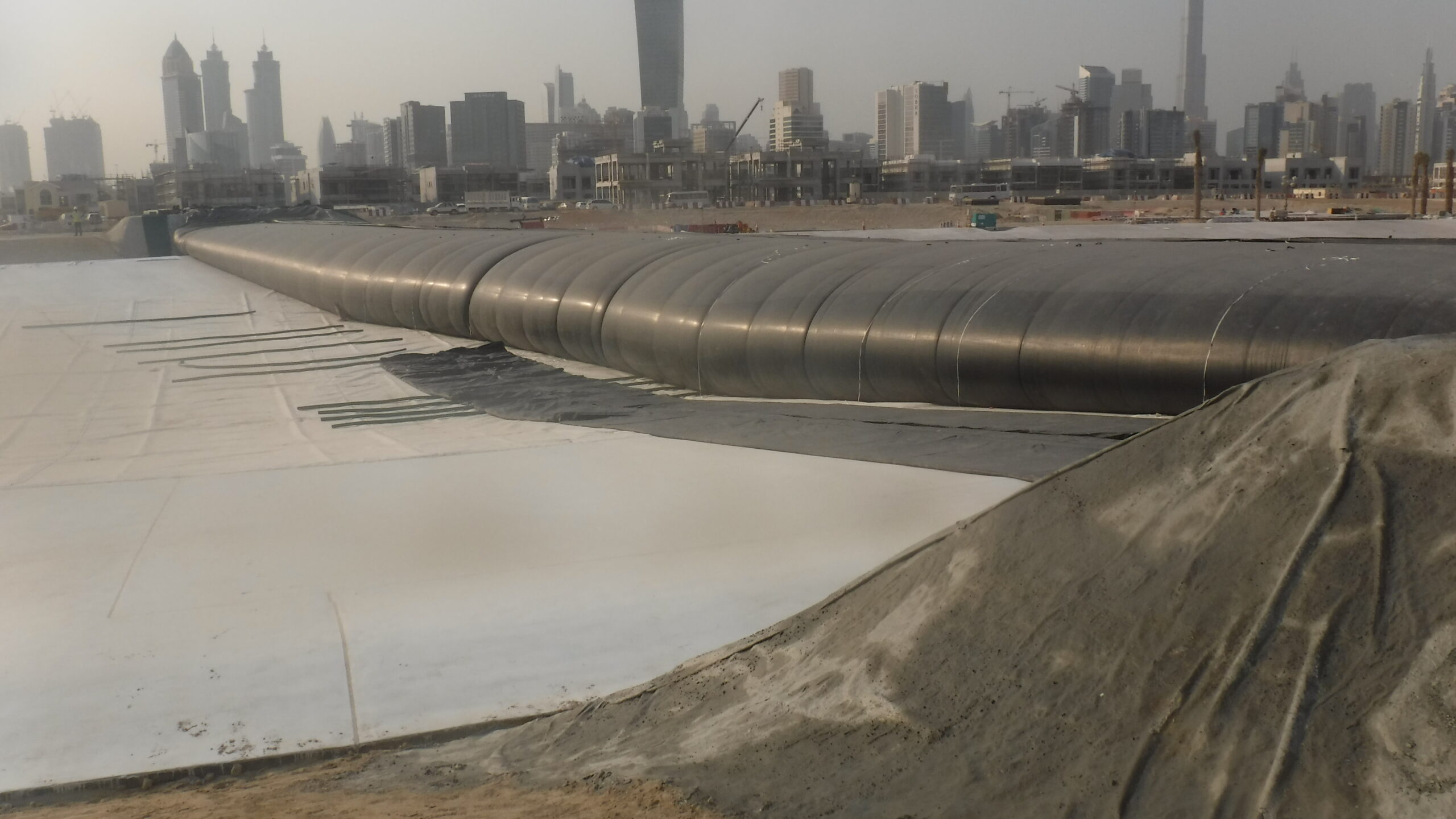
The first 12ft tall support AquaDam has been deployed along the intended alignment. Seepage release hoses (3in suction hose) have been laid beneath support AquaDam prior to filling the unit.

The 12ft tall AquaDam is now filling with water. The white ropes are being used to keep the two (2) AquaDams close together.
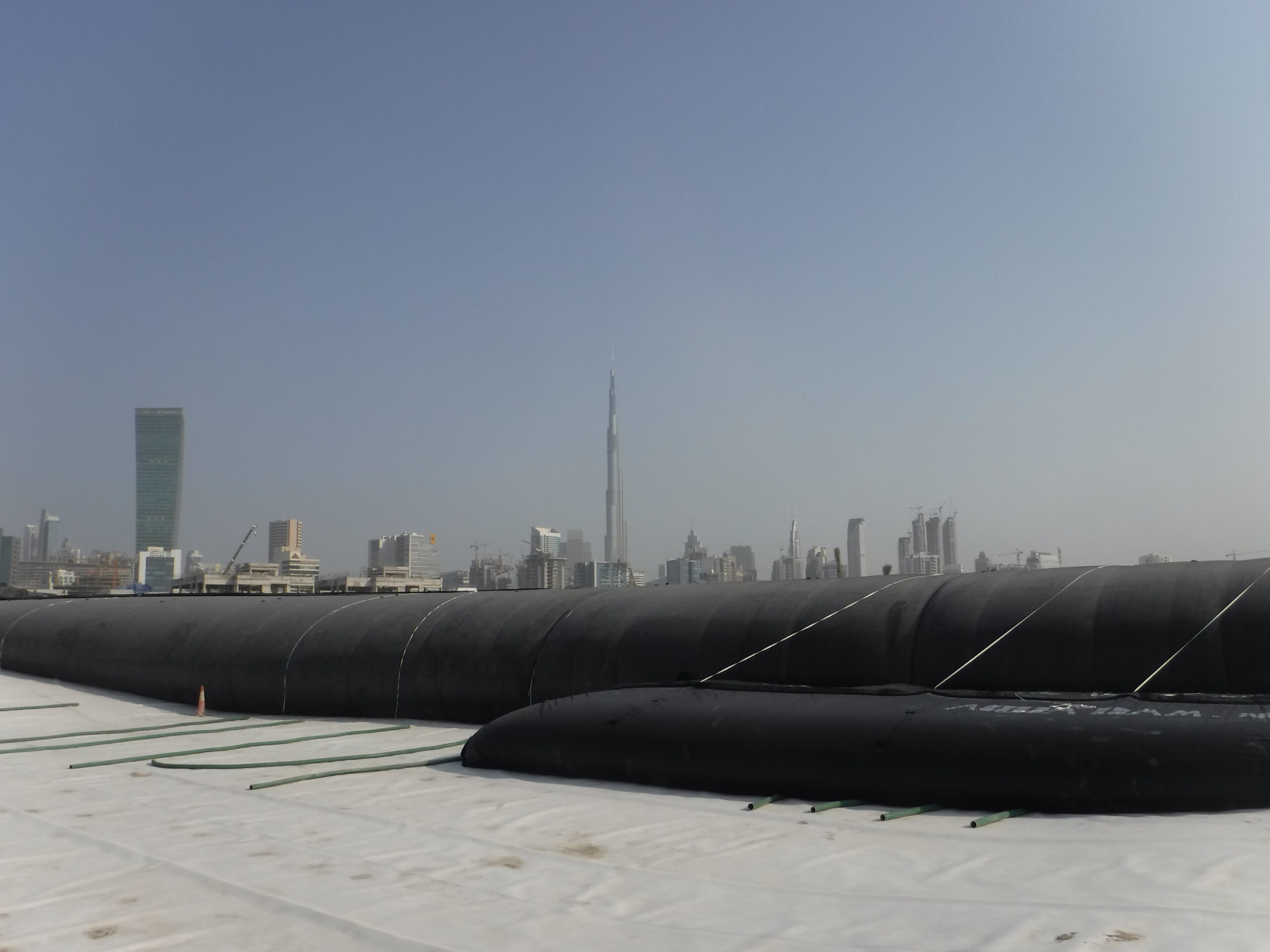
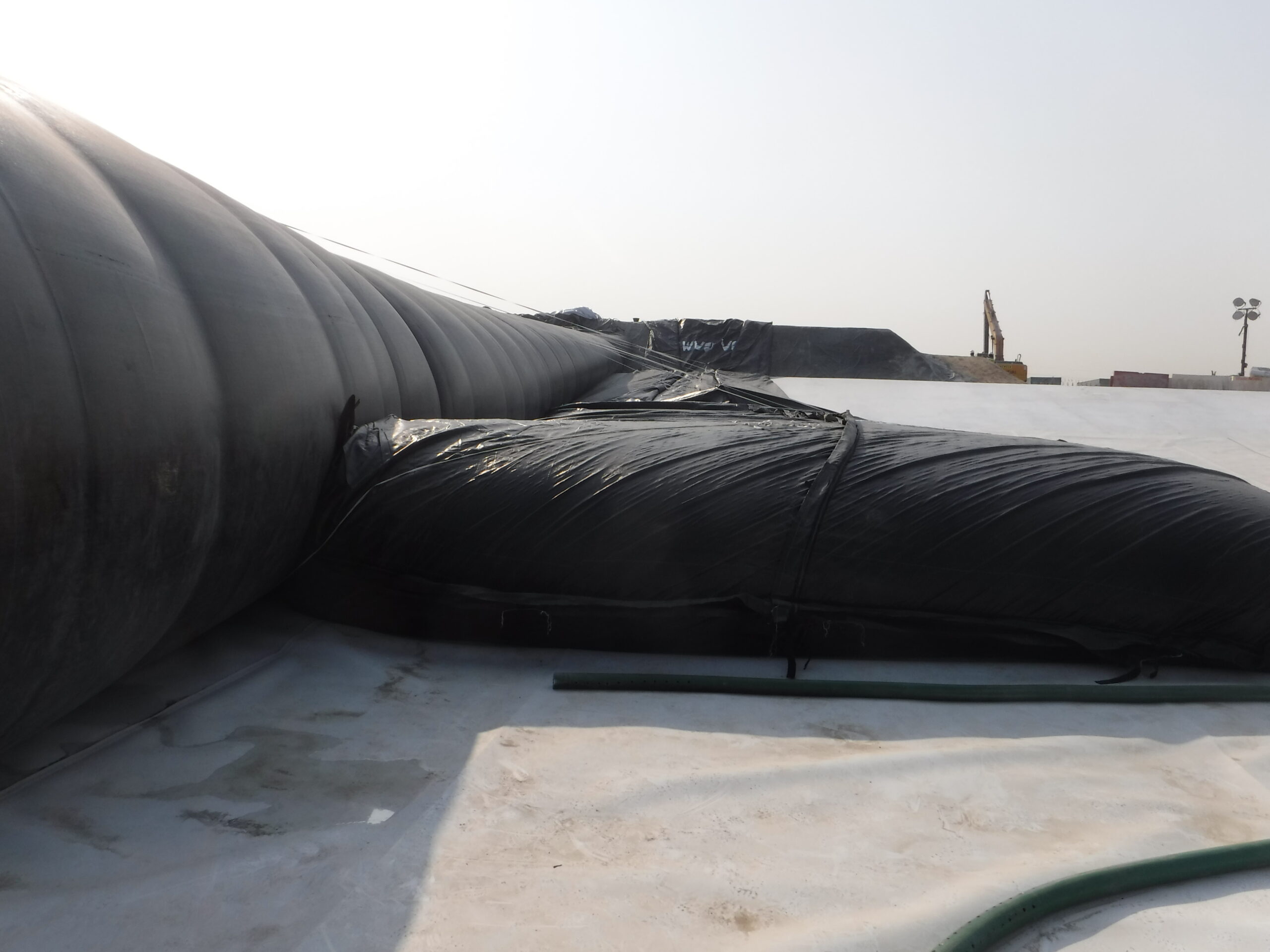
A photo showing the closed end of the 12ft tall support AquaDam. This unit is about 3-4ft tall here at the closed end.
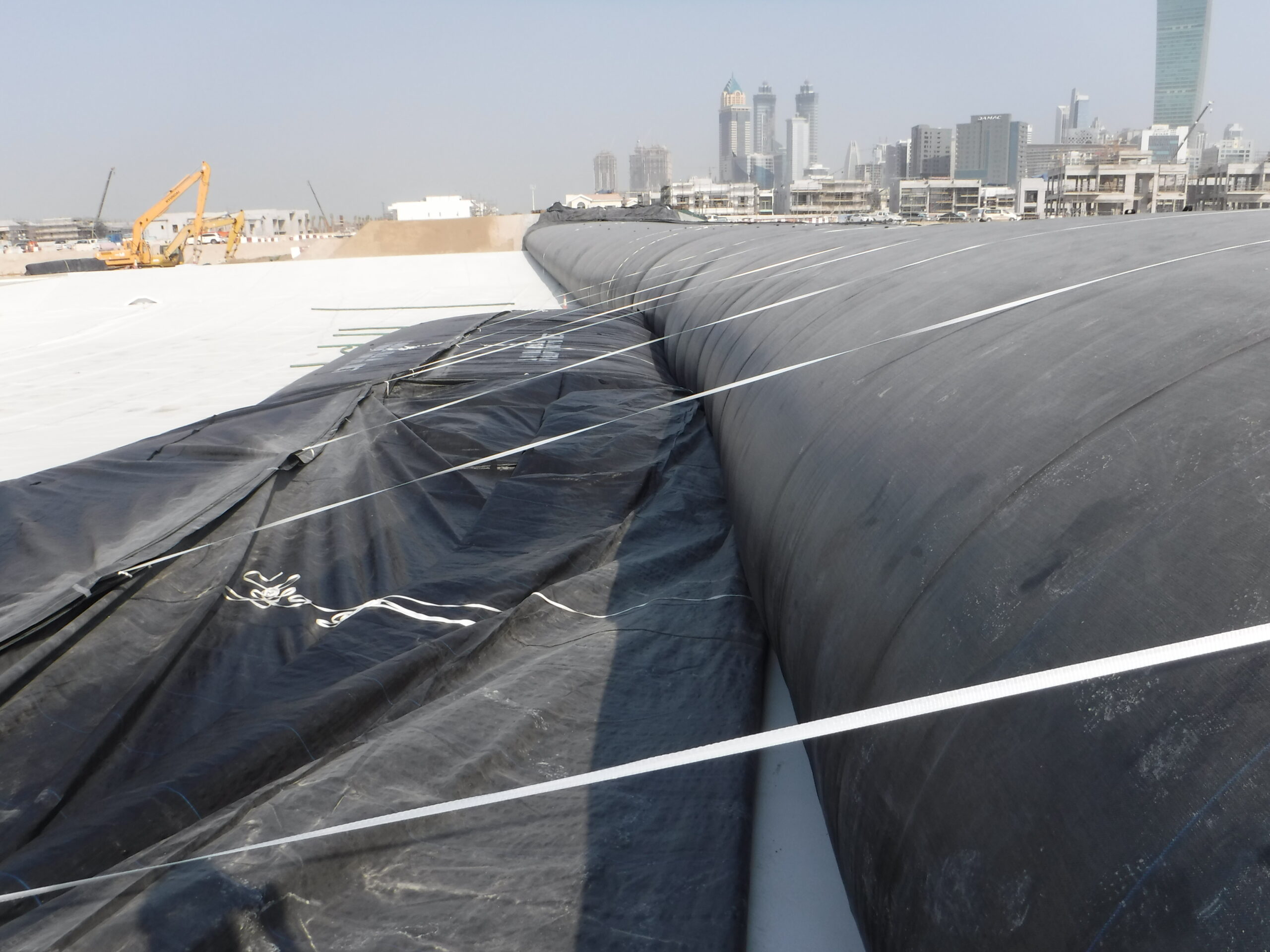
These ropes are doing a great job at keeping the 12ft tall AquaDam in place as it fills.
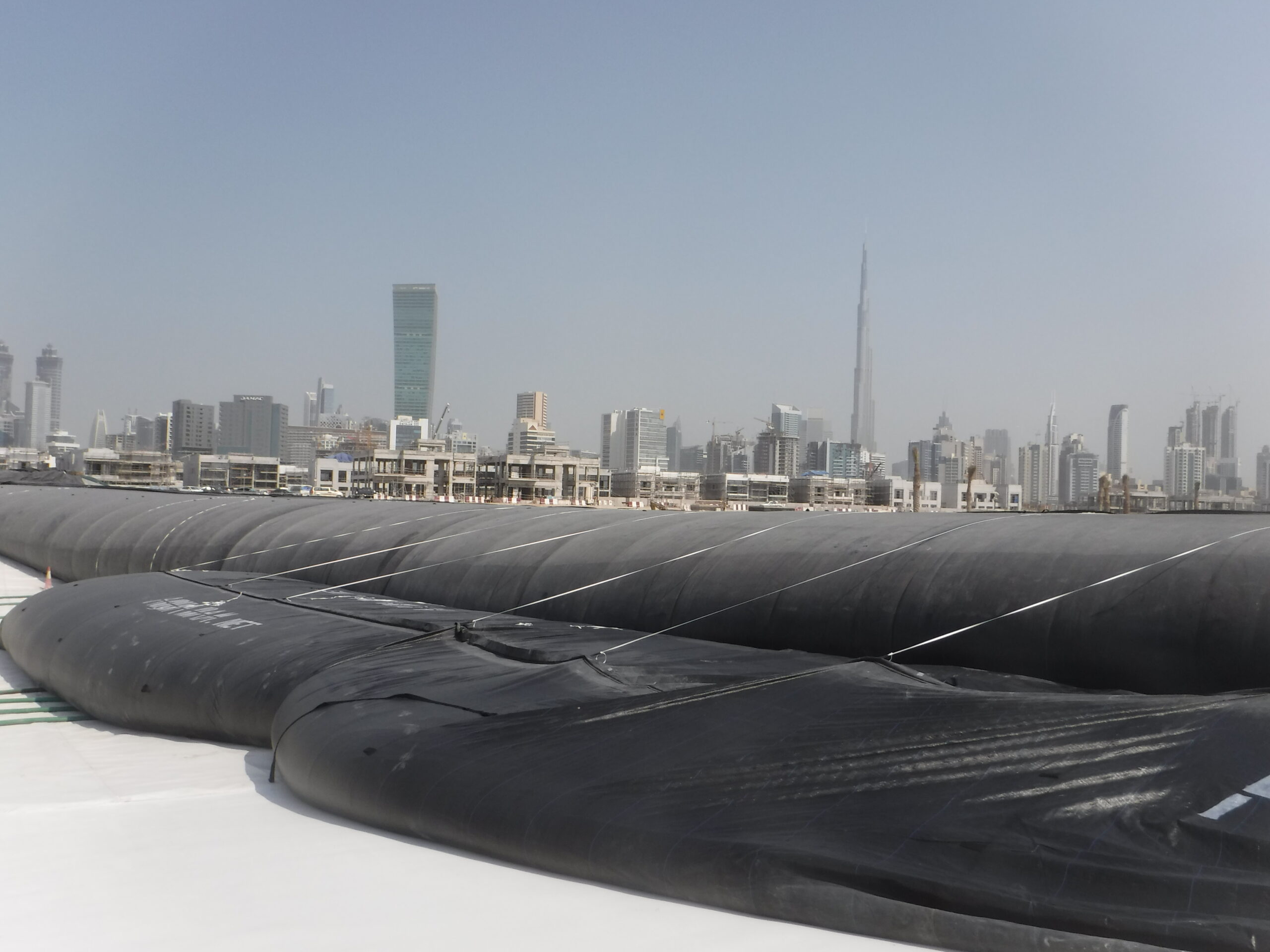
The 12ft tall AquaDam continues to fill.
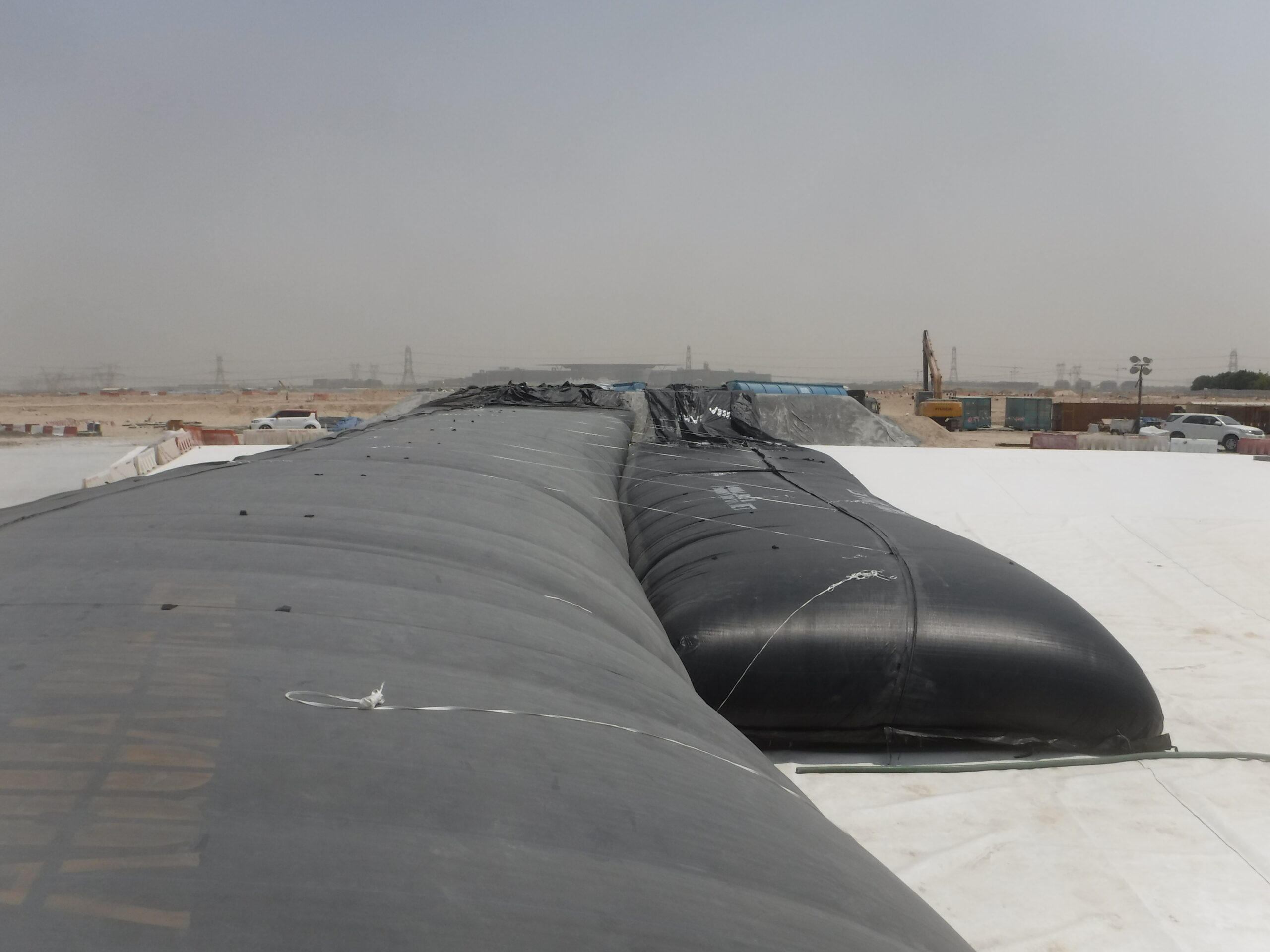
The 12ft tall support AquaDam continues to fill, but when too much tension is present in one the white ropes, the tension can be released with either a slip knot or by cutting the rope.
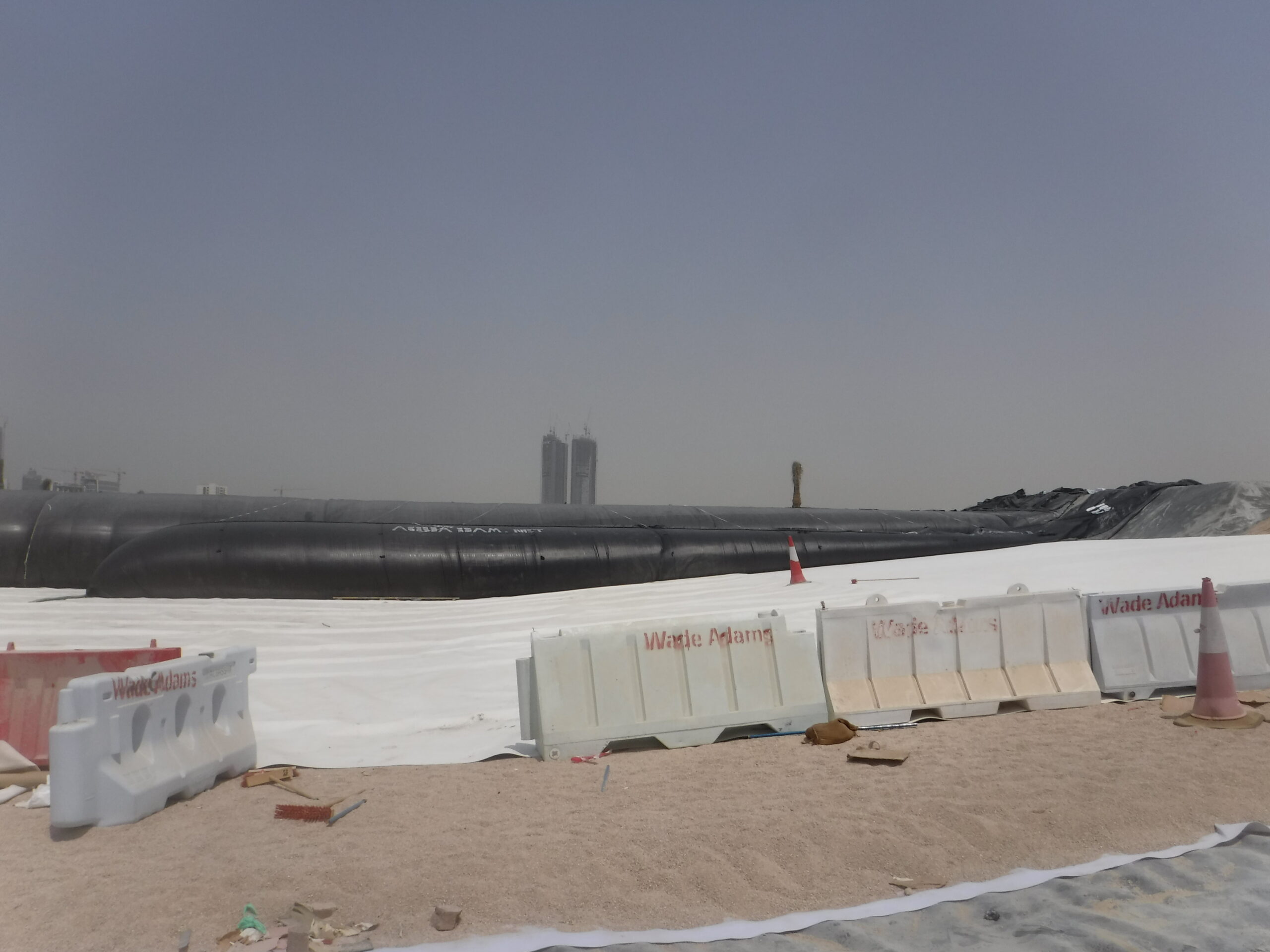
The 12ft tall support AquaDam did not quite meet it's maximum height, but the unit was full enough for the contractor at roughly 10ft in height (on the left side of the photo).
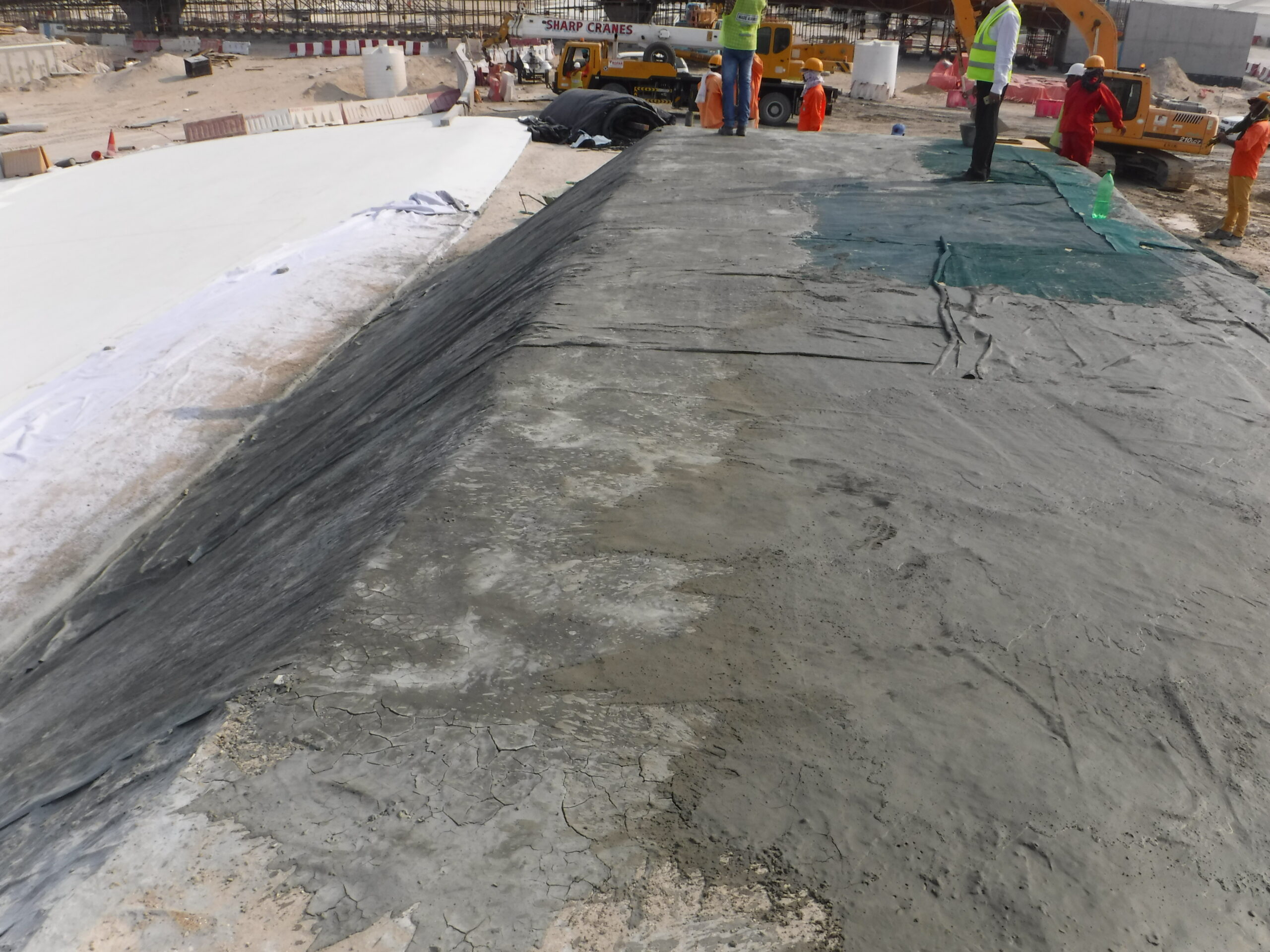
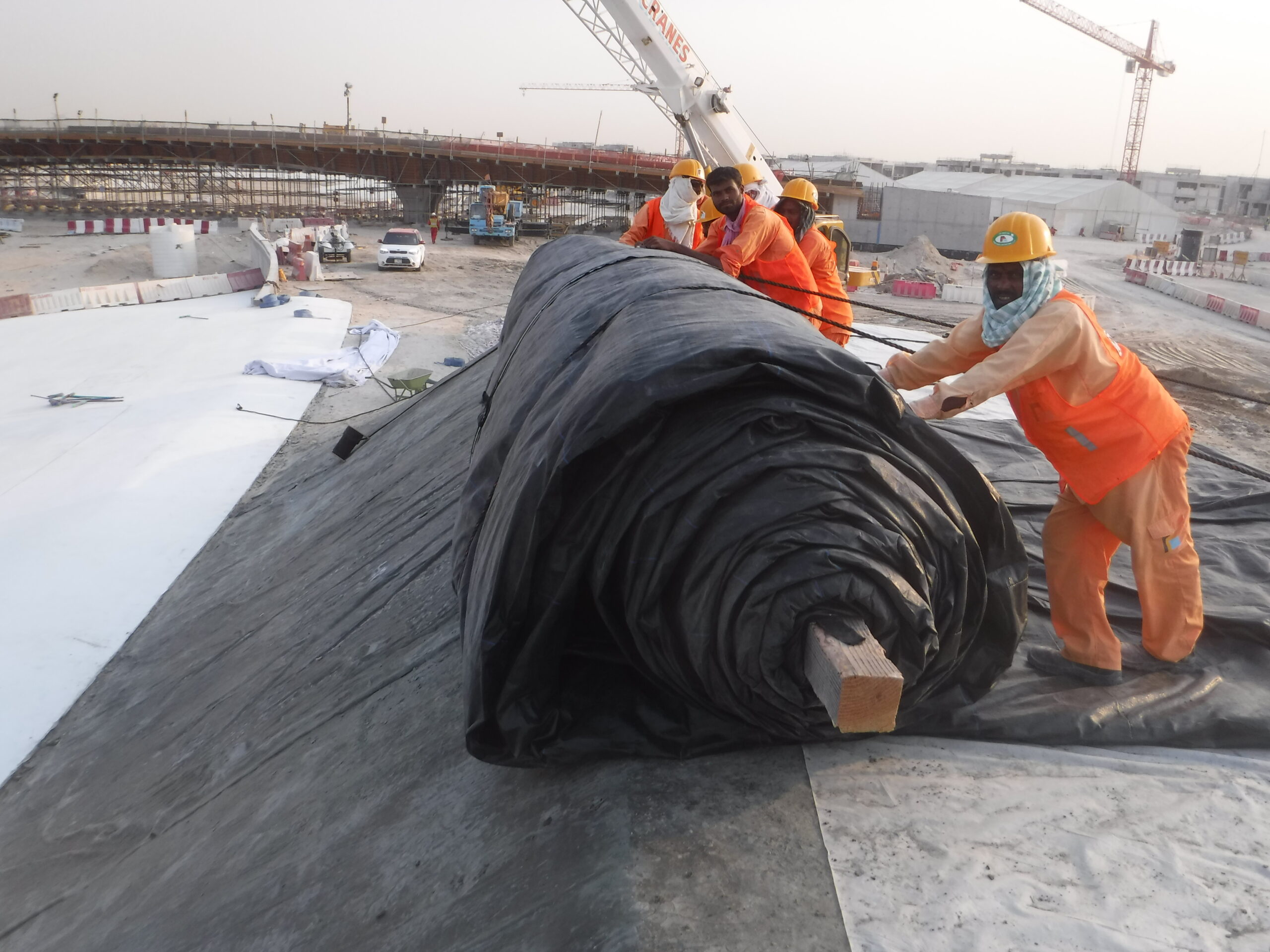
In this photo, workers are unrolling the second 12ft tall AquaDam down the starting bank. Ropes tied to anchors (vehicles) were used to control the rate at which the AquaDam could descend toward the desired location.
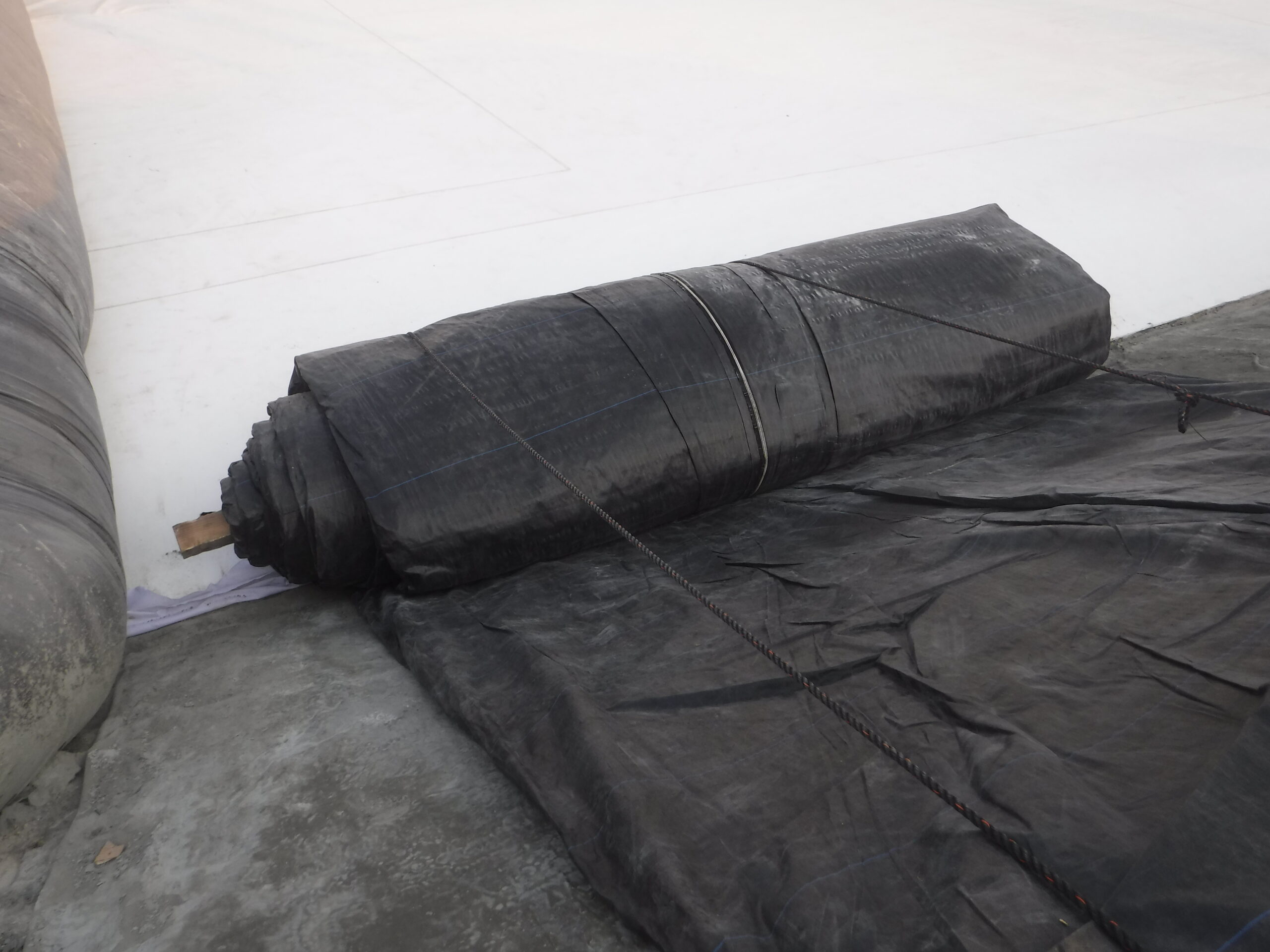
The second 12ft tall support AquaDam has now rolled down to the toe of the starting bank.
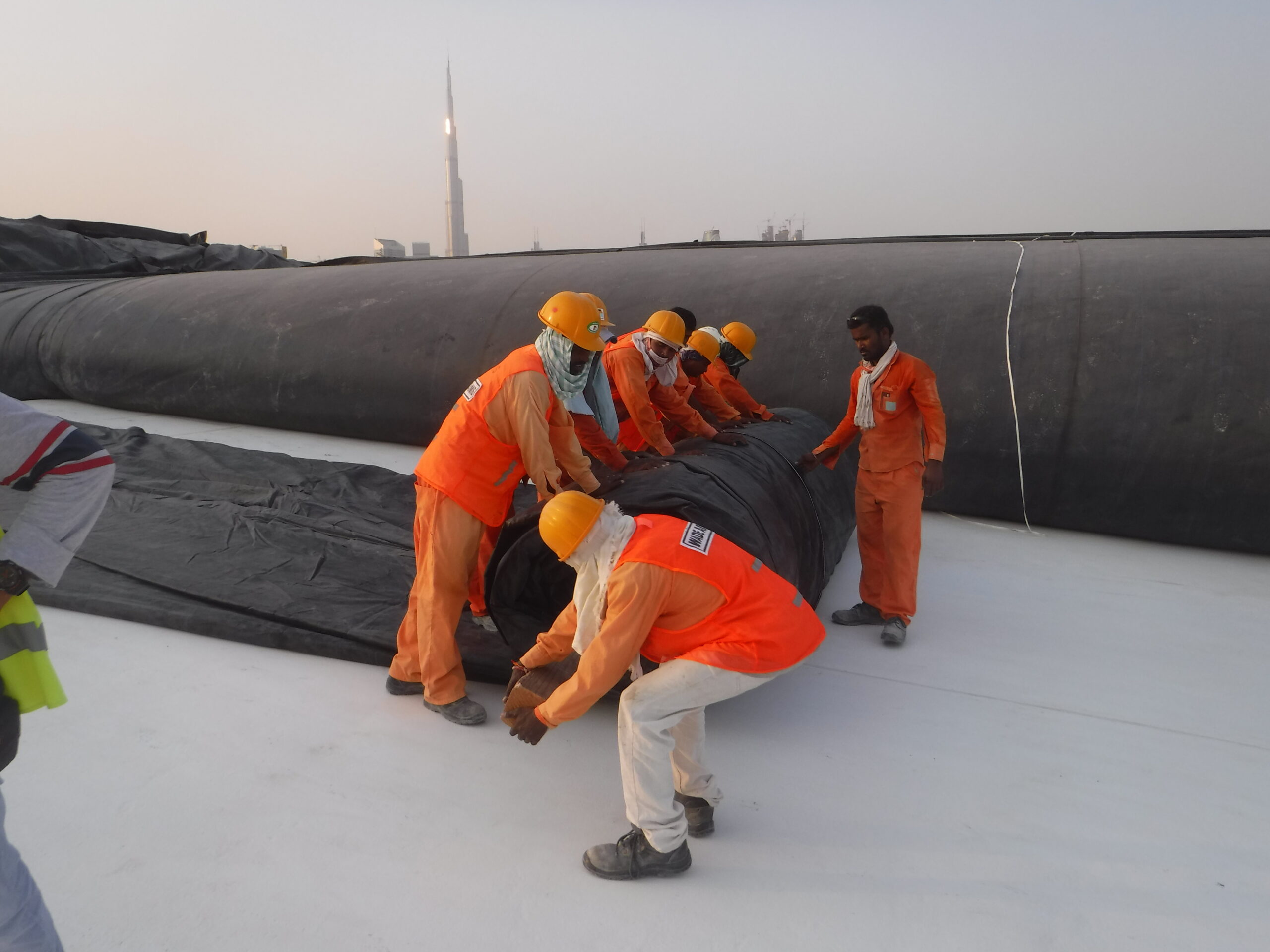
Workers are unrolling the 12ft tall AquaDam down the slope along side the primary 16ft tall AquaDam.
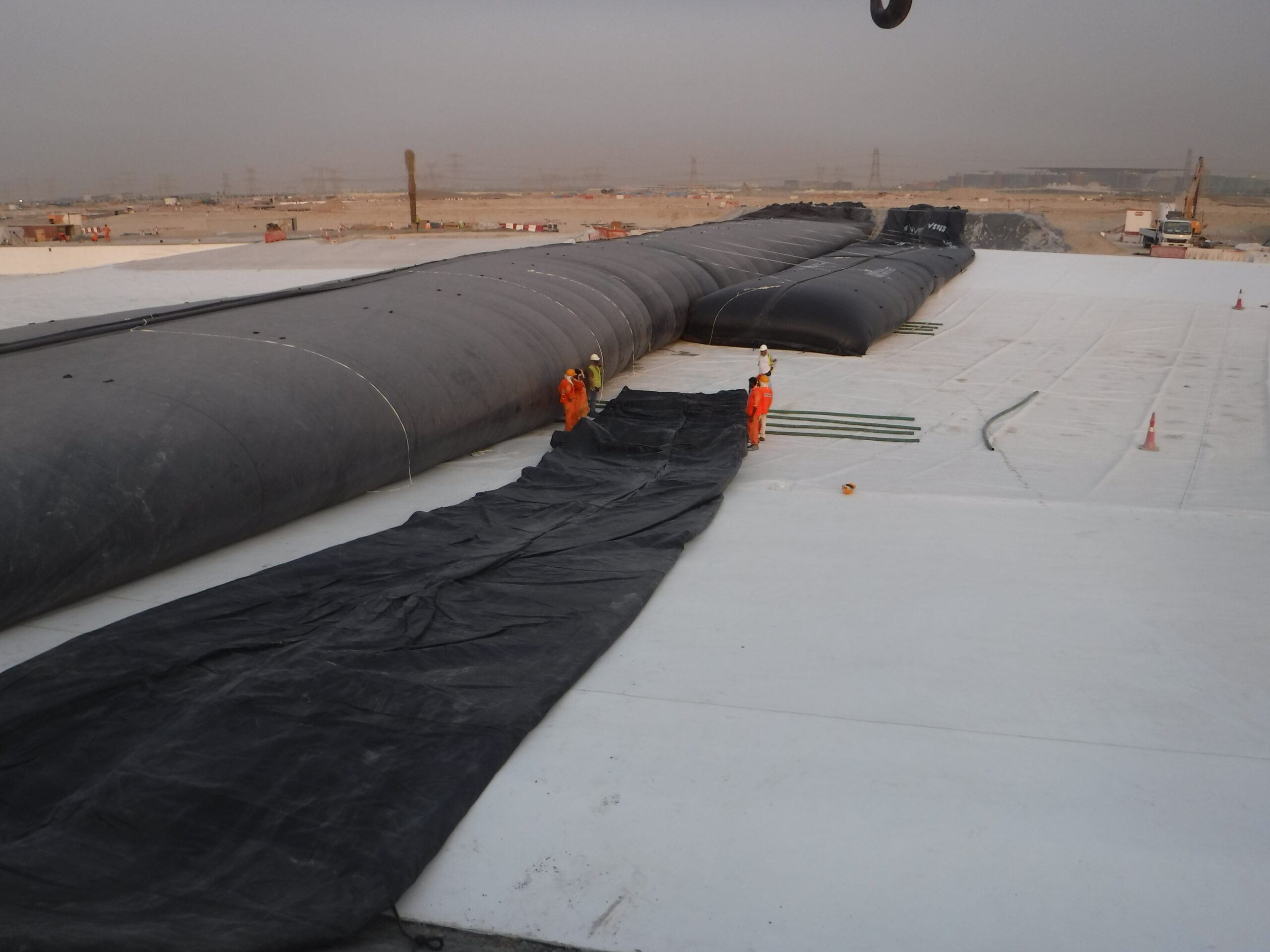
The second 12ft tall support AquaDam has been fully unrolled and is now ready for filling.
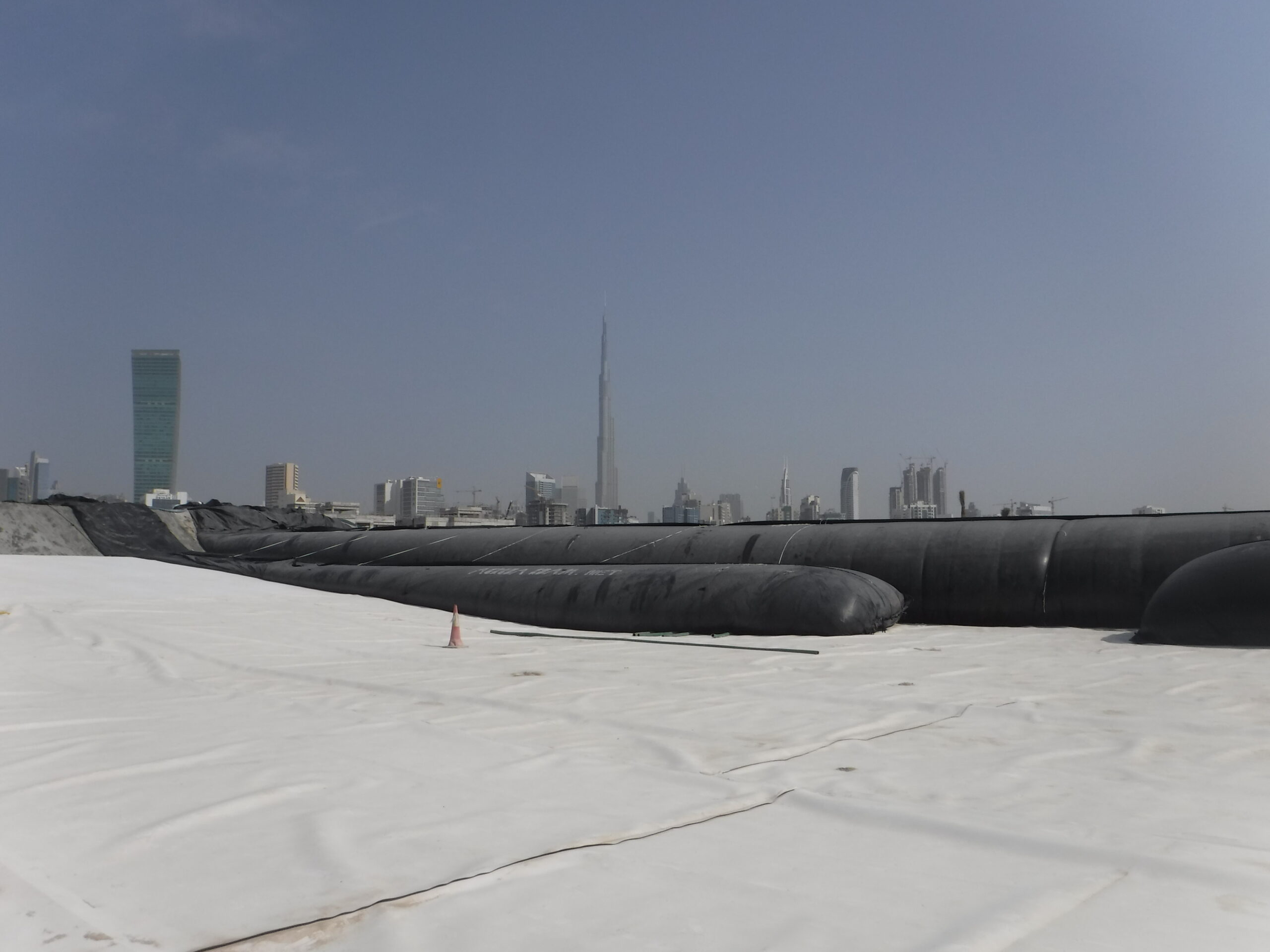
Workers are unroll a 4ft tall that will lay behind the "seepage hoses", in order to promote a ponding area for any seepage to collect.
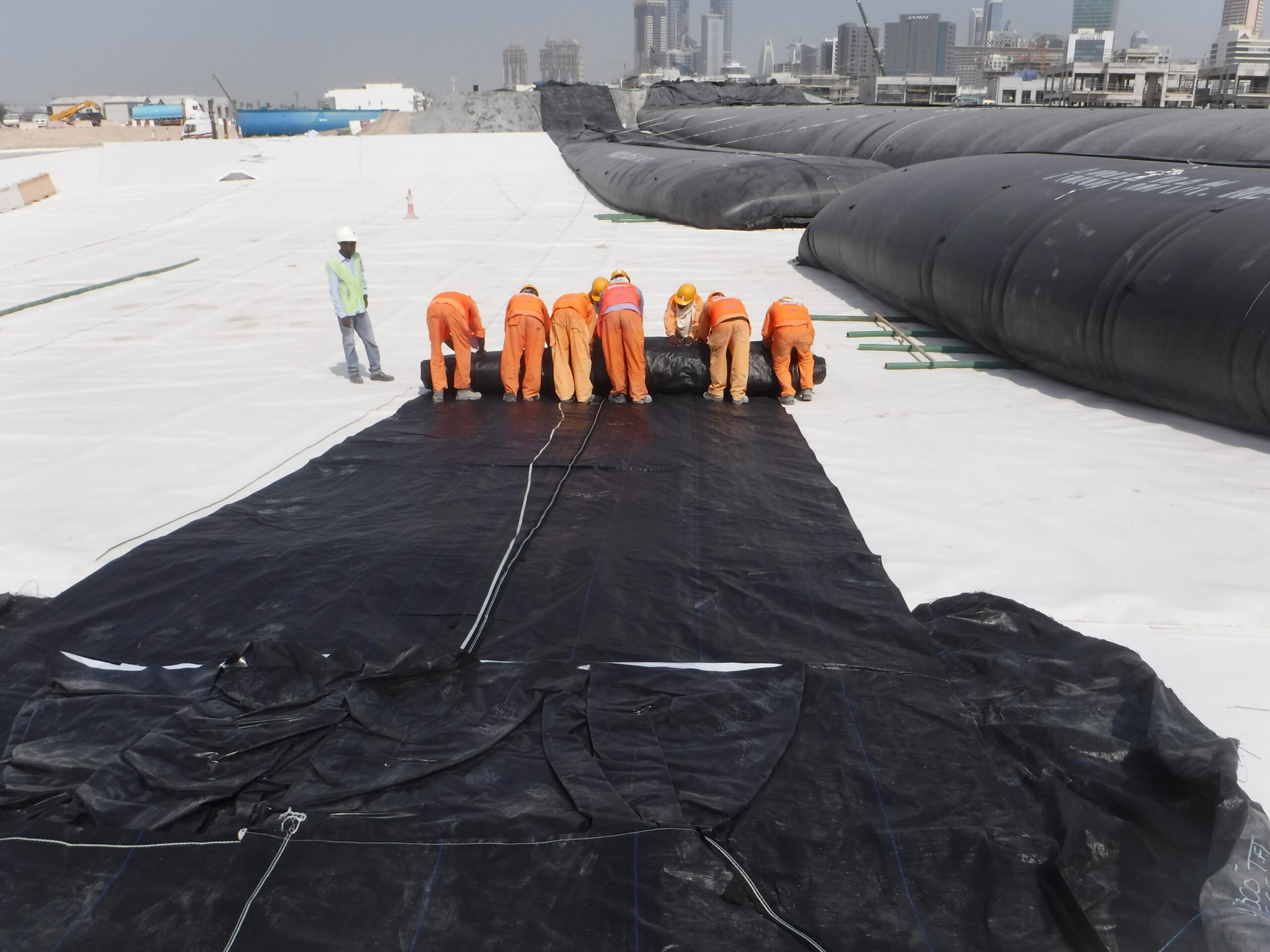
Workers are unroll a 4ft tall that will lay behind the "seepage hoses", in order to promote a ponding area for any seepage to collect.
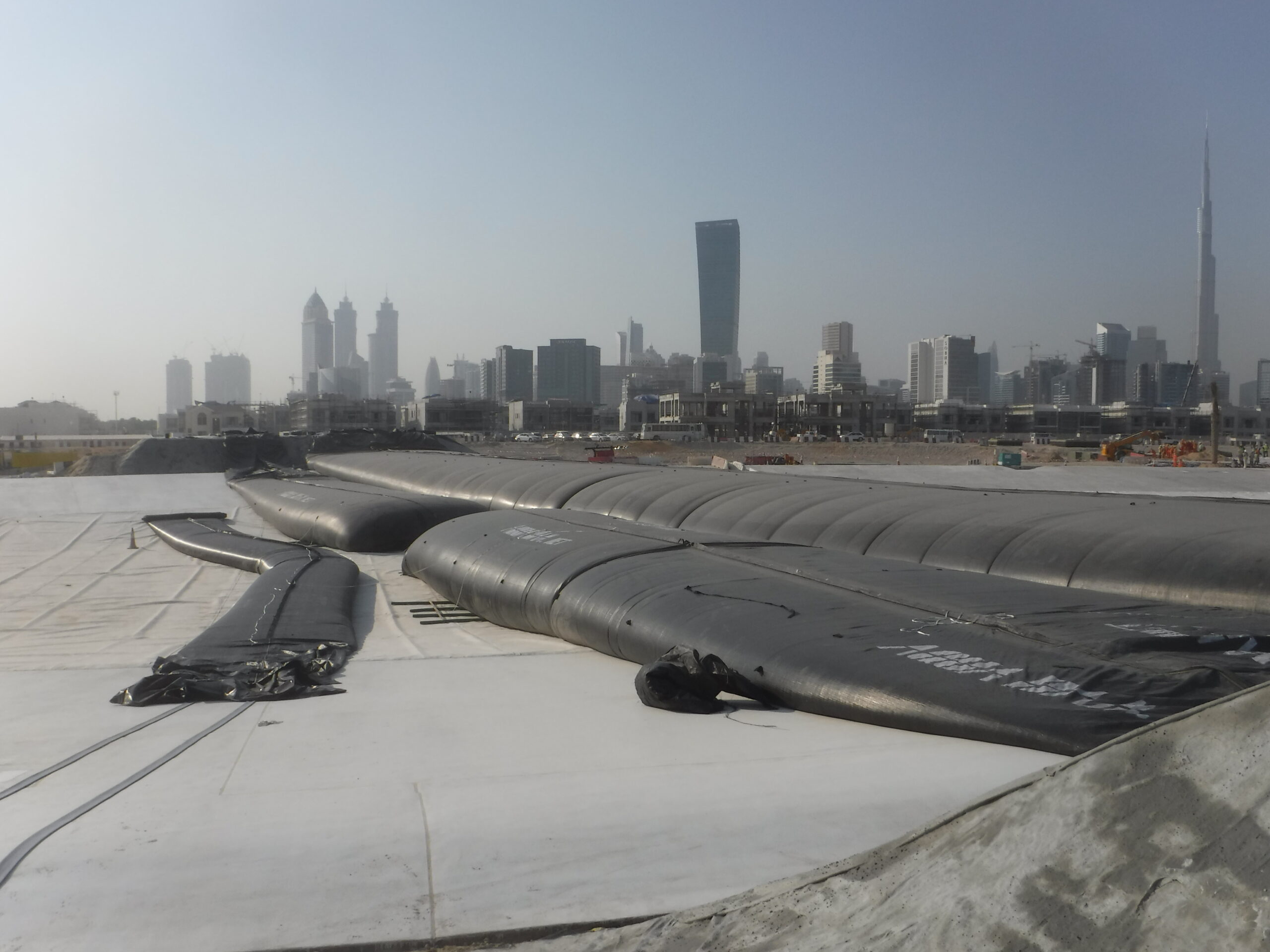
A 4ft tall AquaDam was deployed behind the series of AquaDams, in order to create a seepage impoundment area, where seepage water would collect and be removed with an electric sump pump.
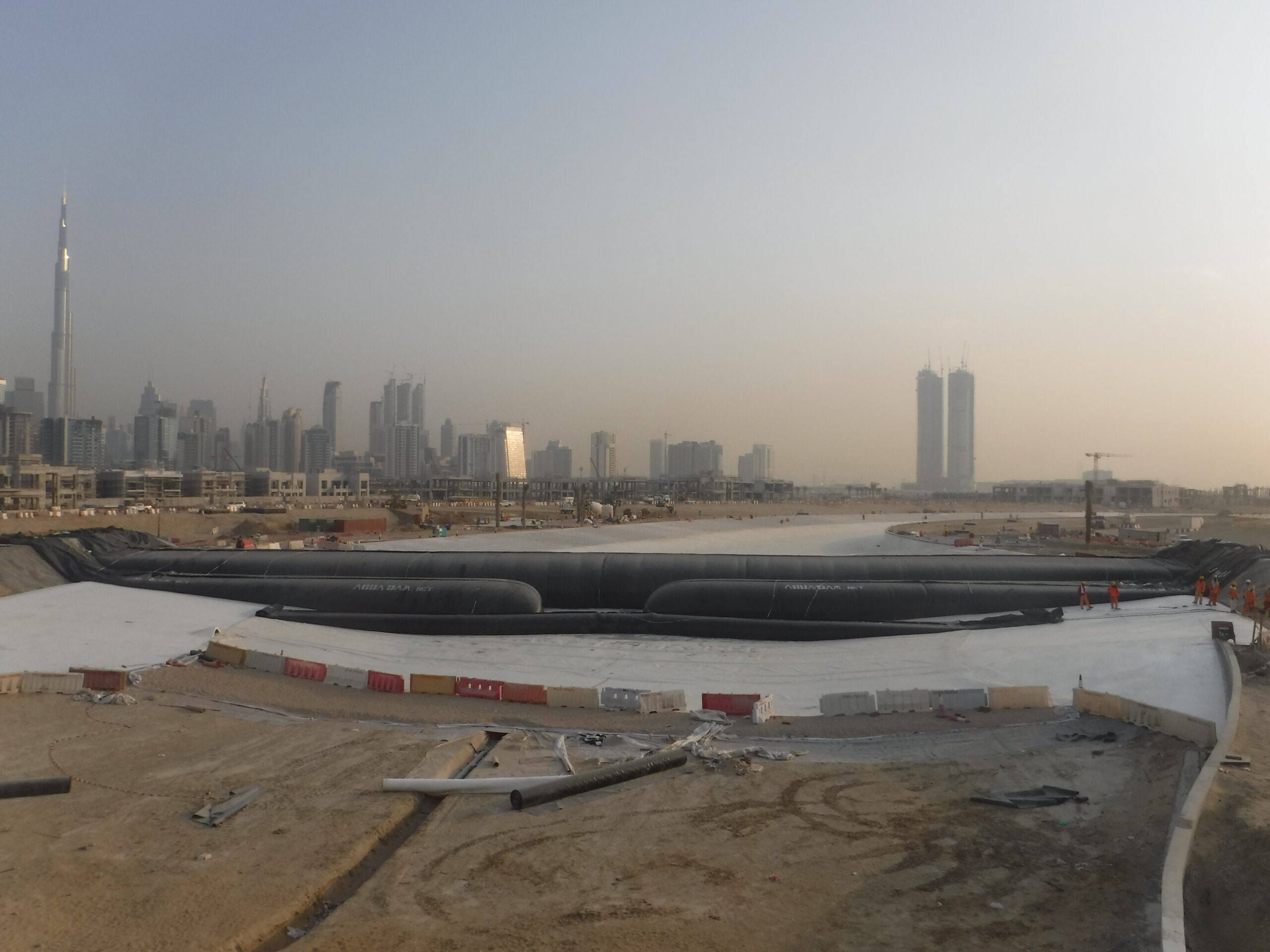
Now that all AquaDam cofferdam system is in place, it is time to put a UV protective cover polyethylene tarps over the AquaDams. There are two (2) UV protective cover tarps that each are 64ft wide by 300ft long and 12mil thick.
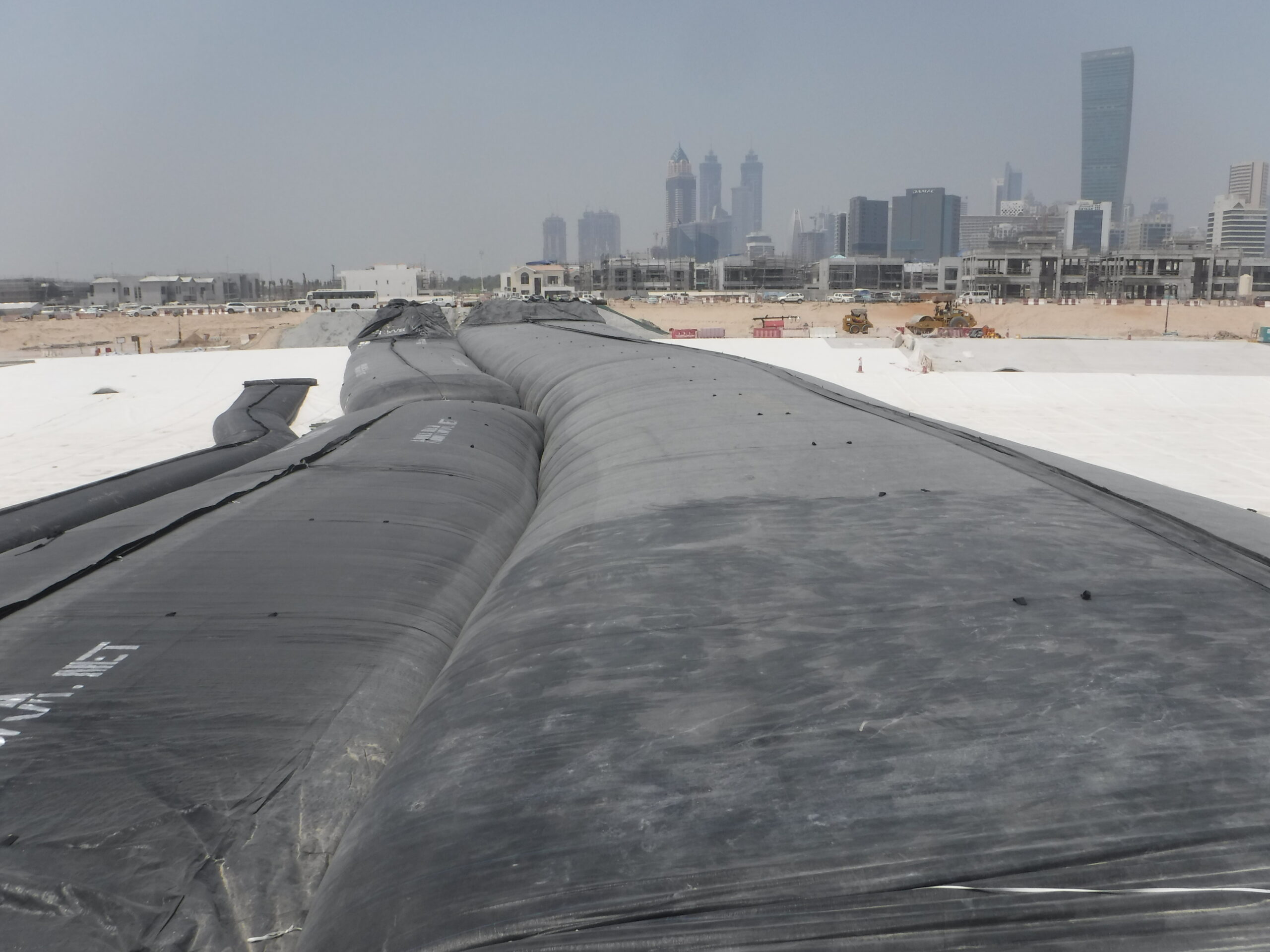
Here we can see a snug fit between the primary and secondary AquaDams.
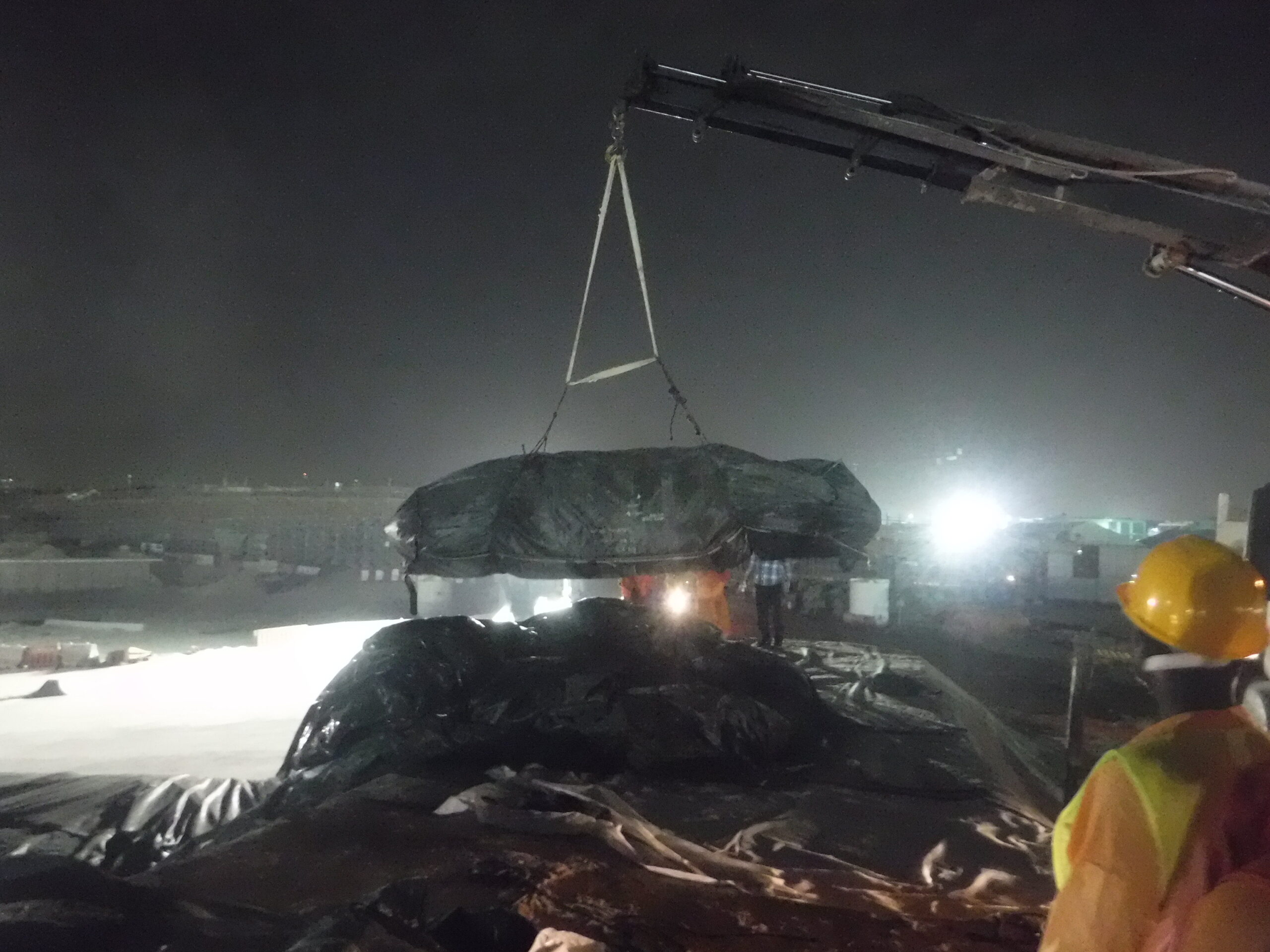
A crane has been employed to place the UV cover tarp on top of the AquaDam cofferdam system. The UV cover tarp comes on a roll and is wrapped in a protective layer.
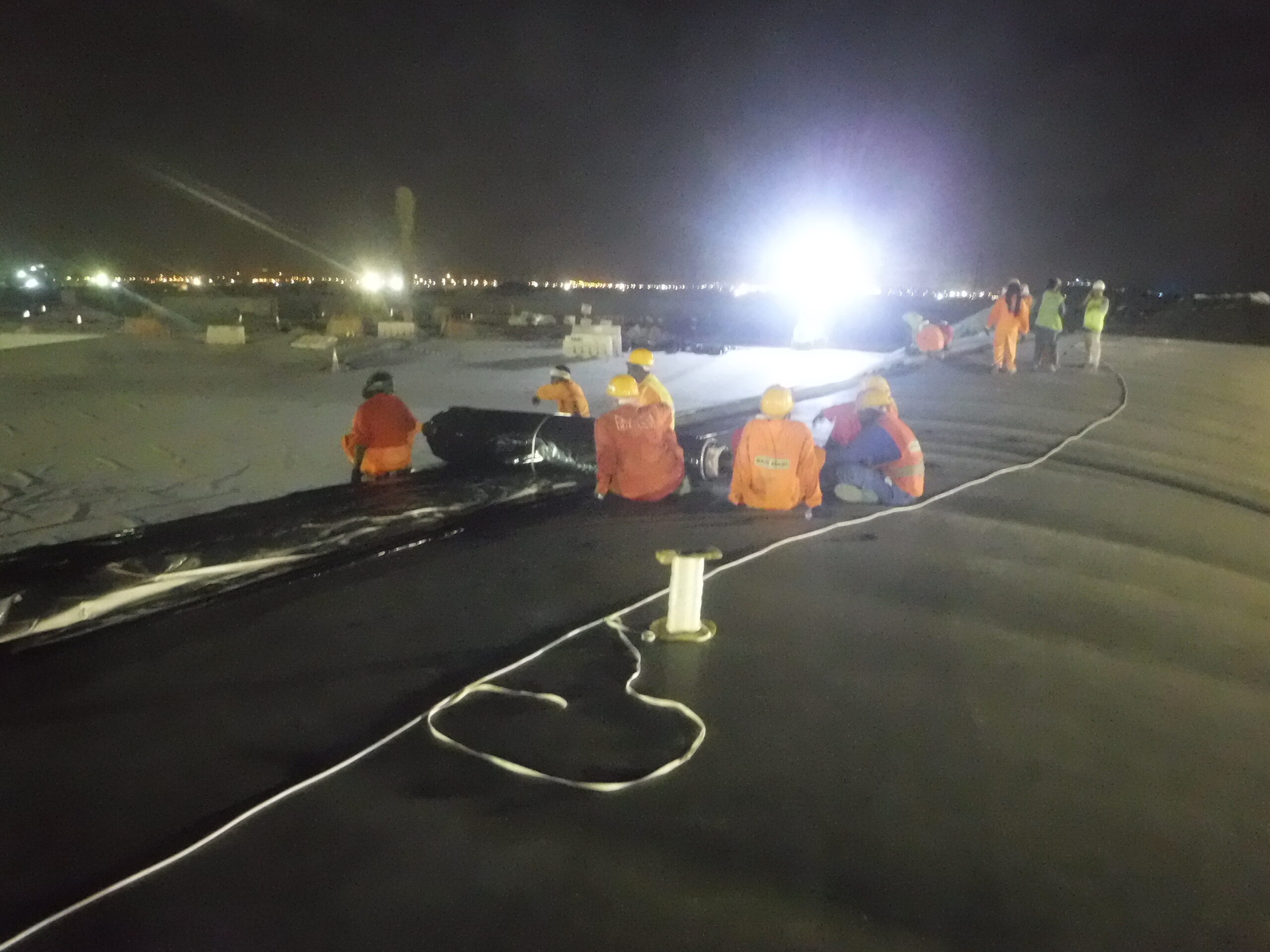
Workers are unrolling the UV cover tarp along the AquaDam. This job was done at night, because the winds were minimal at this time.
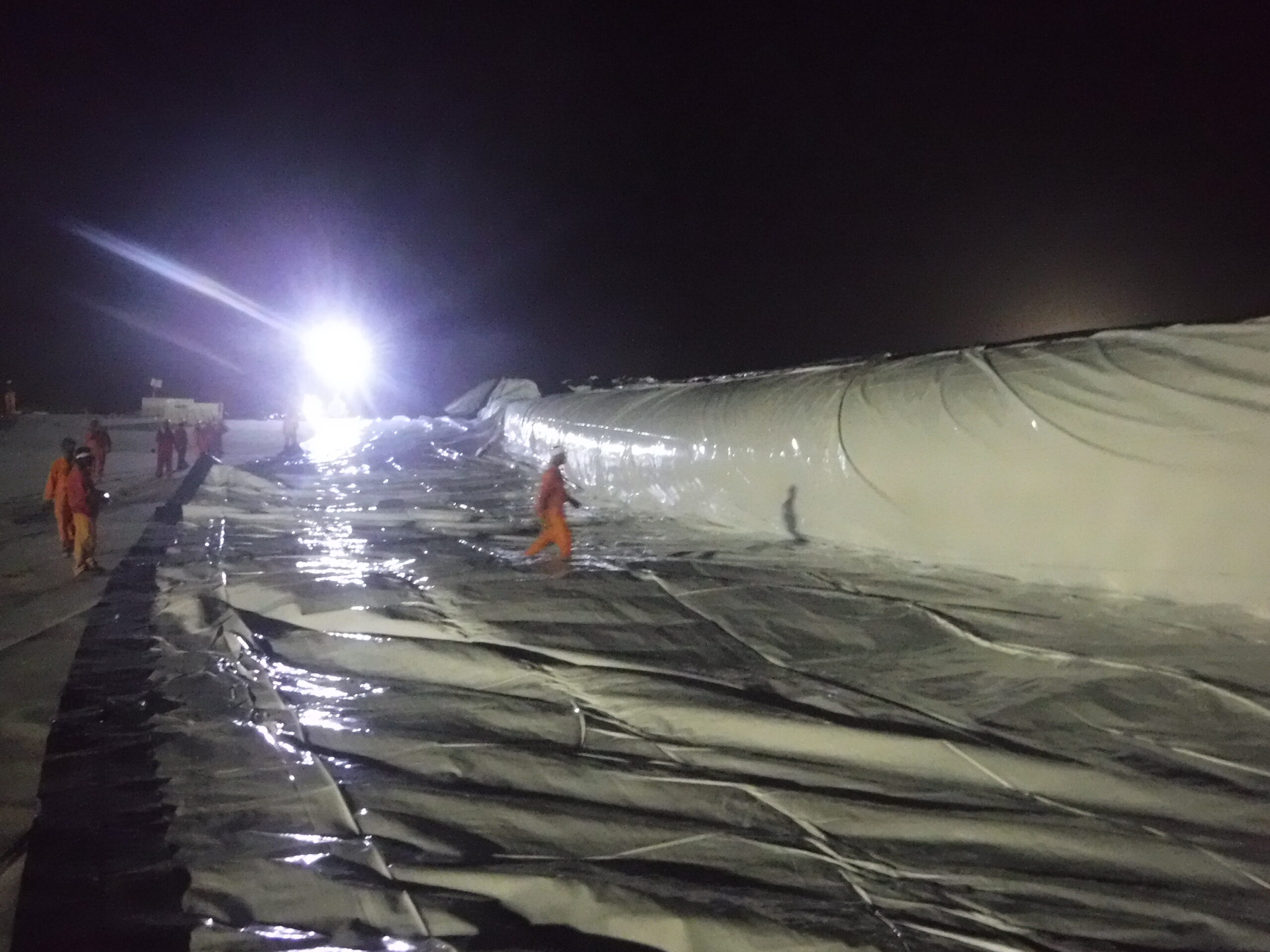
Here we can see one (1) of the UV tarps being unrolled, unfolded, and laid down the side of the primary 16ft tall AquaDam.
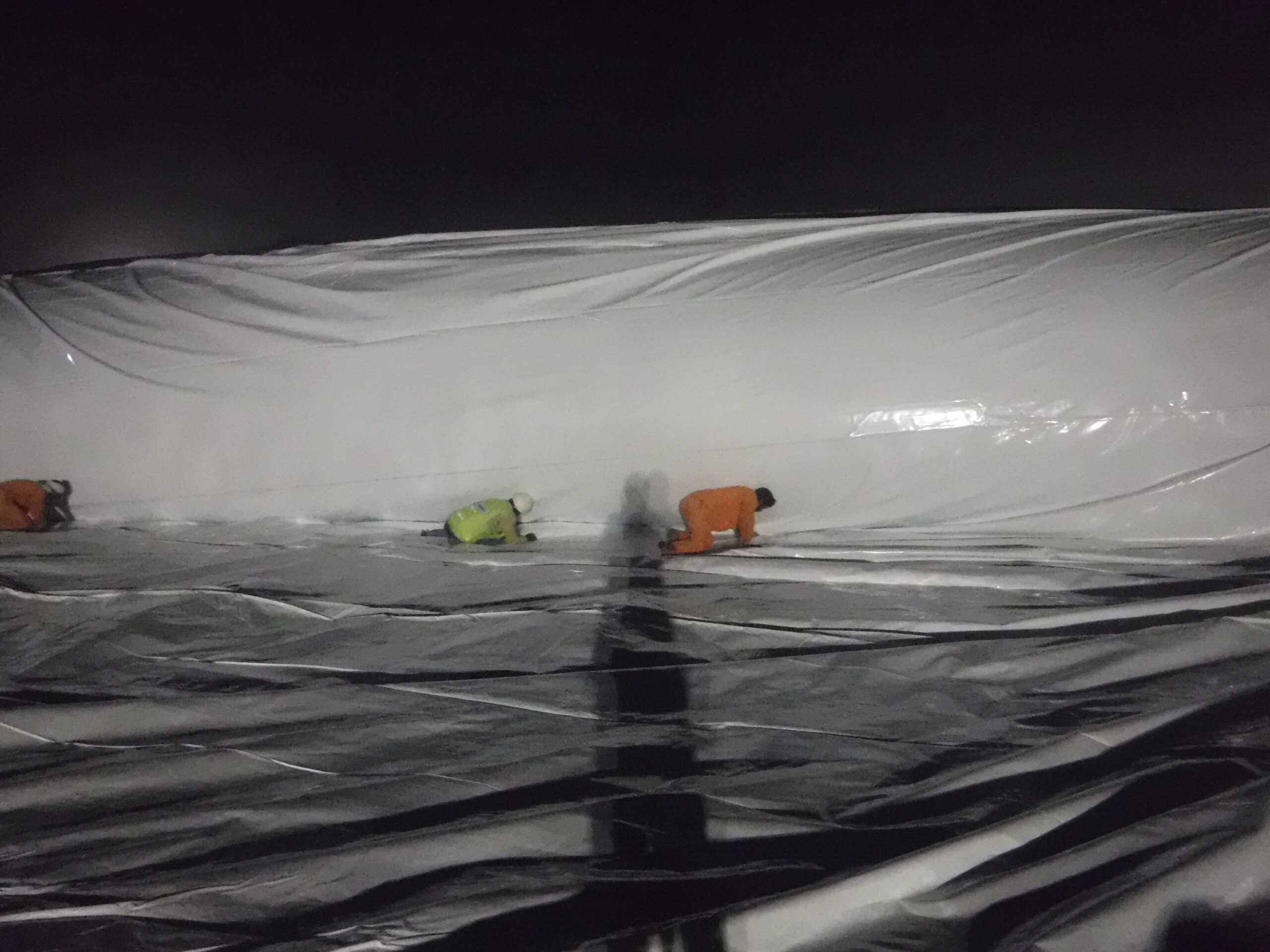
Slack from the UV tarp was tucked under the bottom of the AquaDam to help the tarp in place.
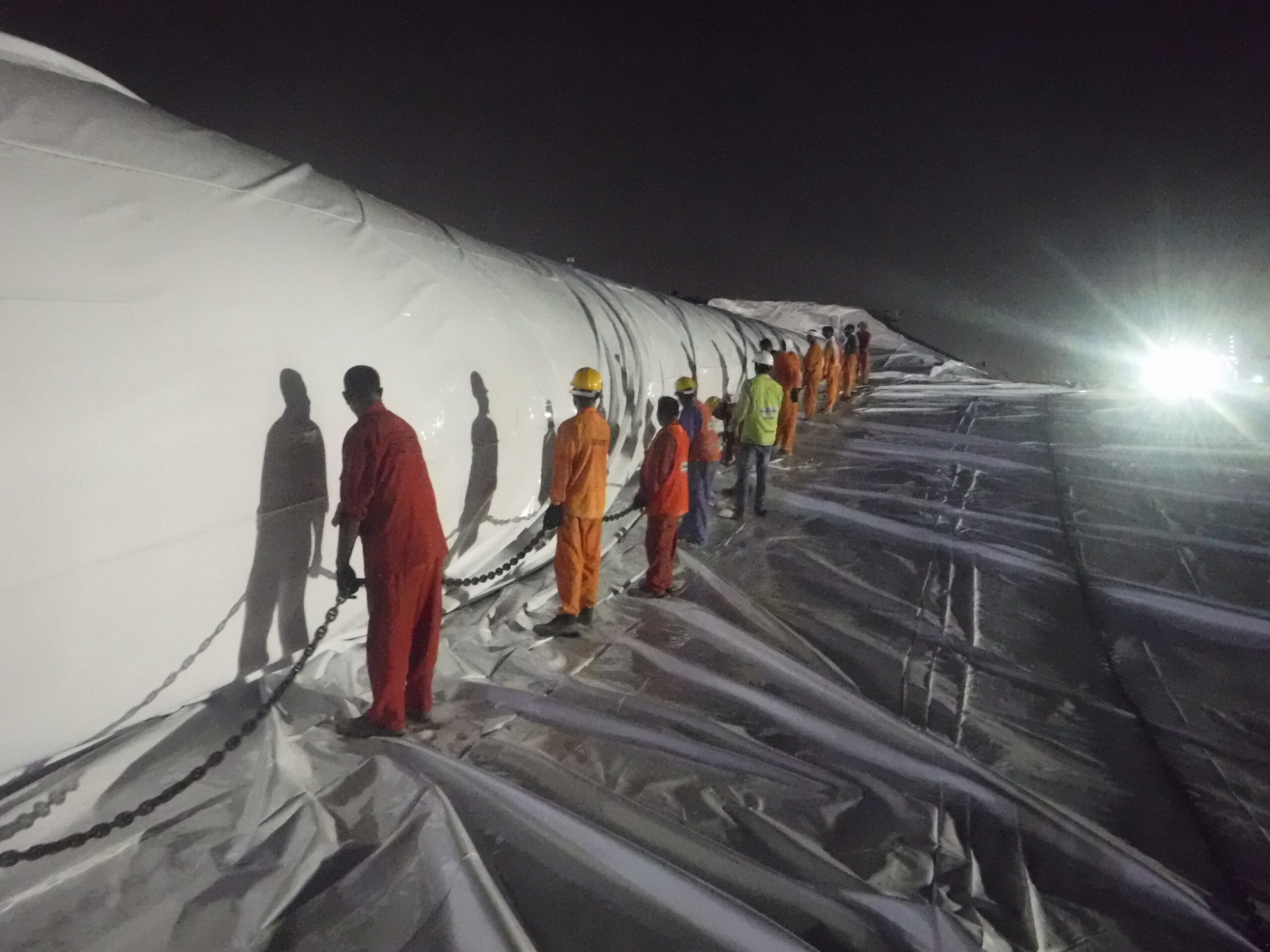
Chains were used as an anchor to weight down the tarp. The additional weight reduces opposing lift forces from the wind (when dry) and floating caused by air pockets under the tarp (when submerged under water). Chains work well because when the job is done, the end of the chain can be pulled up by a worker and removed all at once.
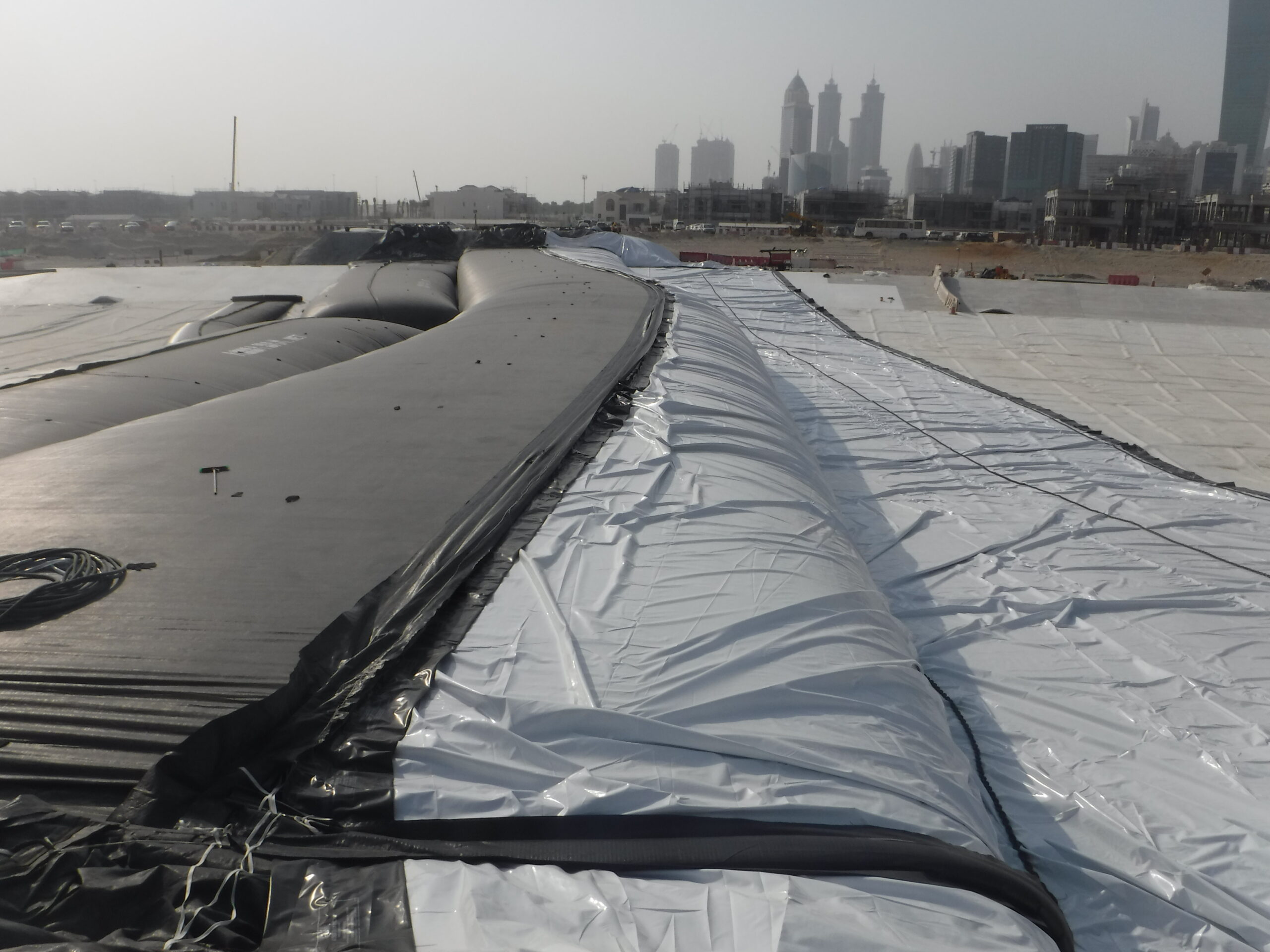
Here we can see the top end of the UV tarp that was sewn to a piece of material that runs along the length of the primary 16ft tall AquaDam.
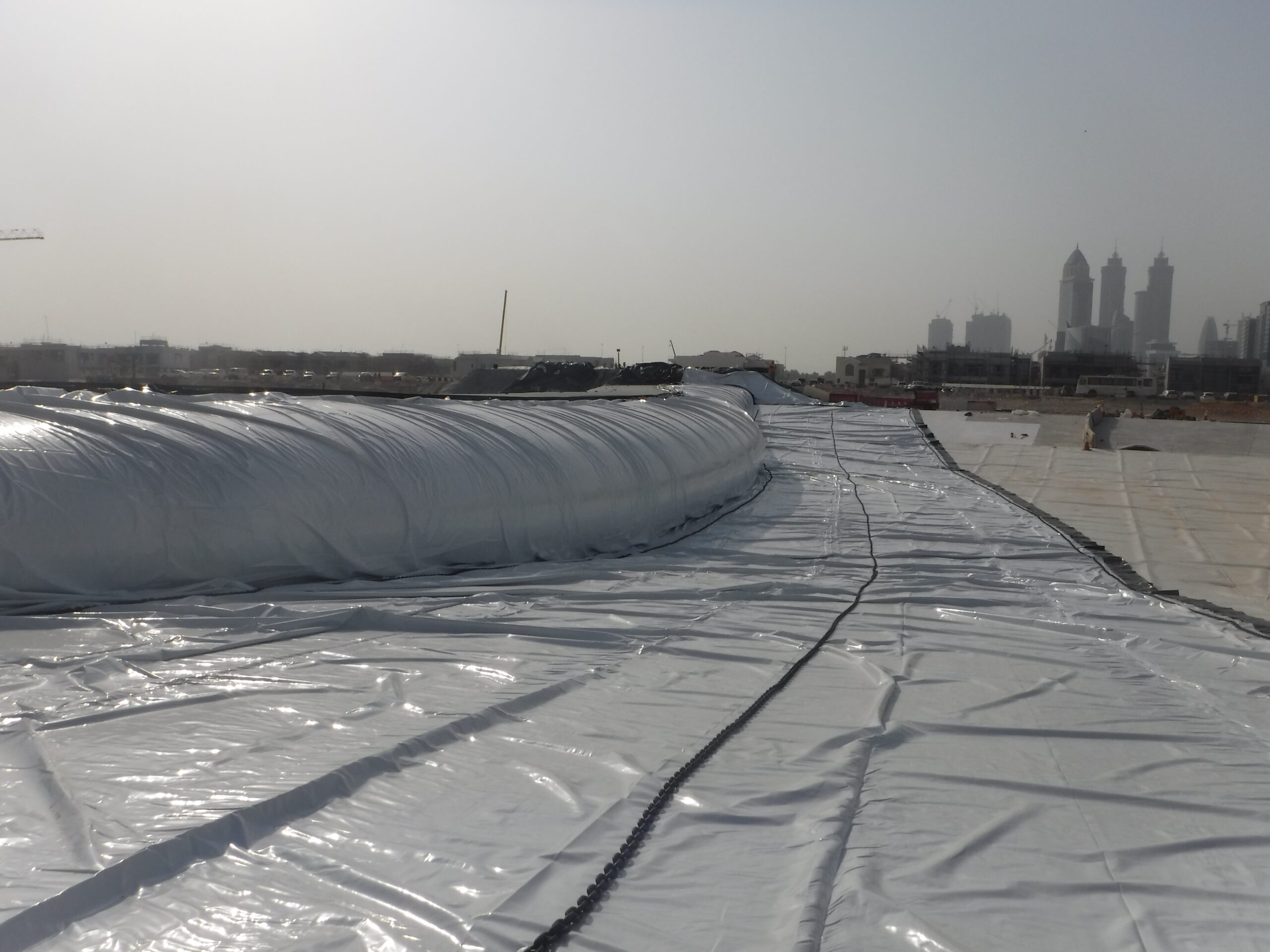
Side shot showing the lagoon-side of the UV tarp overlaid with chains.
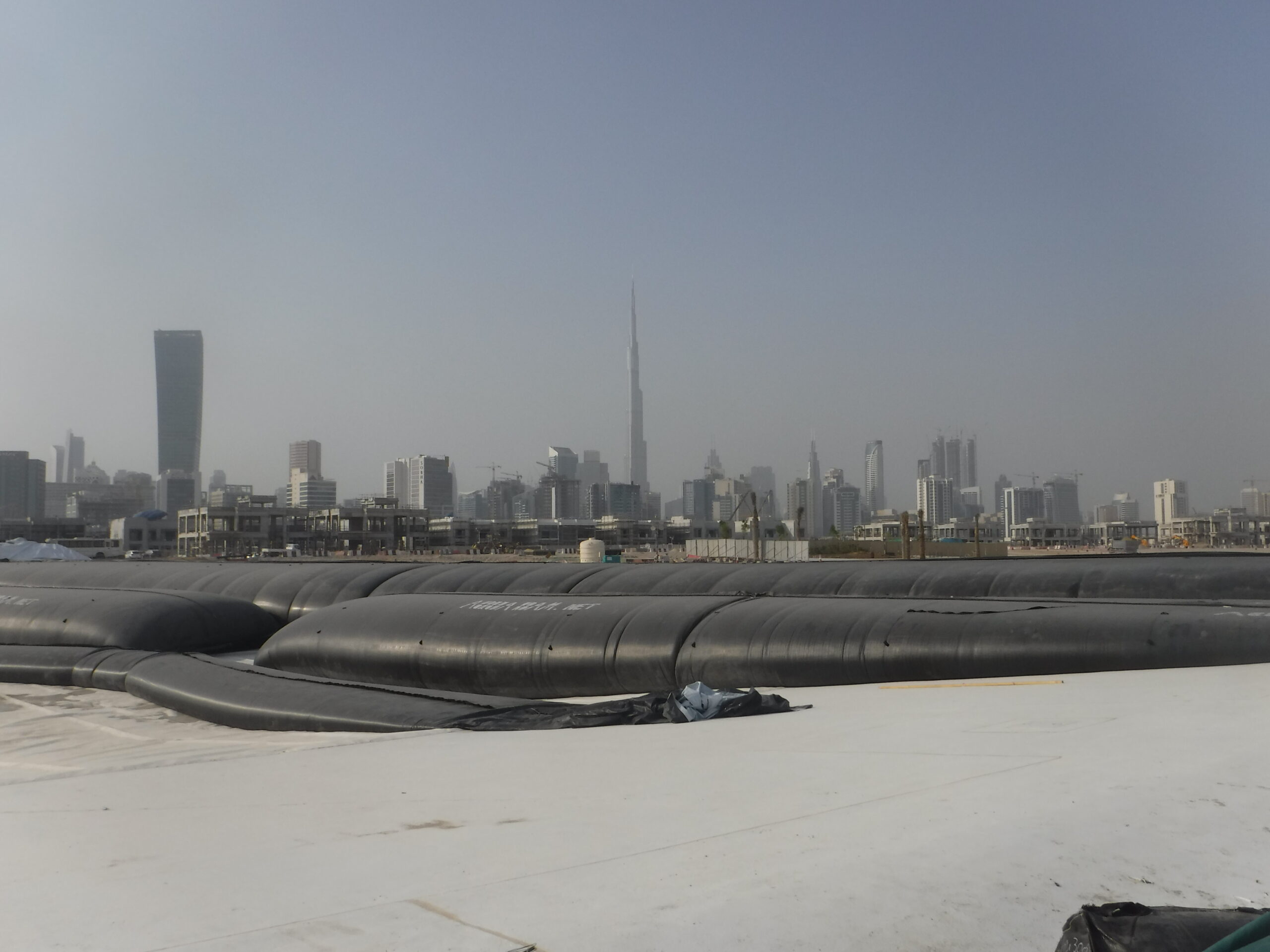
A photo taken from the other side with Burj Khalifa in the background.
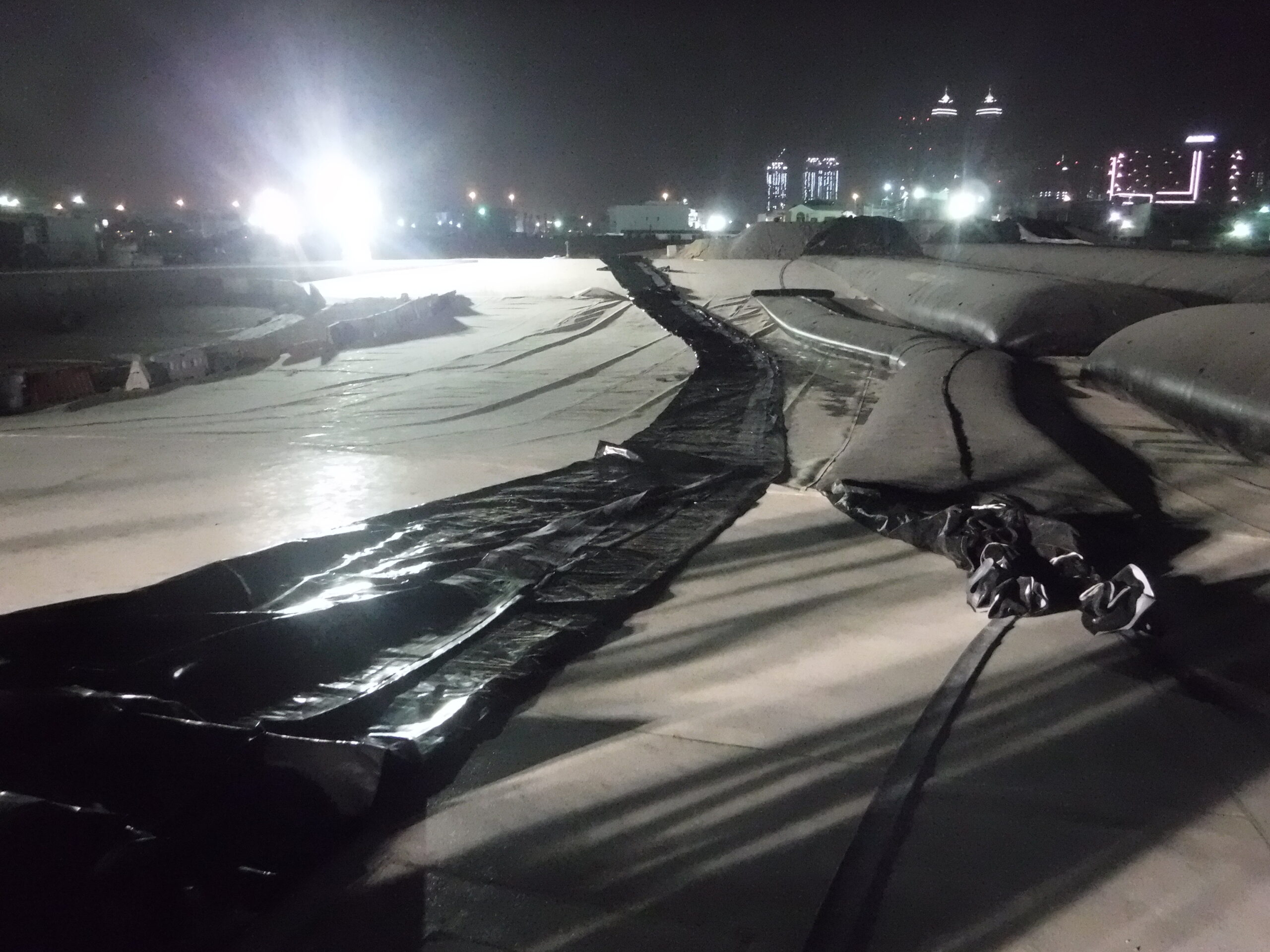
The second UV tarp has been unrolled across the lagoon channel.
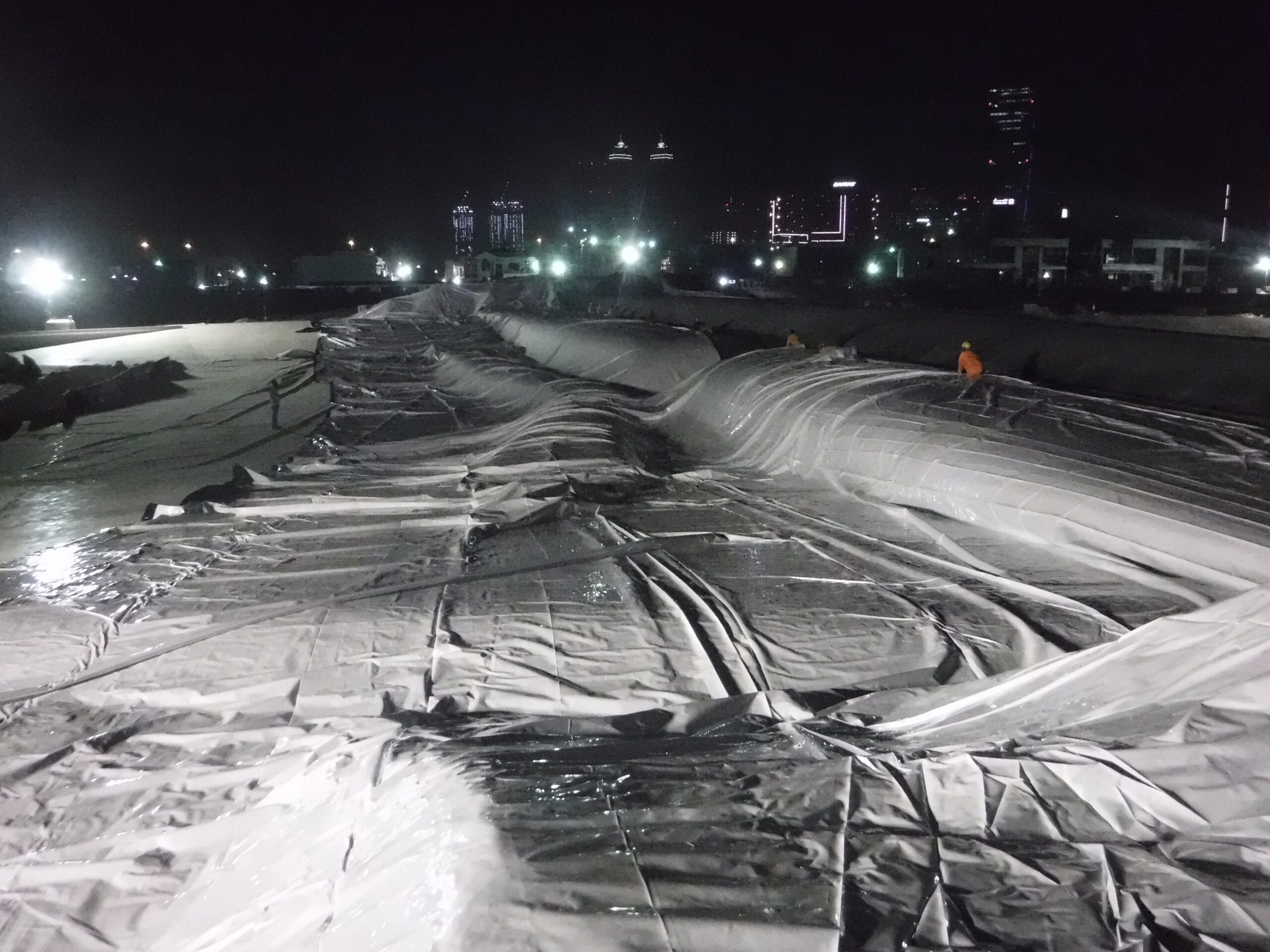
The UV tarp has now been unfolded over the 4ft and 12ft tall AquaDams.
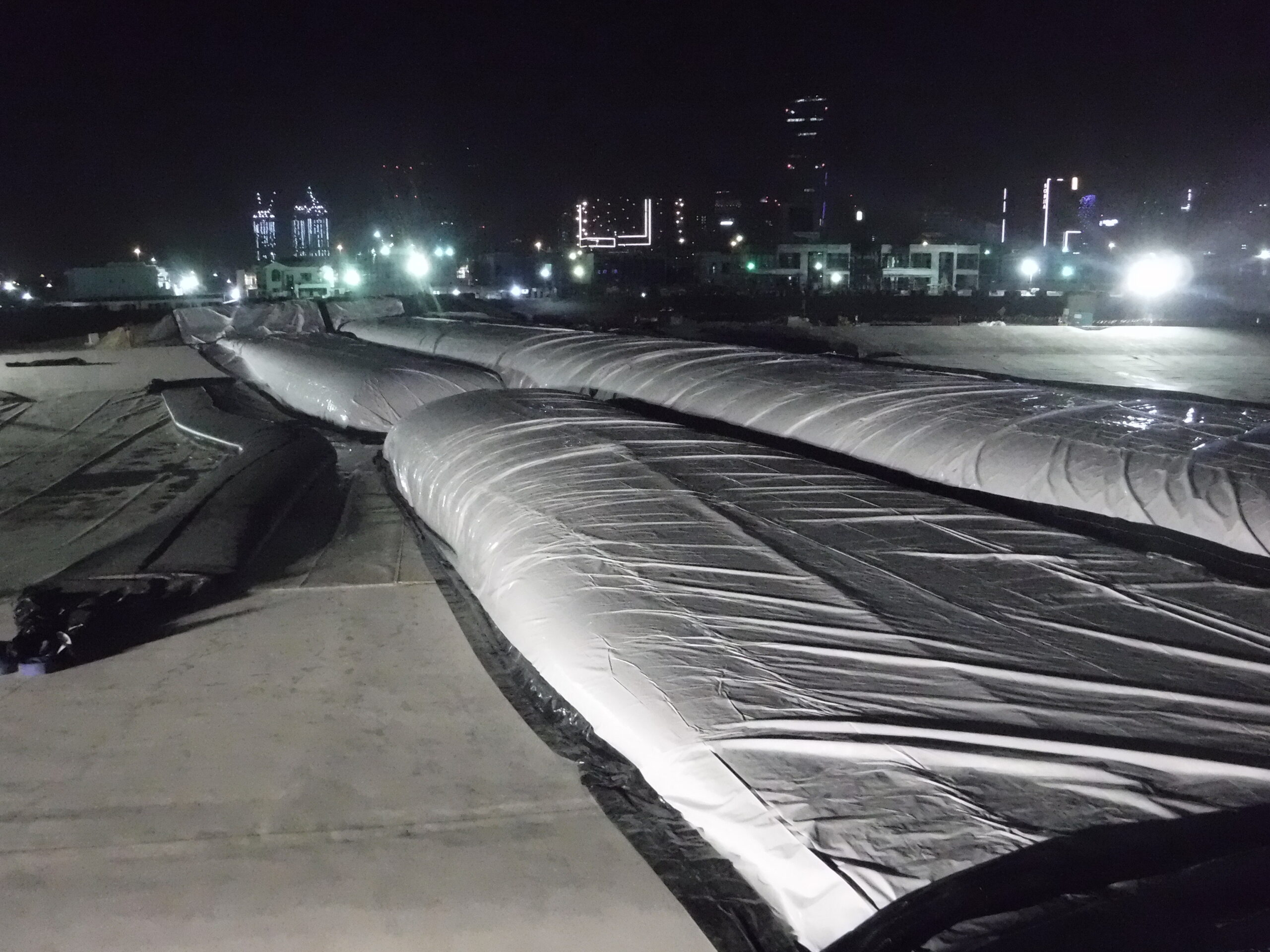
With a bit of work, the UV tarp is pulled up on top of the primary 16ft tall AquaDam and sewn to the top of it.
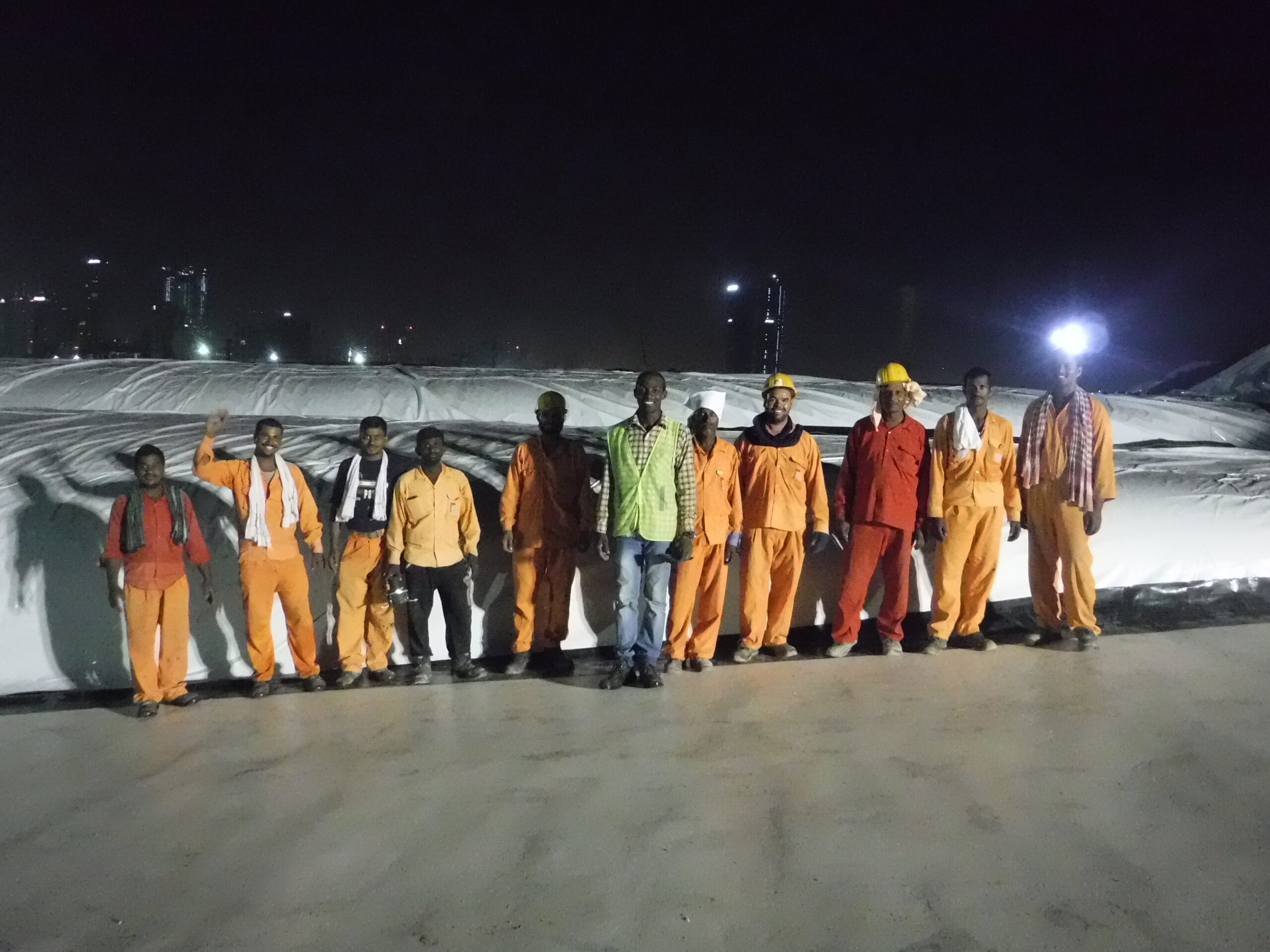
Installation crew. We could not have done it without them! Thank you!
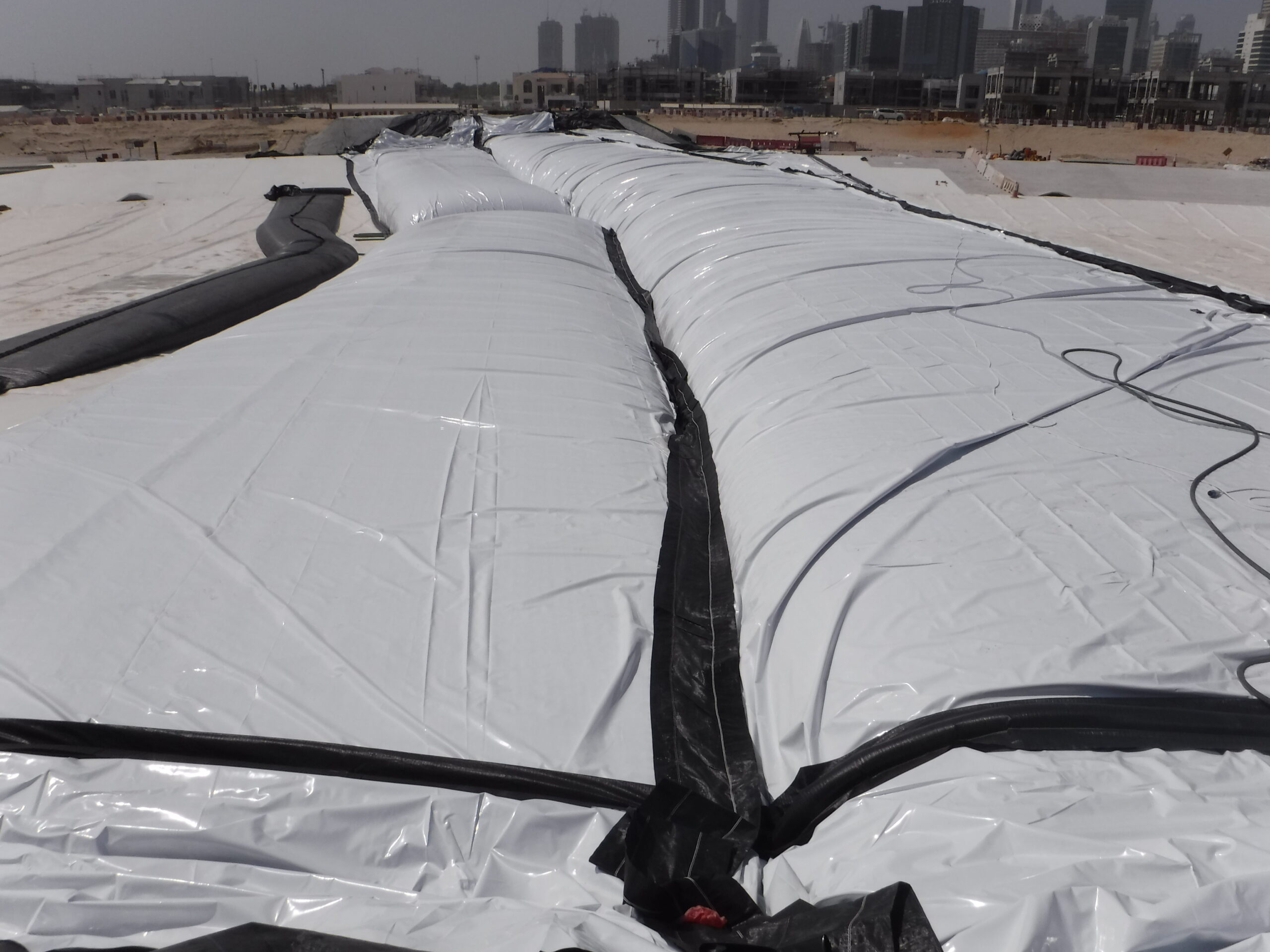
Black 6in tall AquaDams have been laid on top of the tarps, across at both ends, and down the length of the cofferdam between the 12ft and 16ft tall AquaDams.
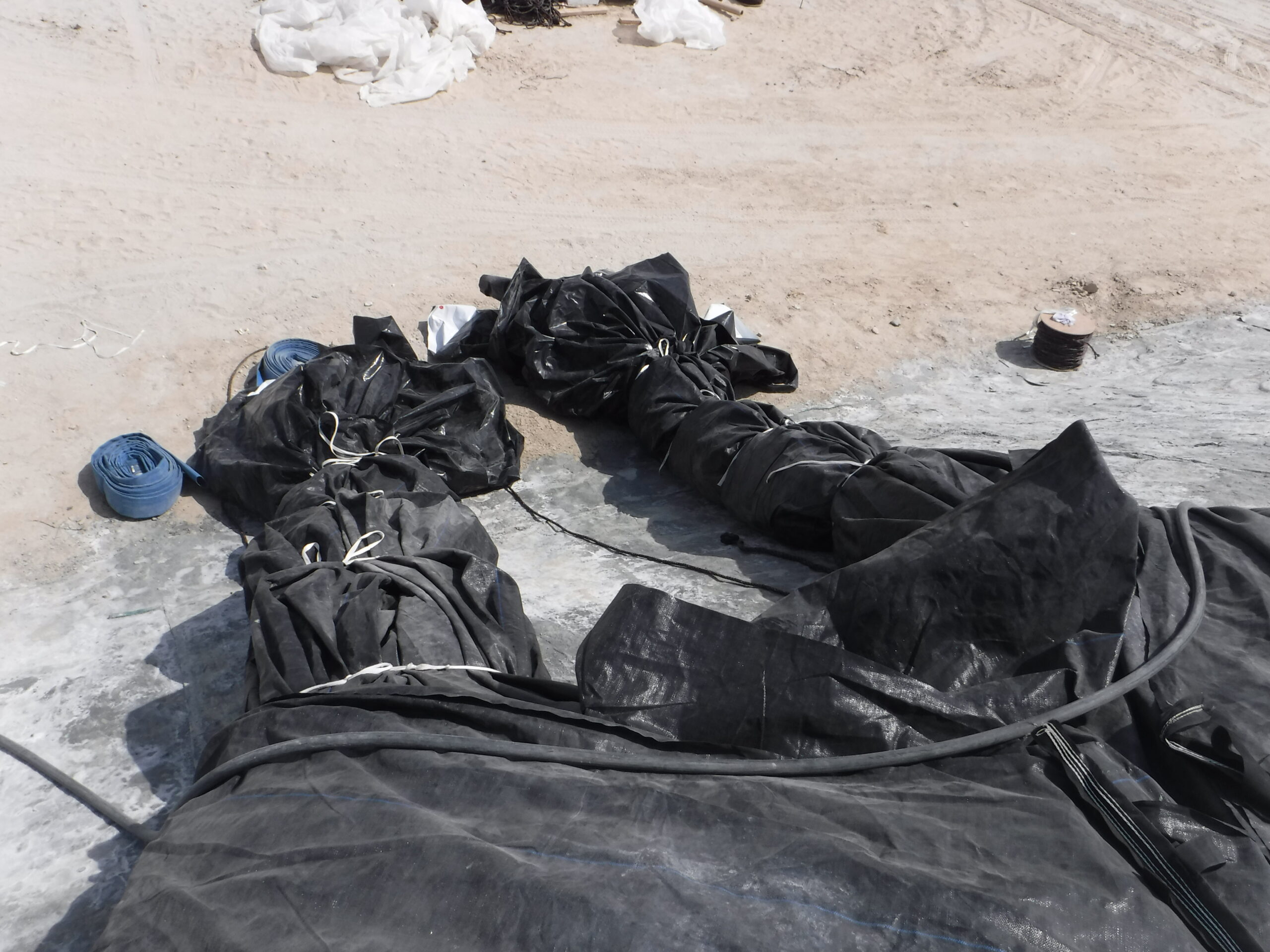
Fill-tubes of all the AquaDams are now bundled up and the fill hoses have been left inside the fill-tubes, for maintenance pumping as required.
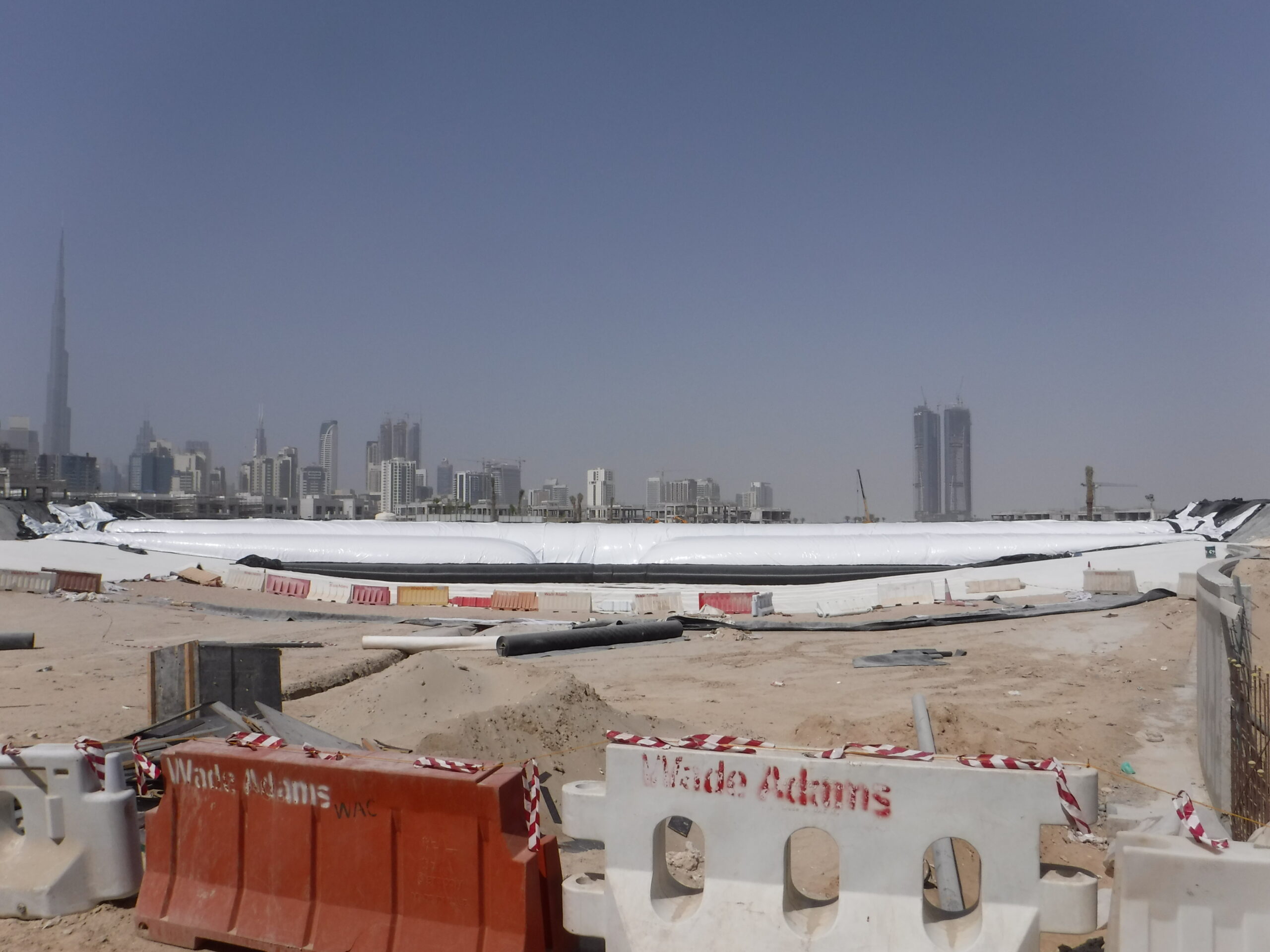
Here we can see a great view of the entire AquaDam cofferdam system.
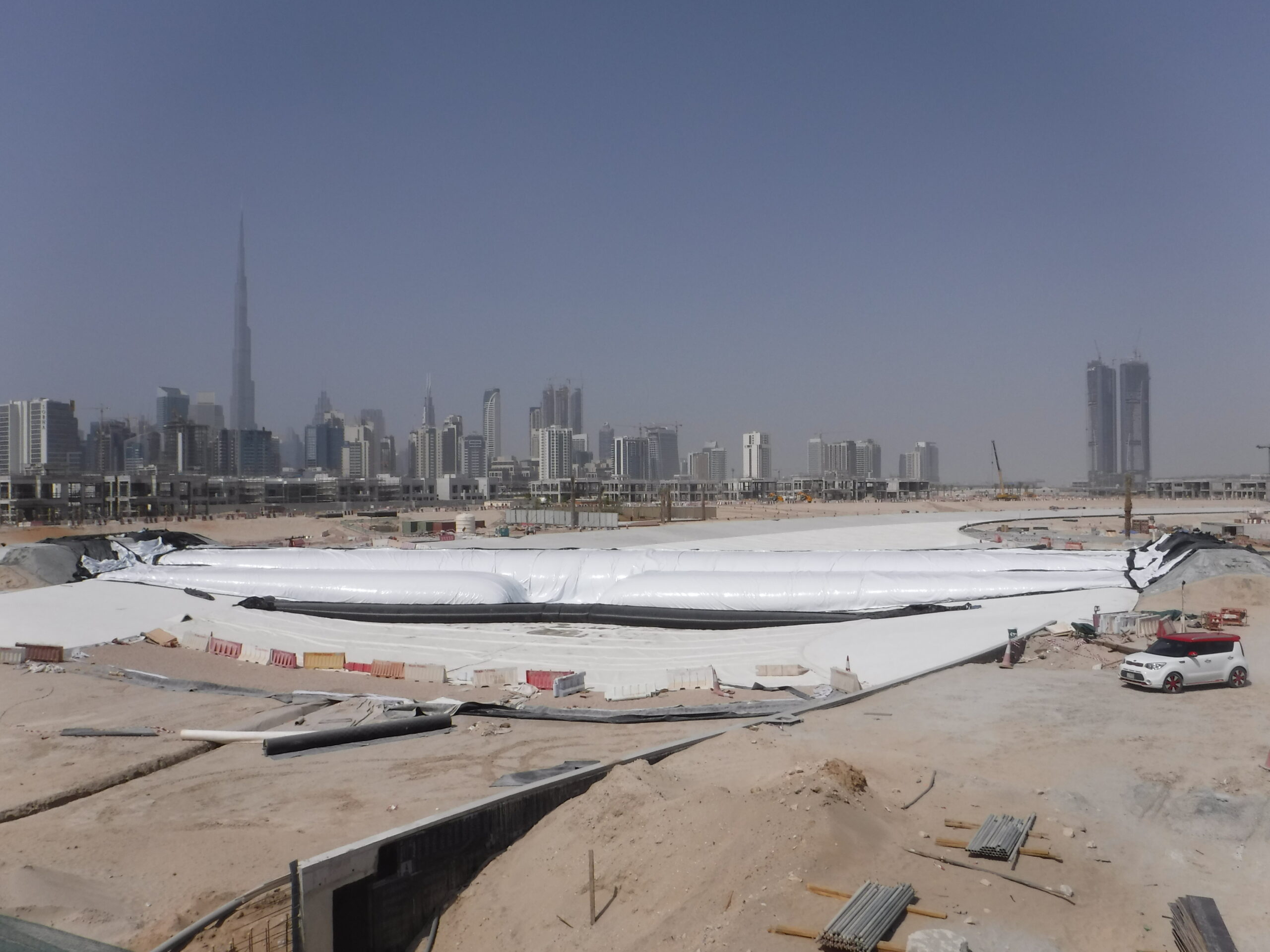
Another view of the entire AquaDam cofferdam system from even farther away.
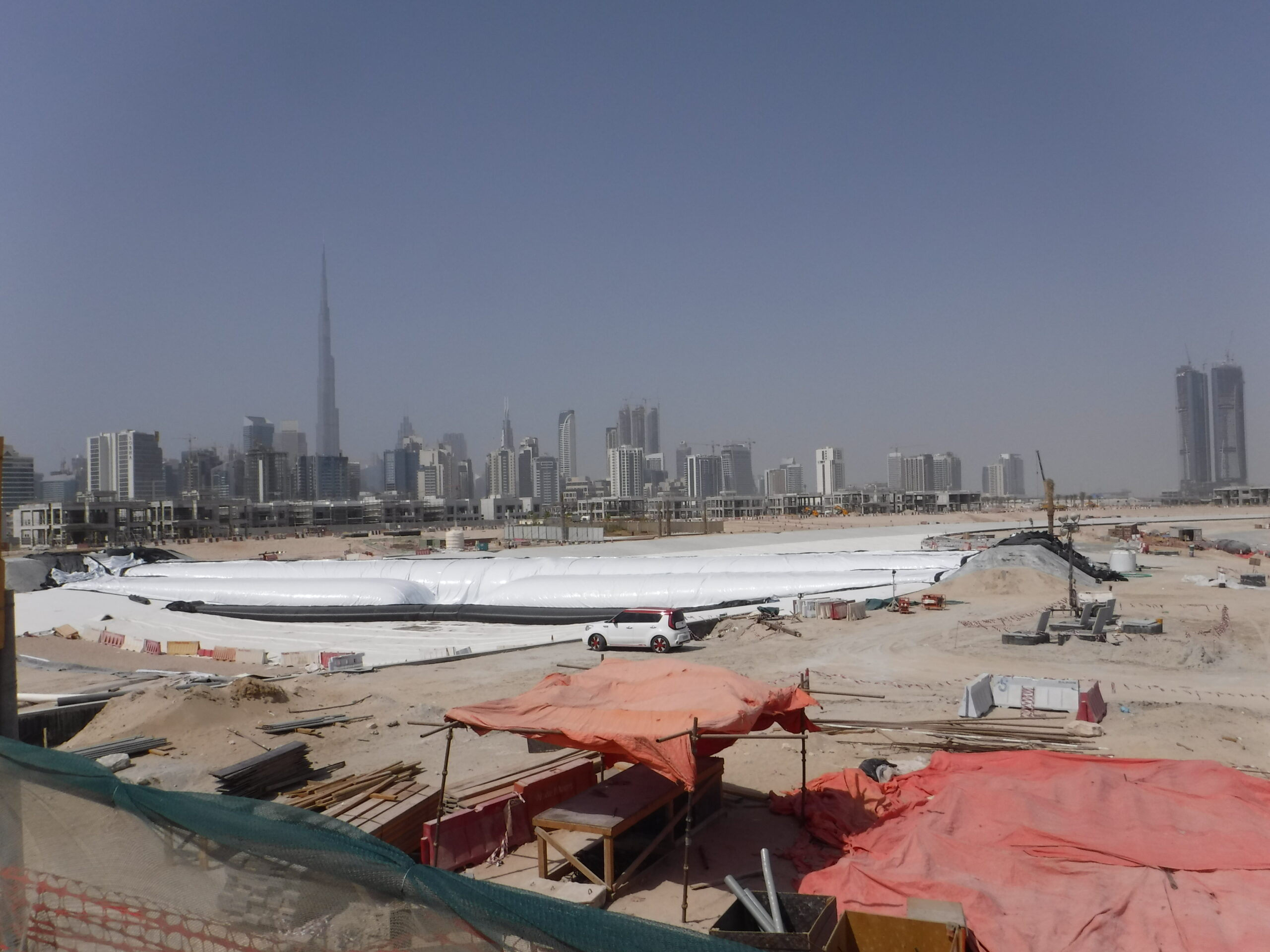
This AquaDam cofferdam system stayed in place for 8 months, during which time the finished lagoon channel was filled with water to a depth of 2.55m (8.4ft). After 8 months, the next section of lagoon channel was finished, ready to accept water, so the AquaDams were removed.
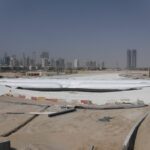
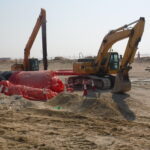
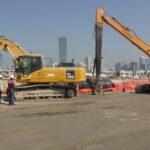
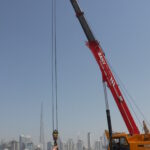
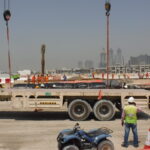
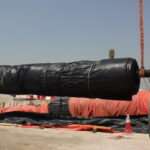
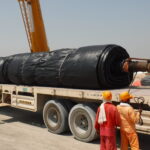
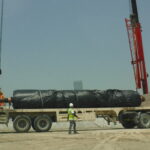
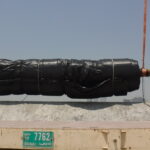
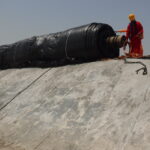
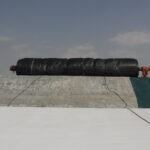
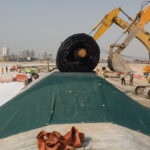
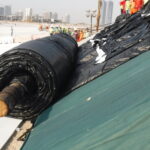
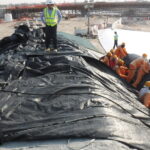
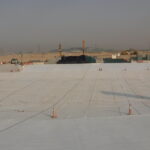
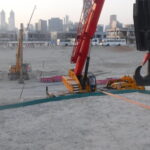
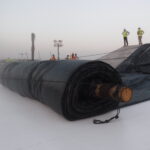
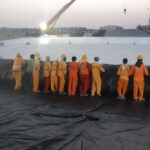
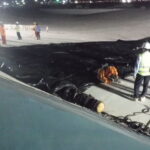
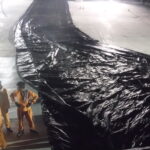
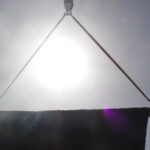
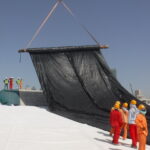
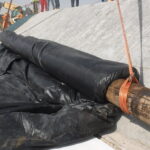
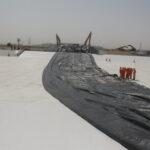
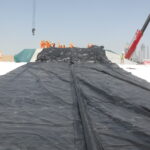
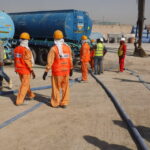
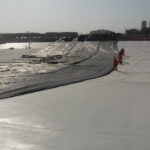
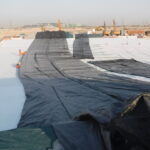
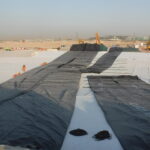
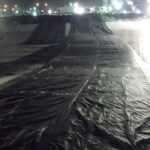
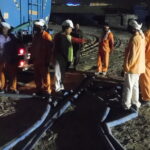
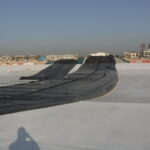
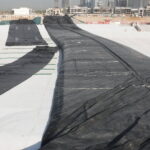
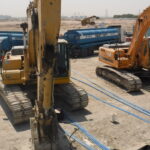
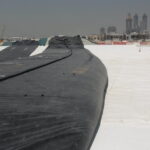
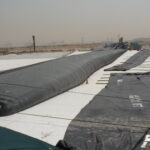
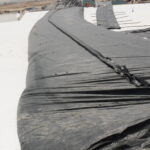

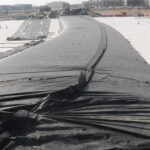
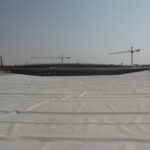
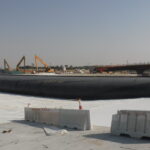
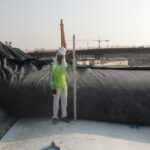
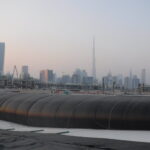
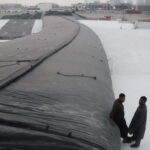
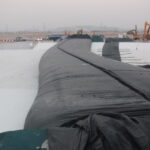
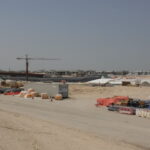
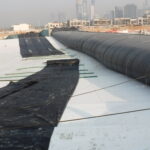
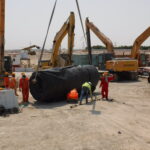
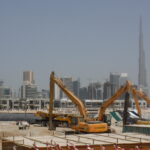

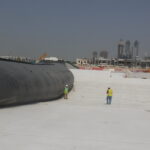
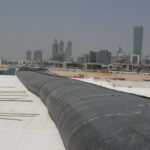
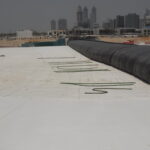
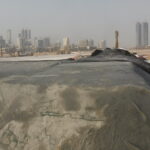
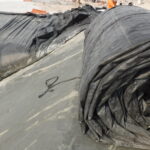

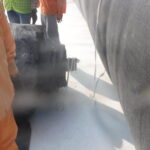
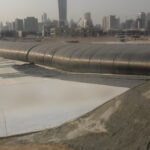
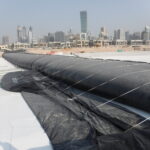
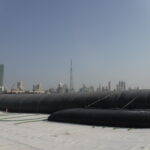
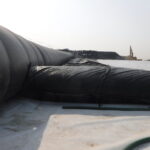
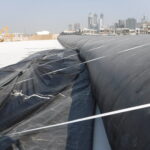
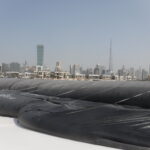
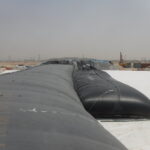
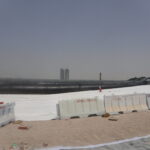
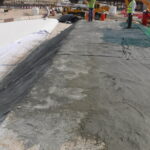
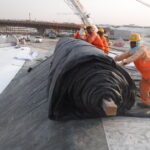
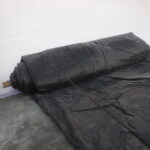
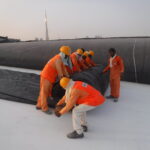

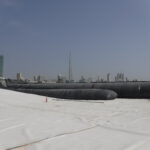
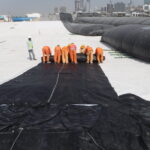
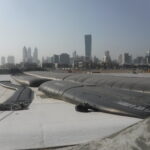
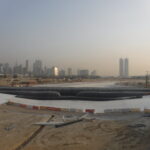
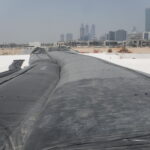
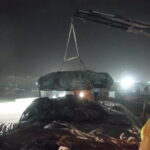
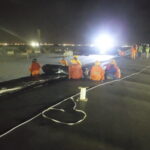
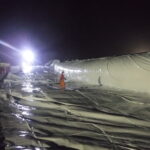
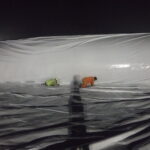
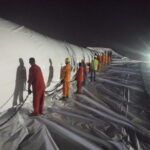
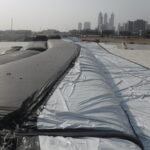
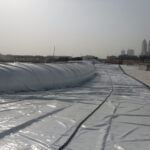
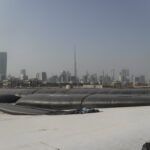
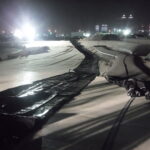

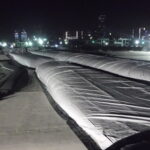

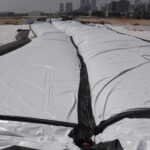

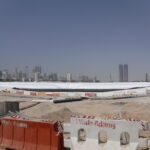
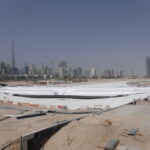
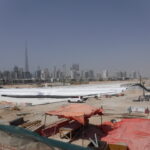
Crystal Lagoon Temporary Channel Isolation, Man Made Lagoon
